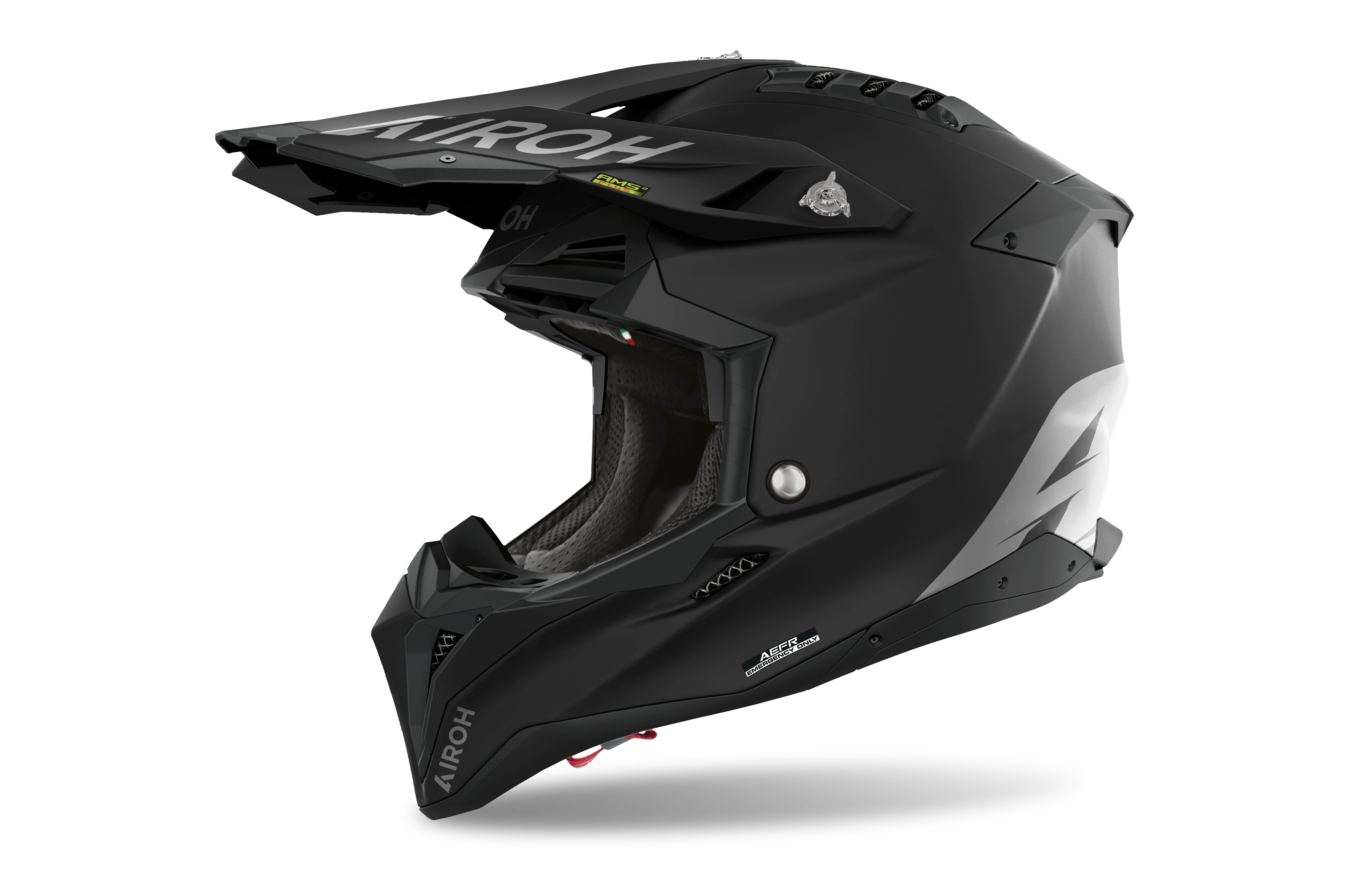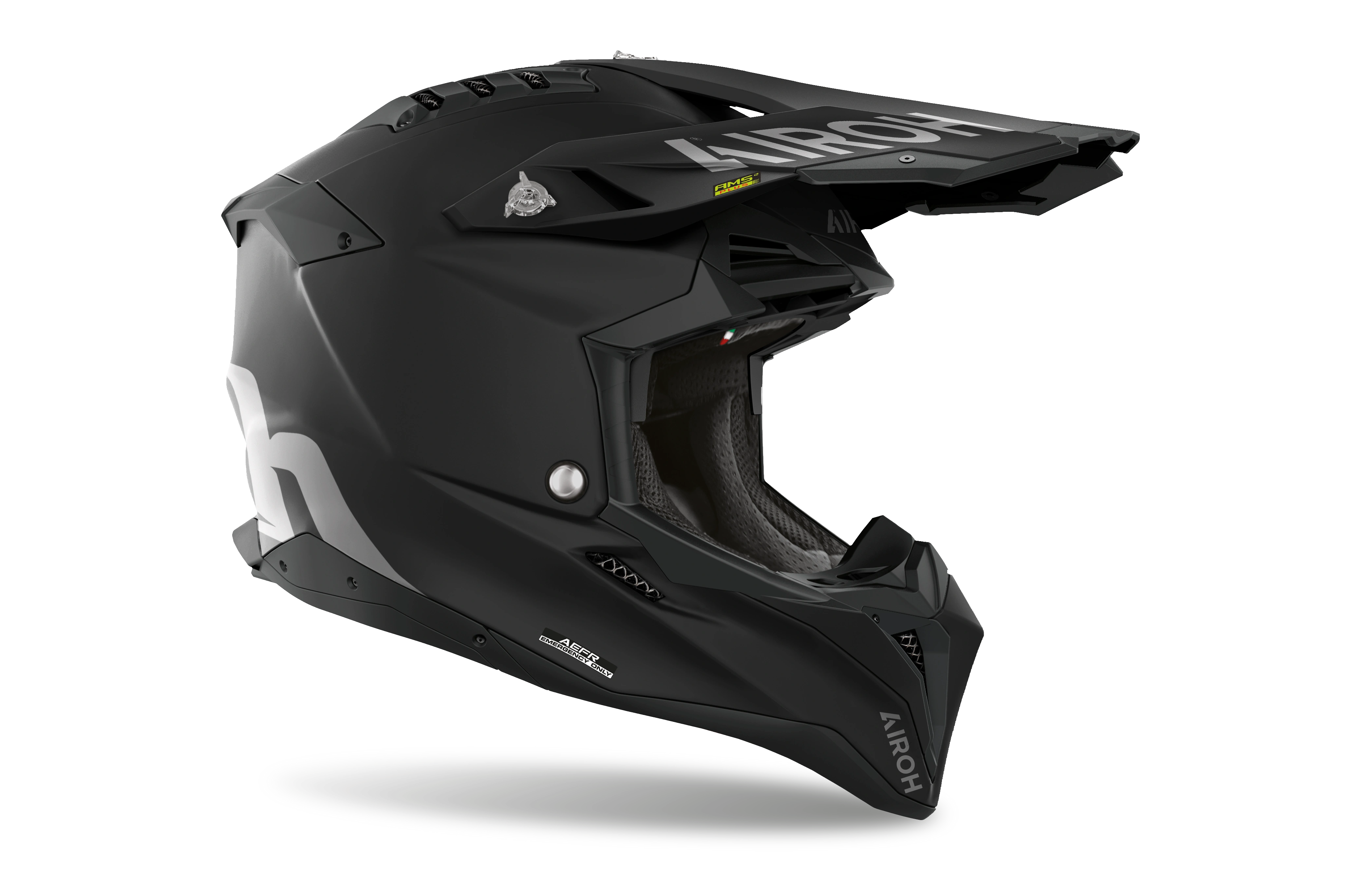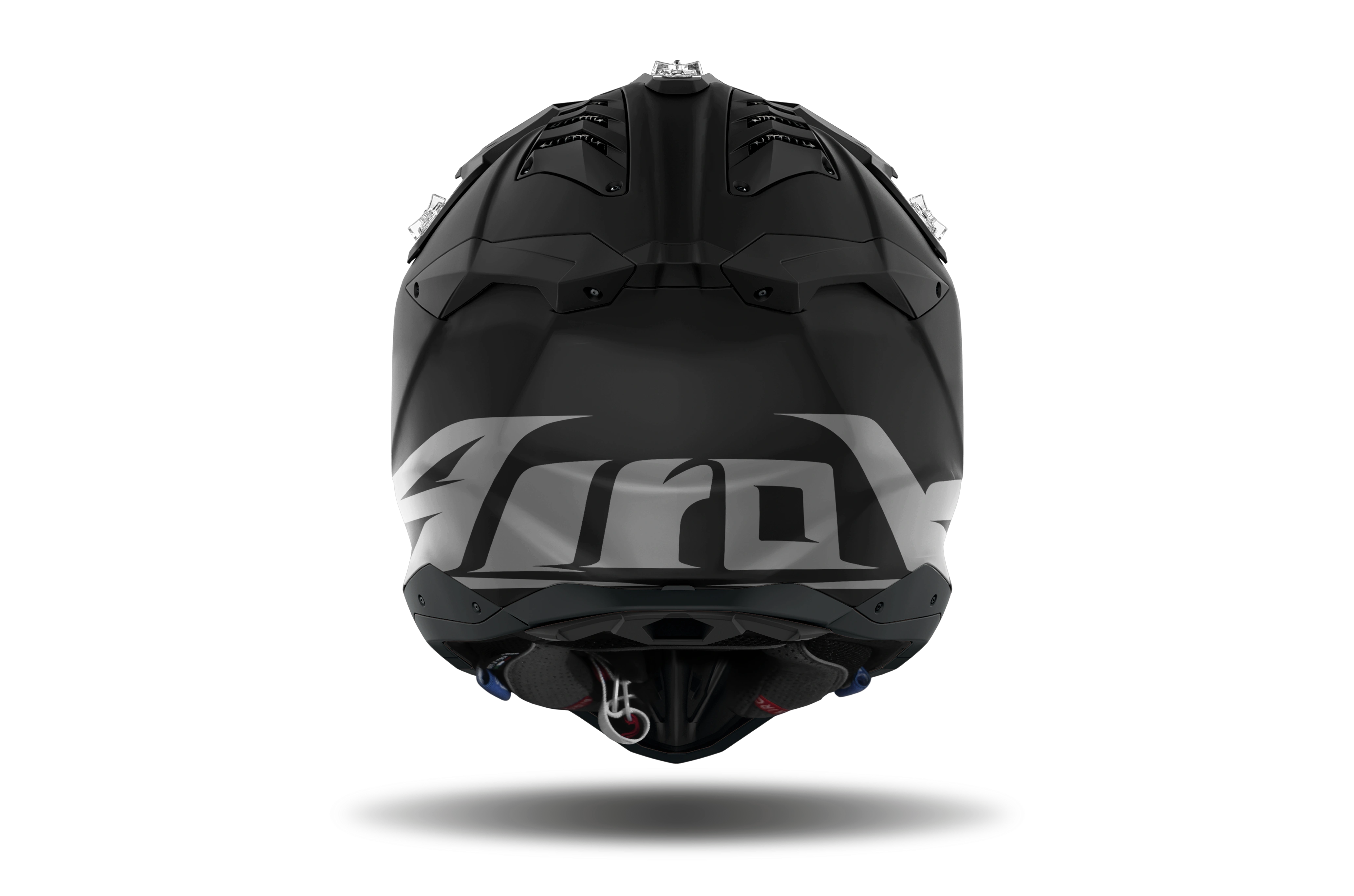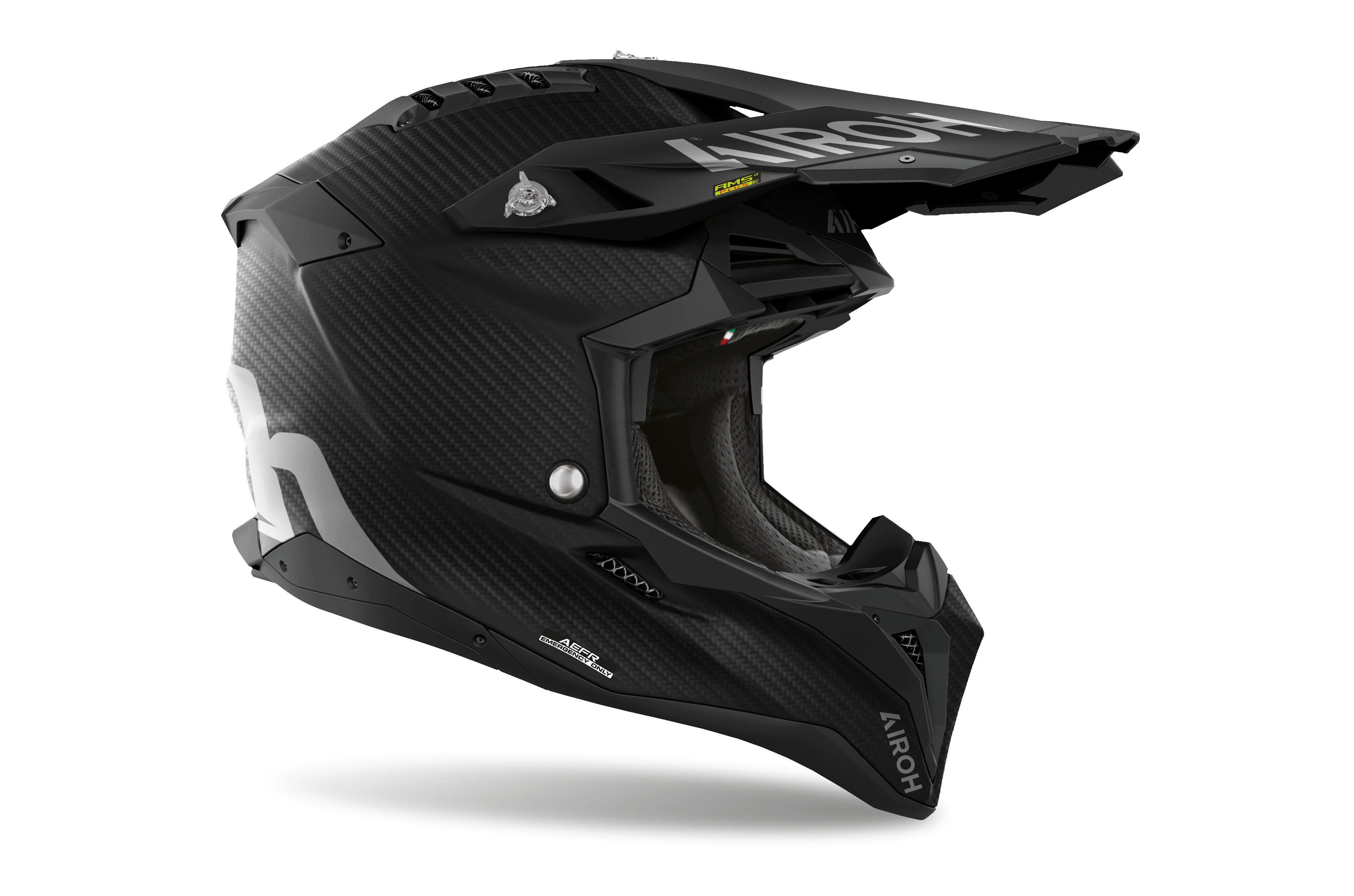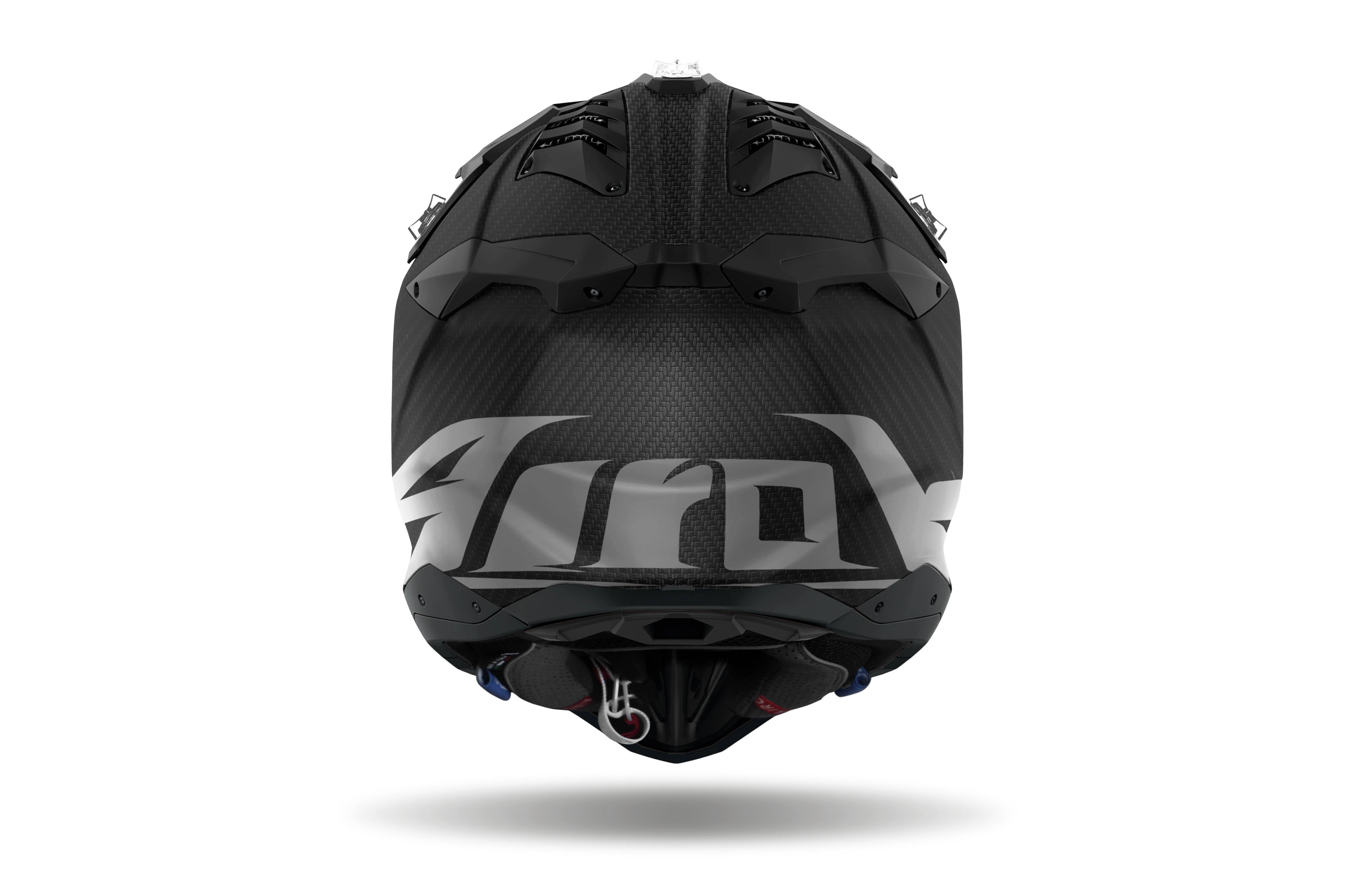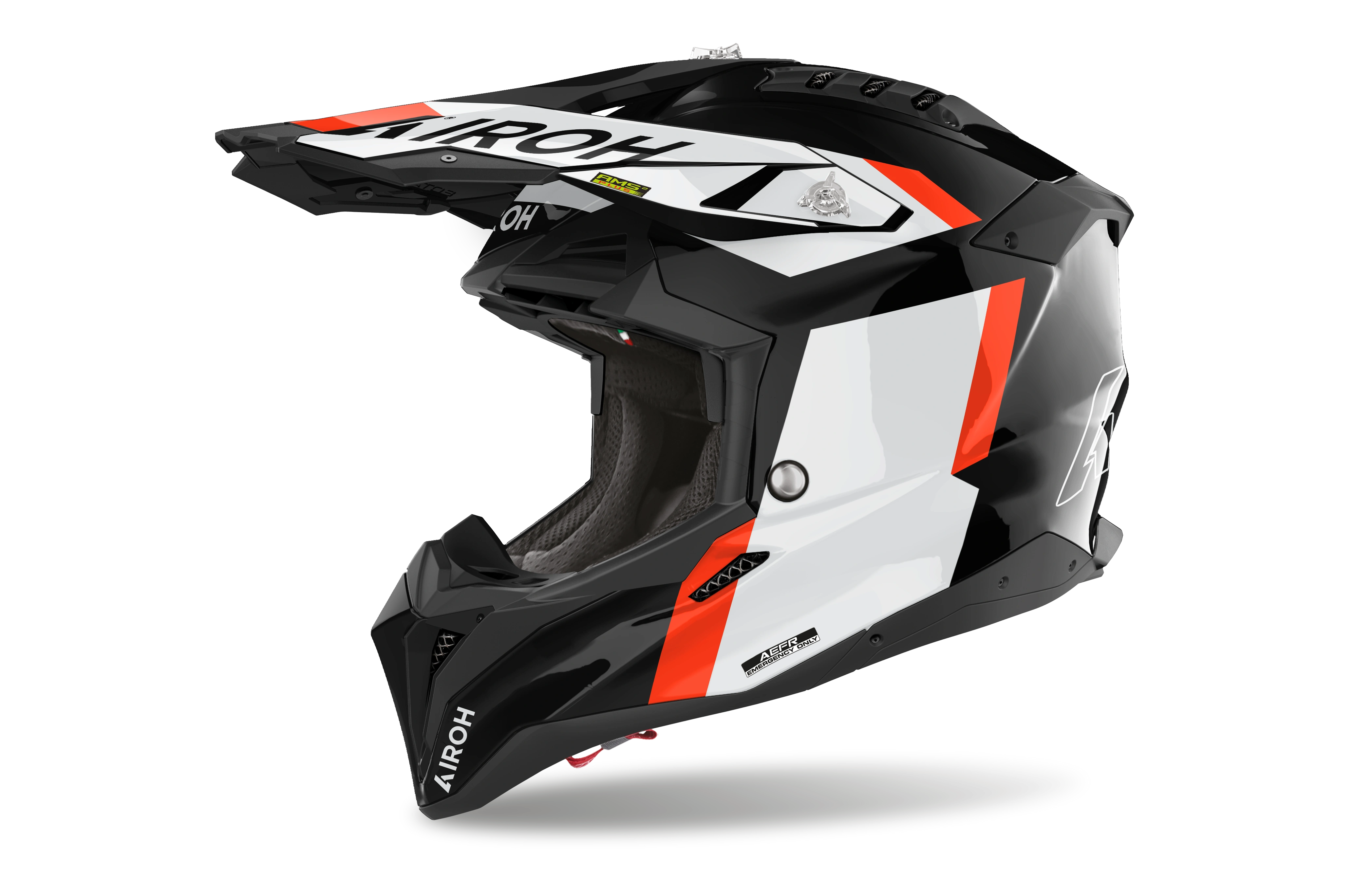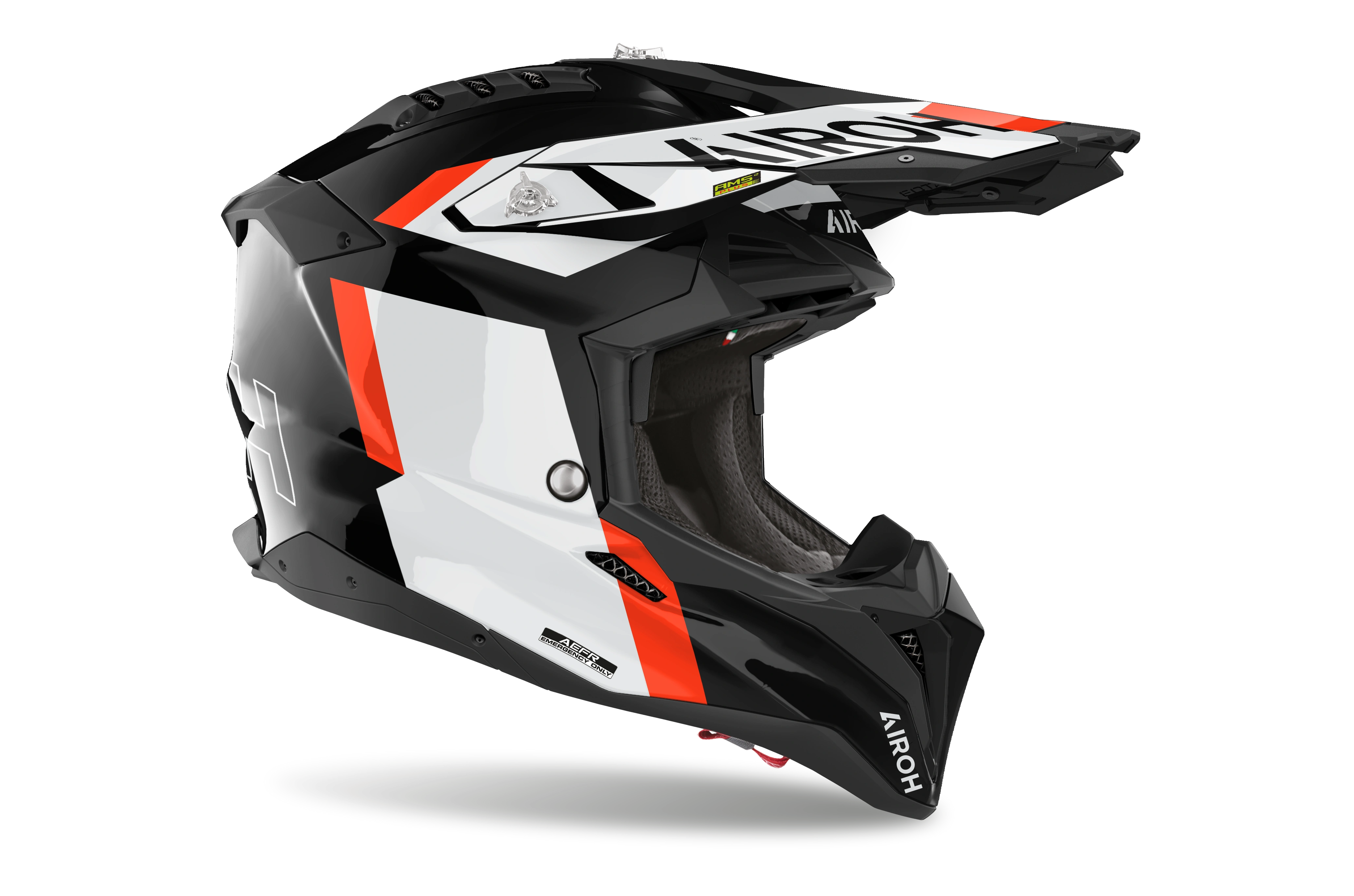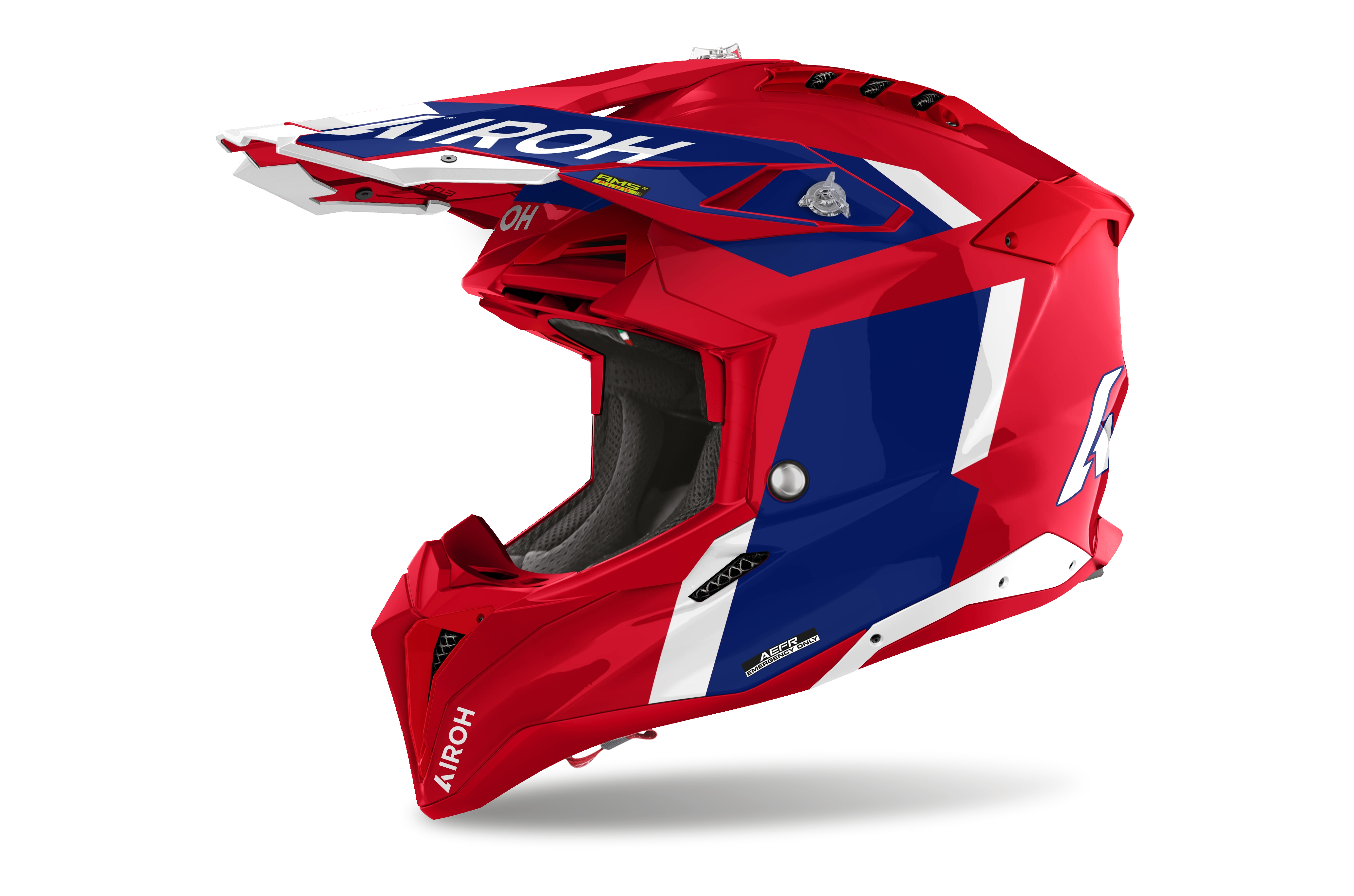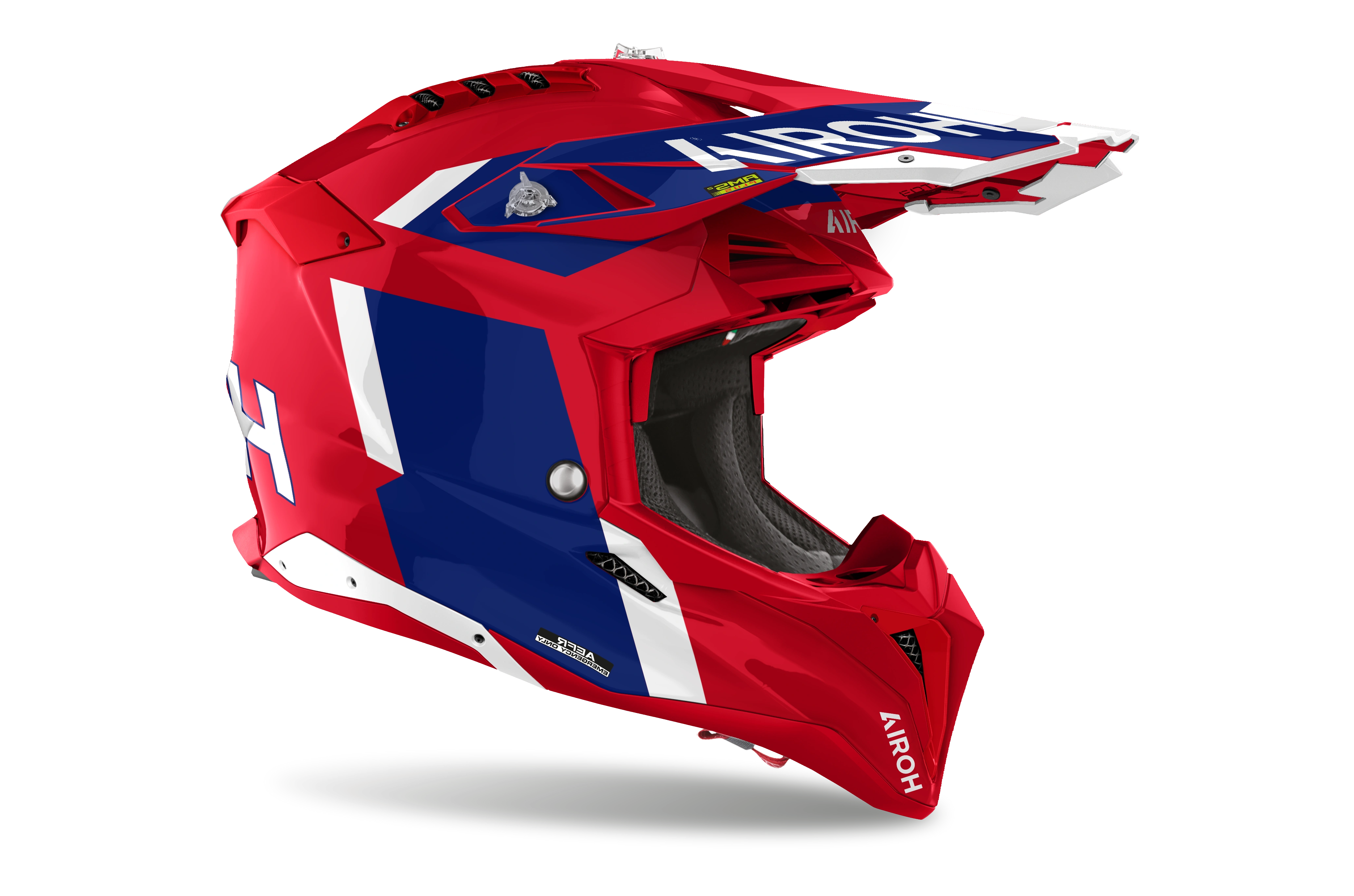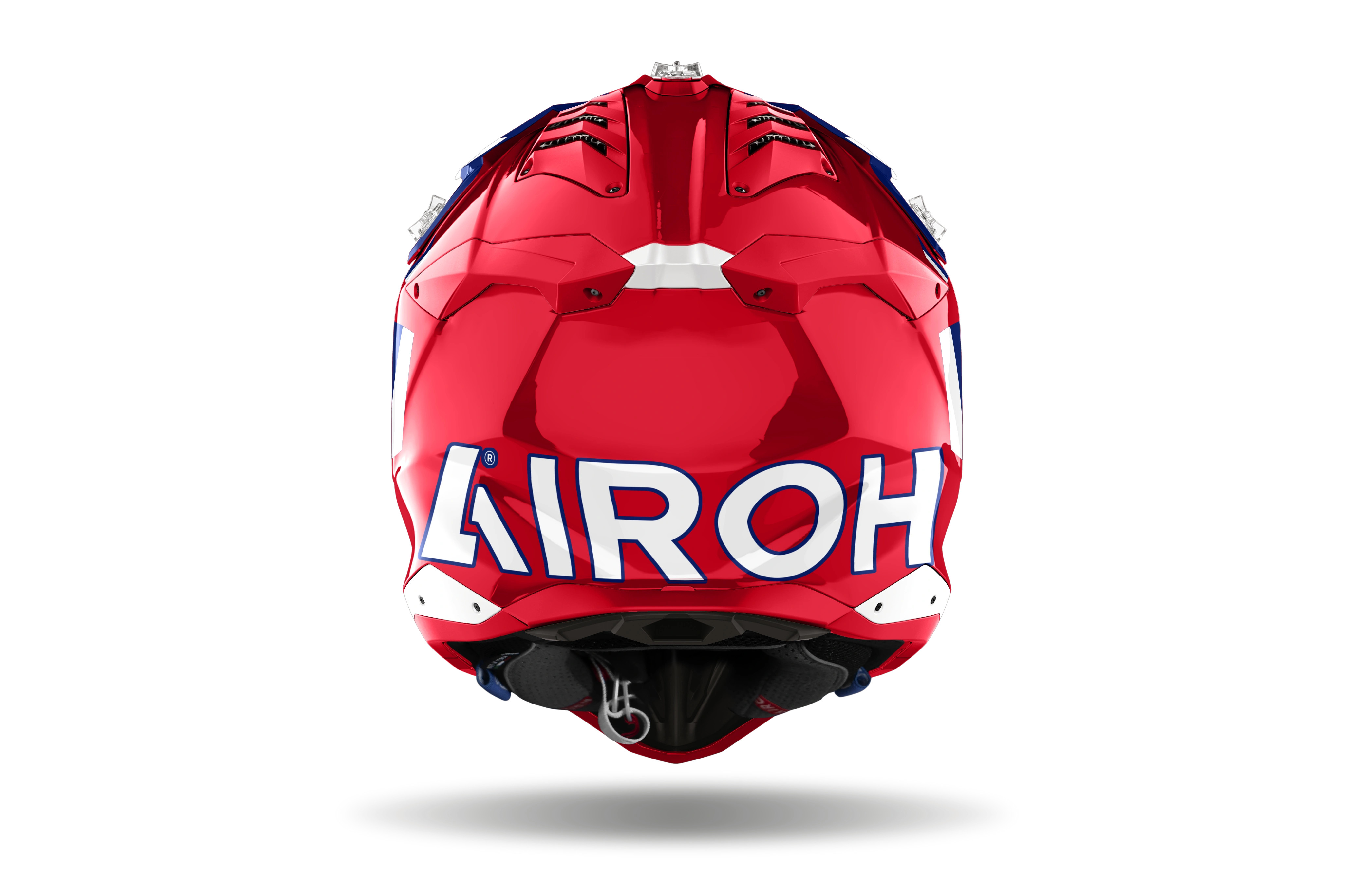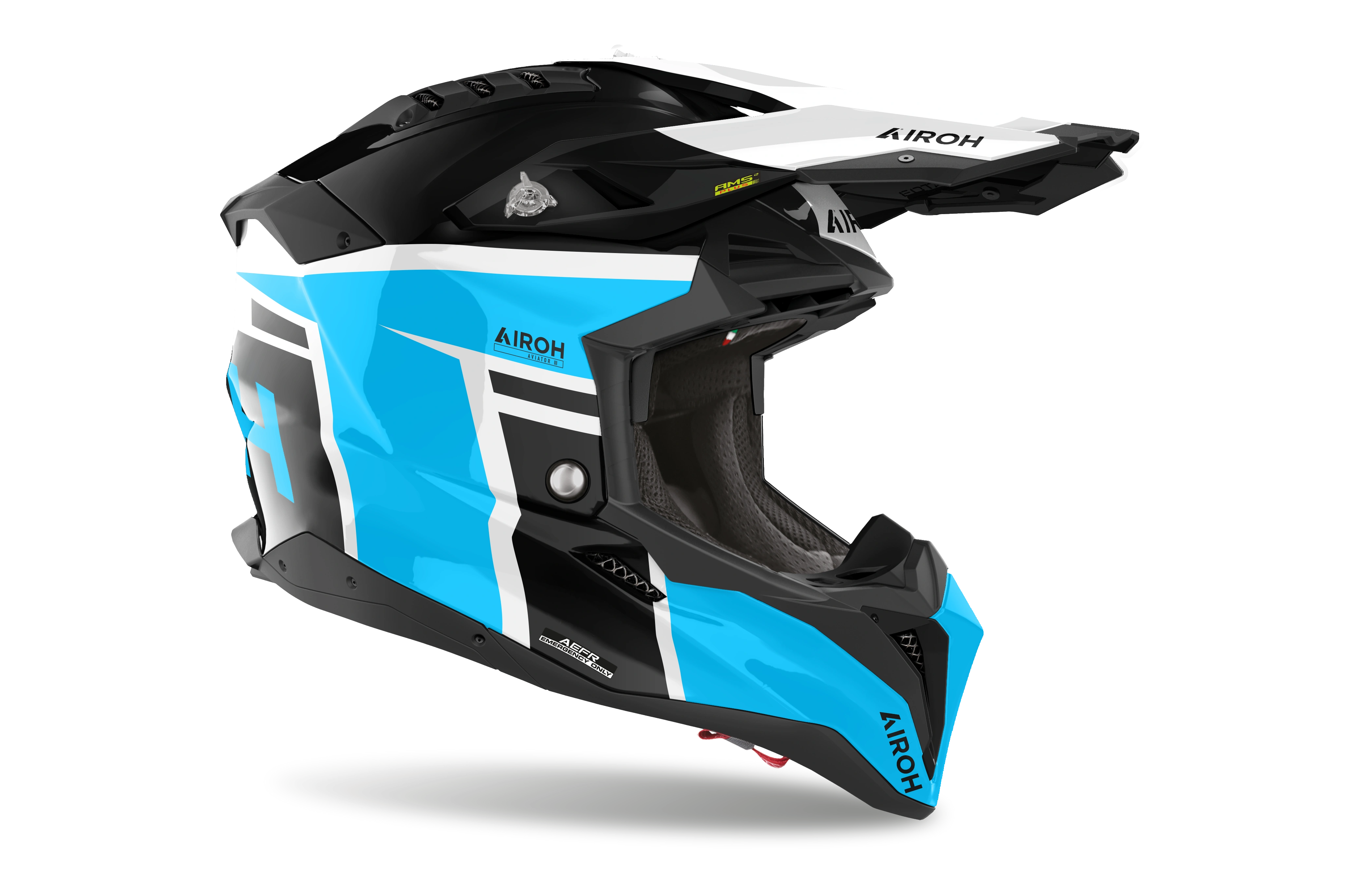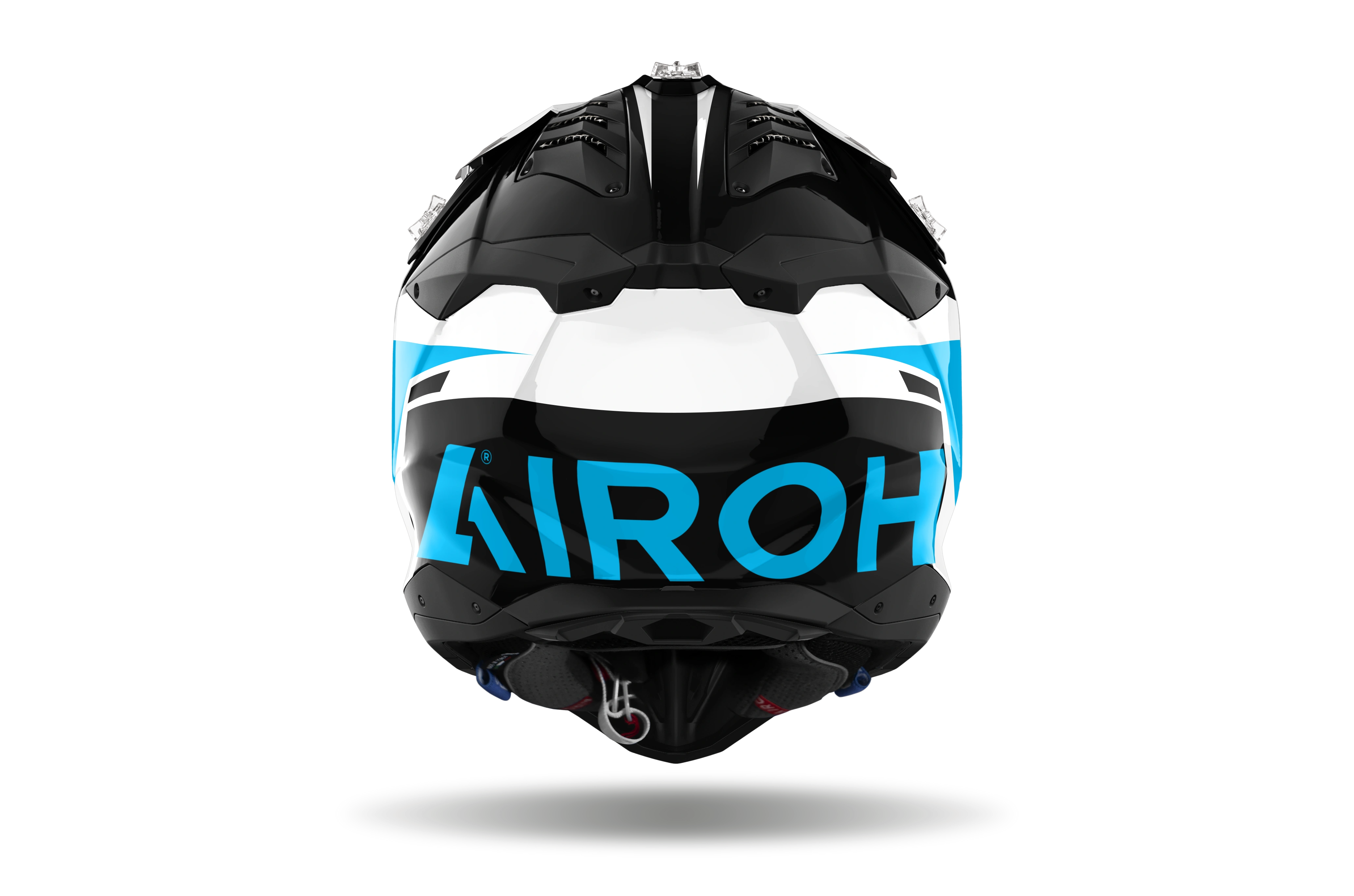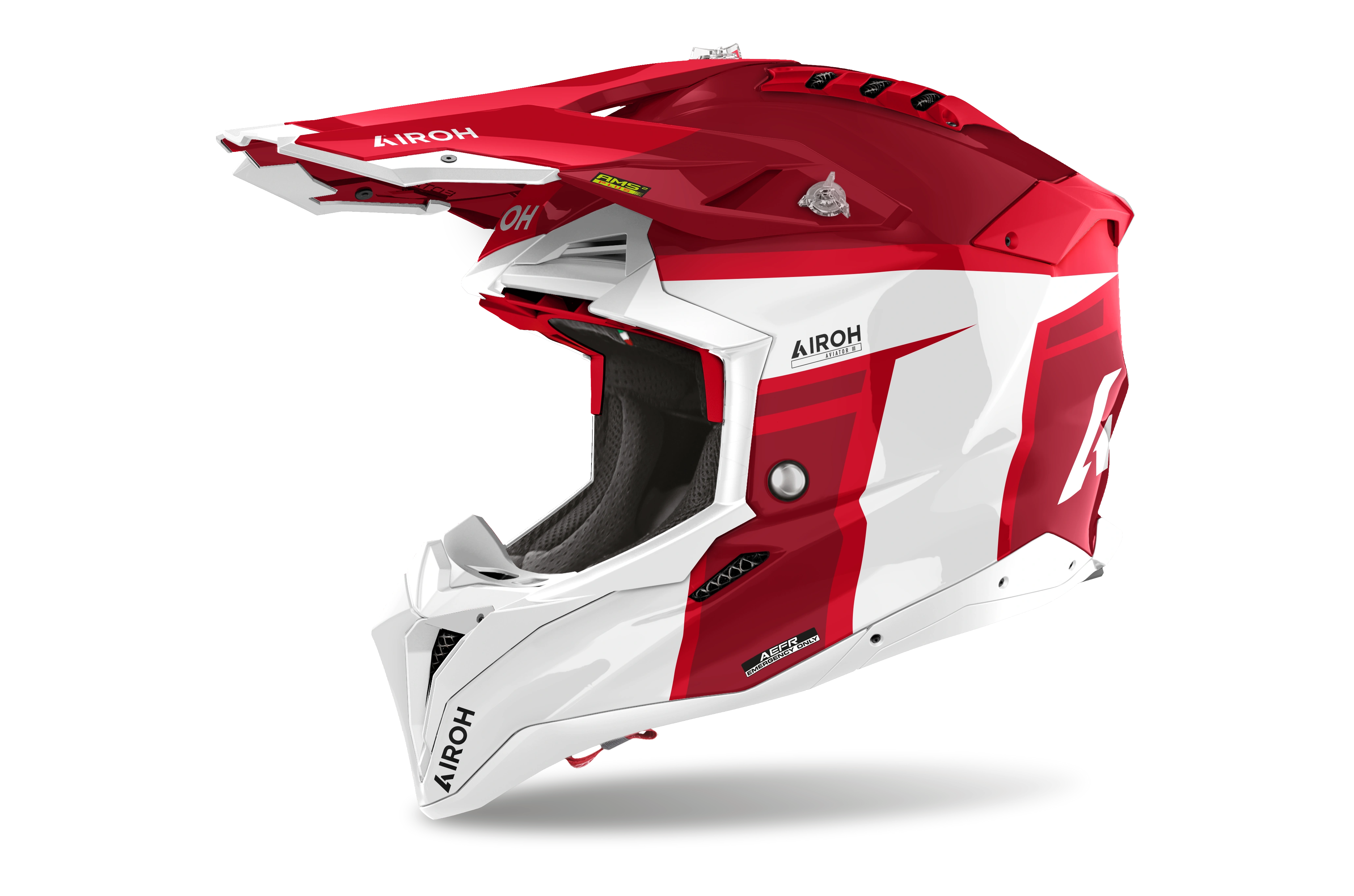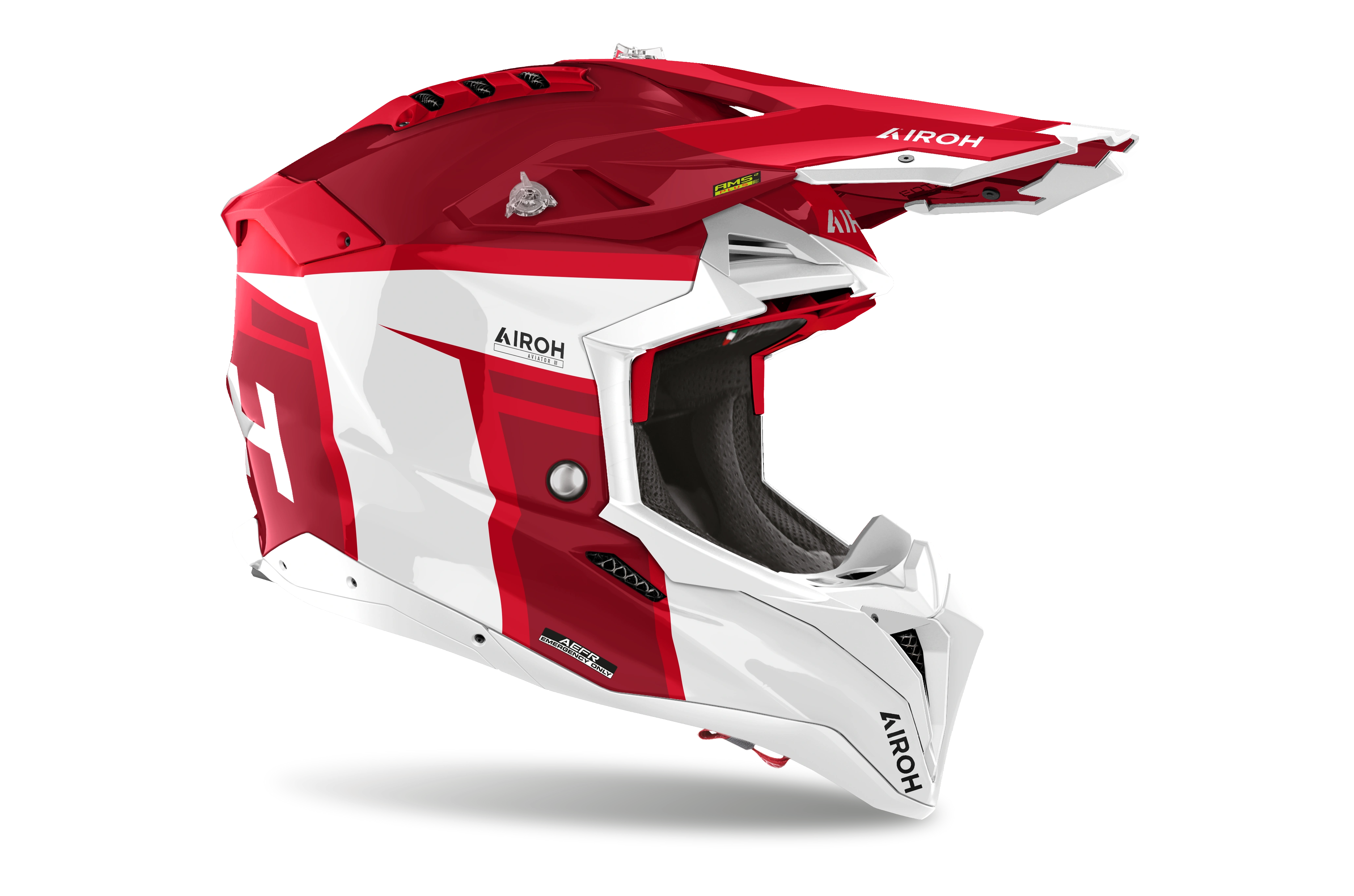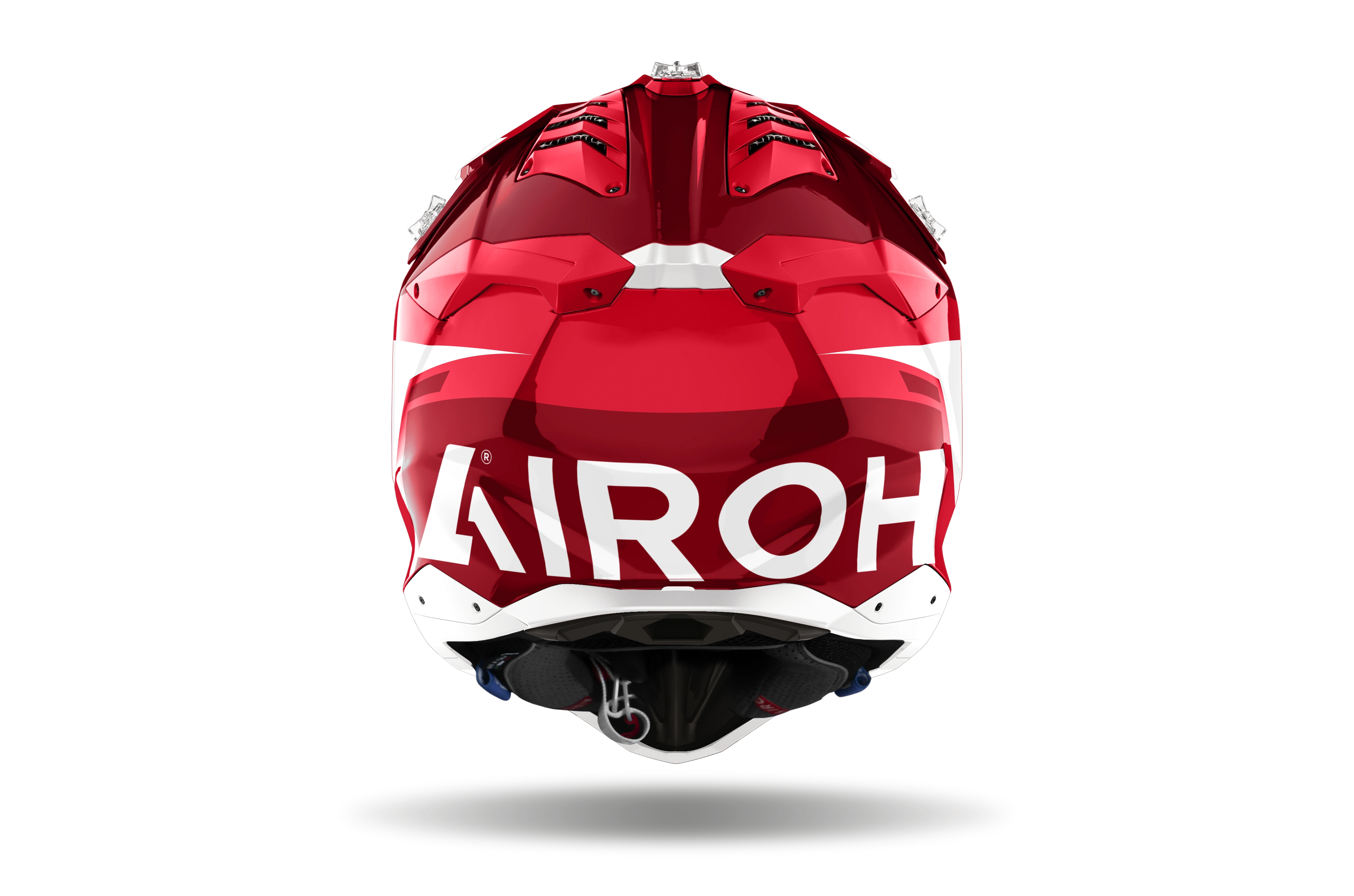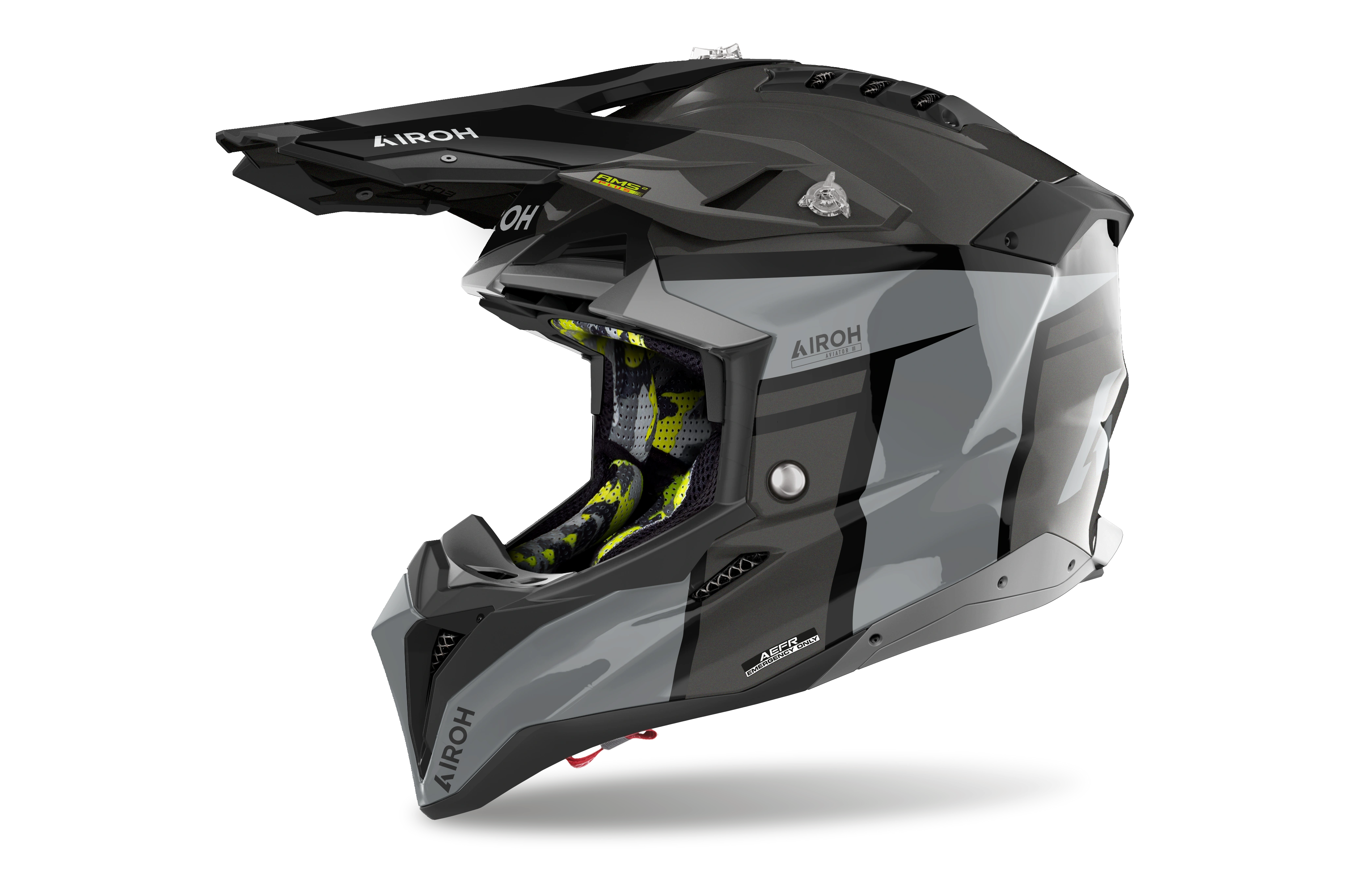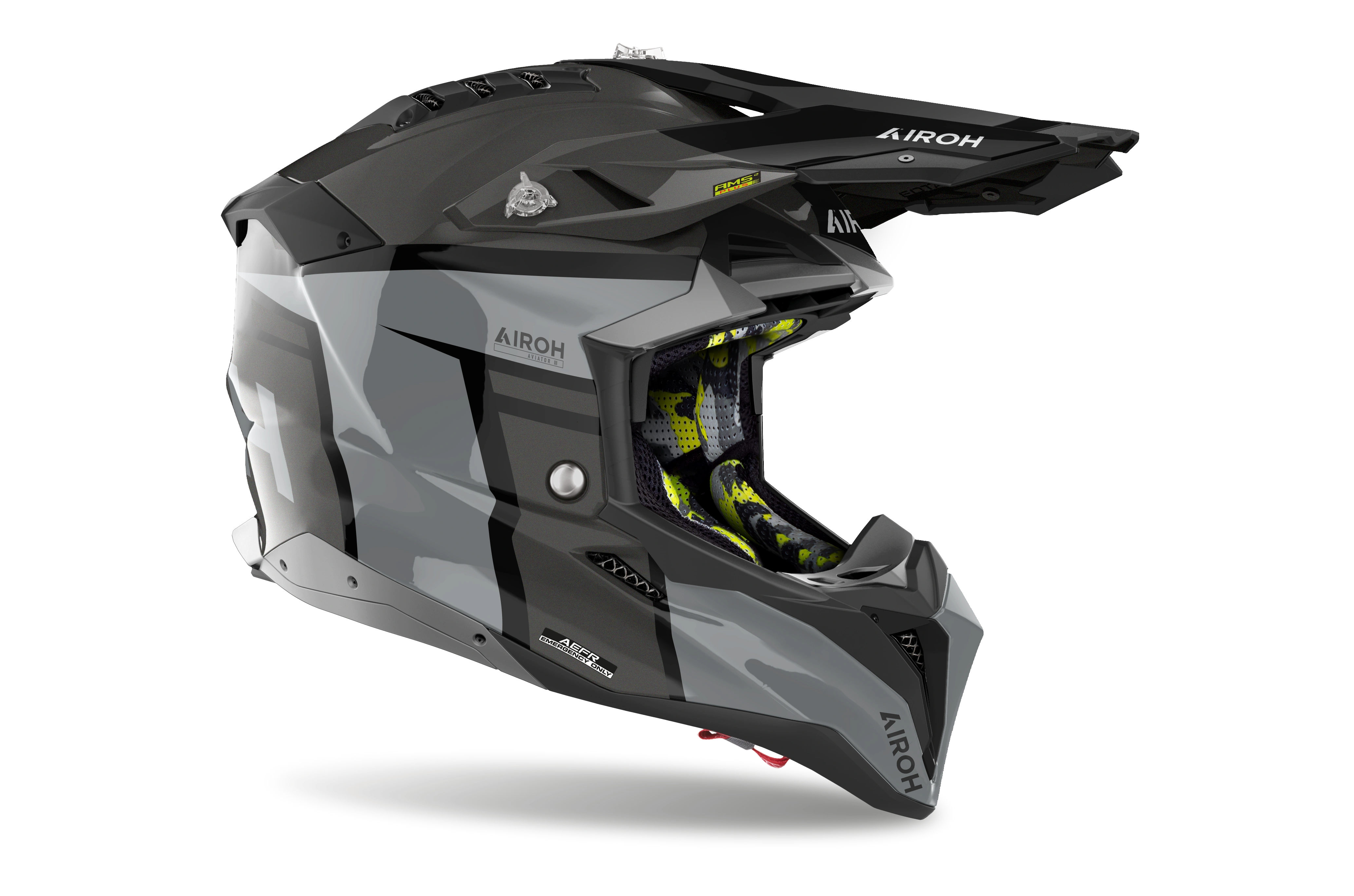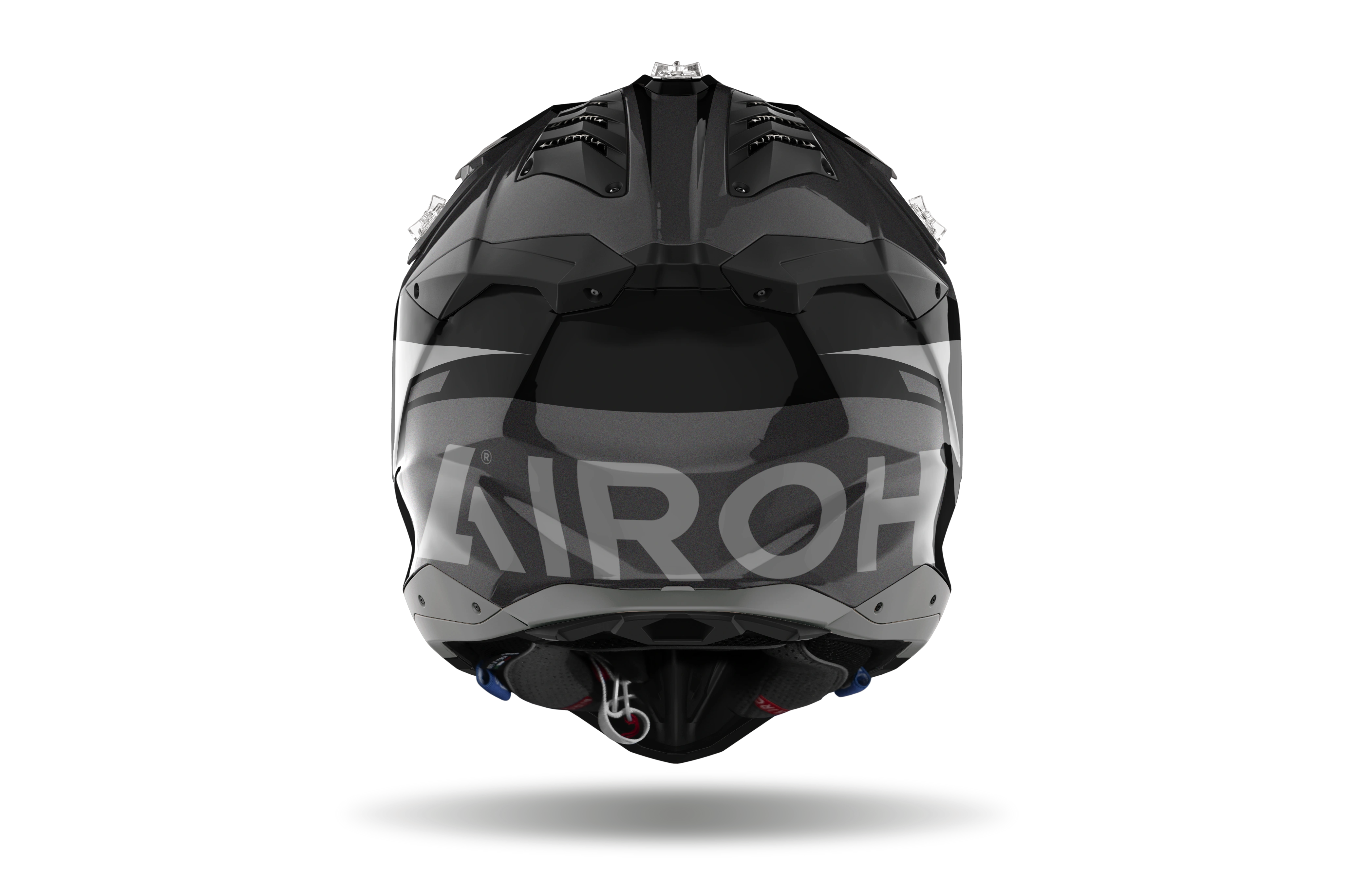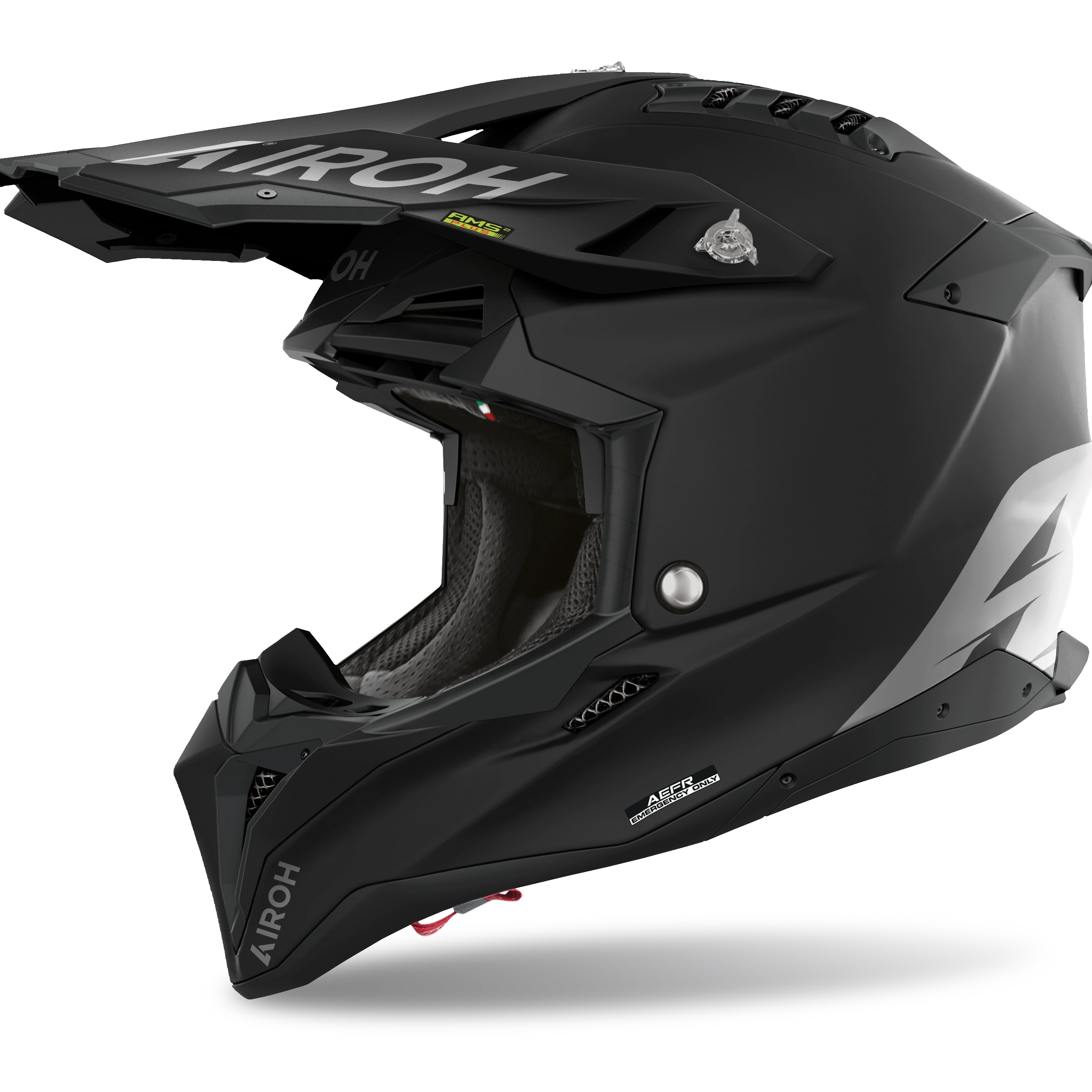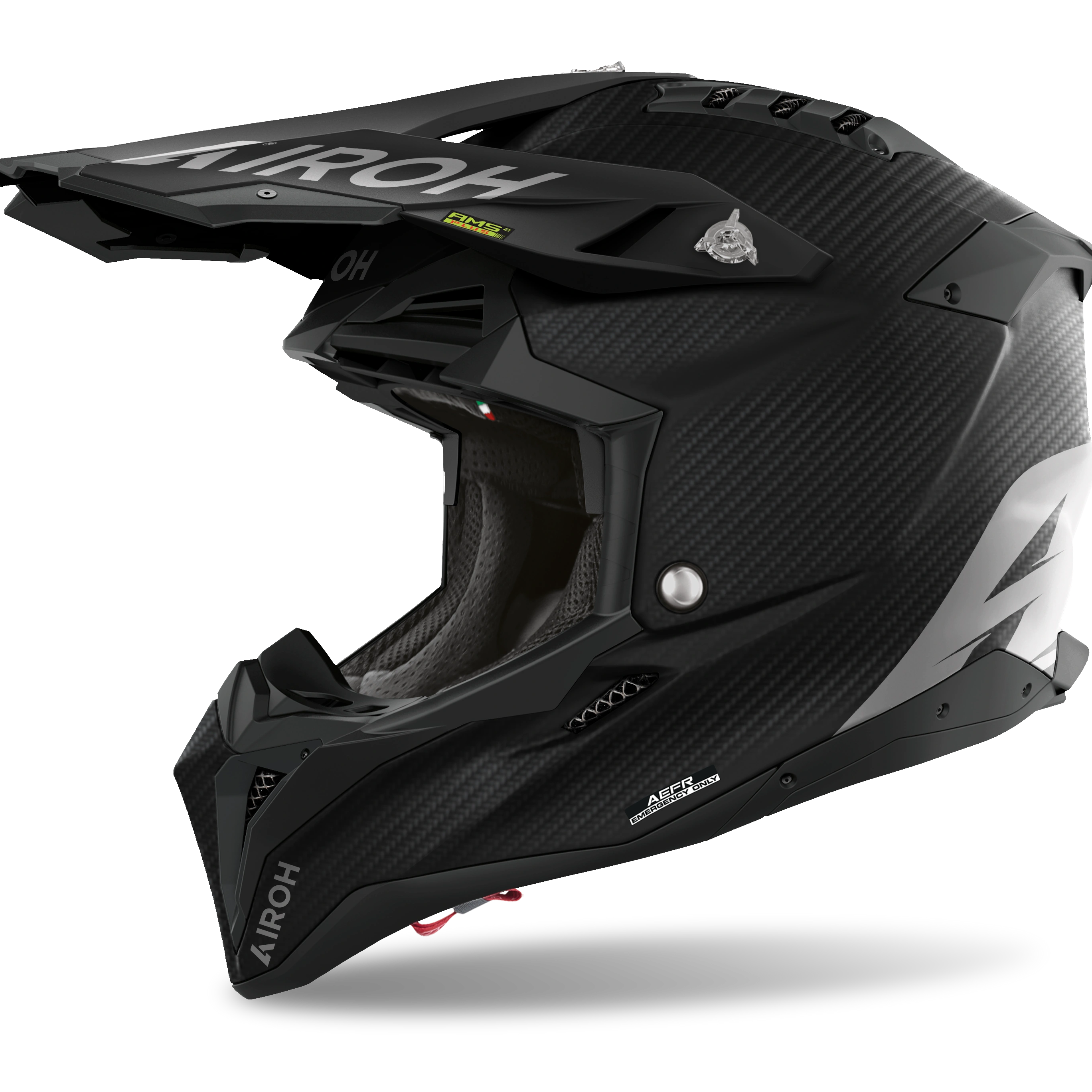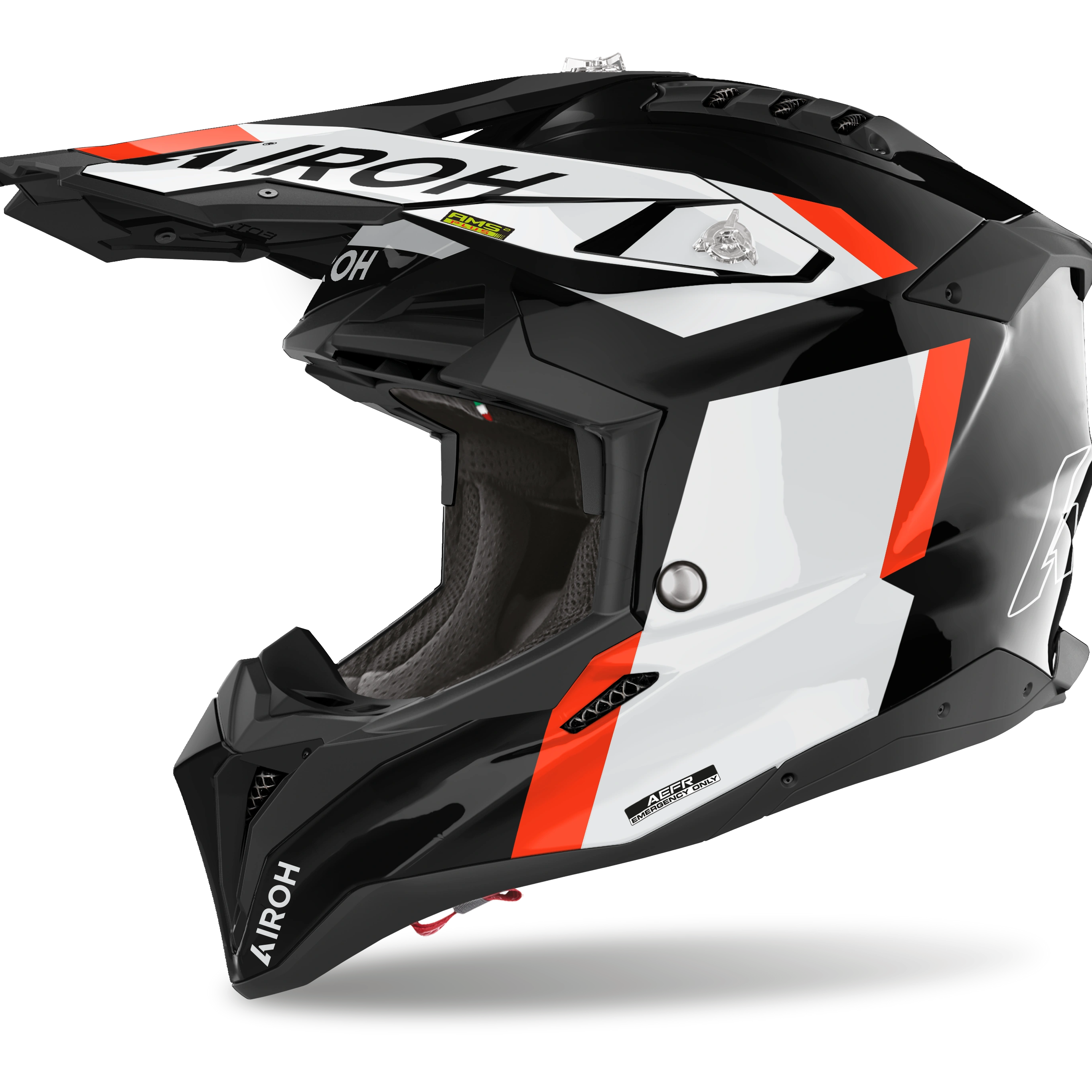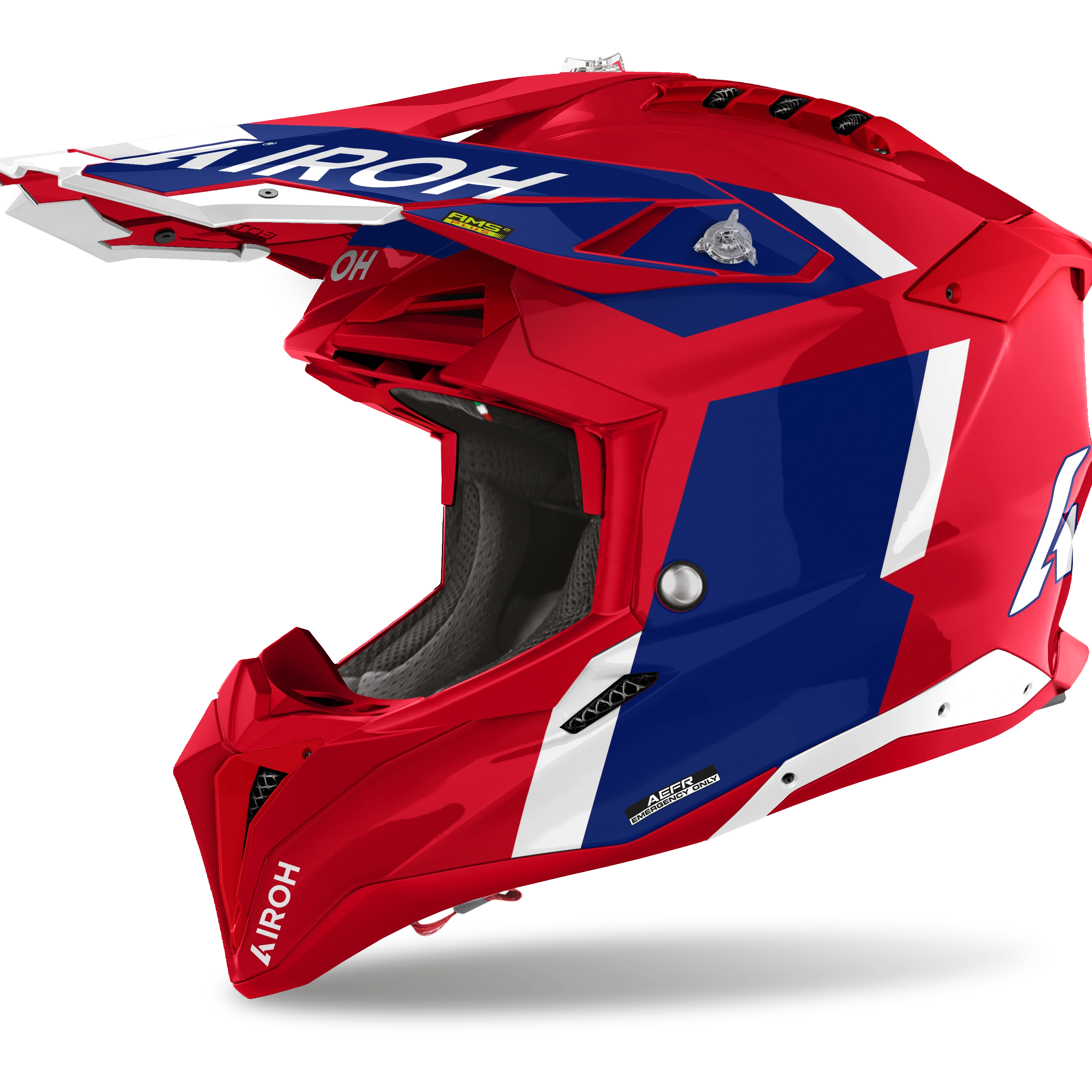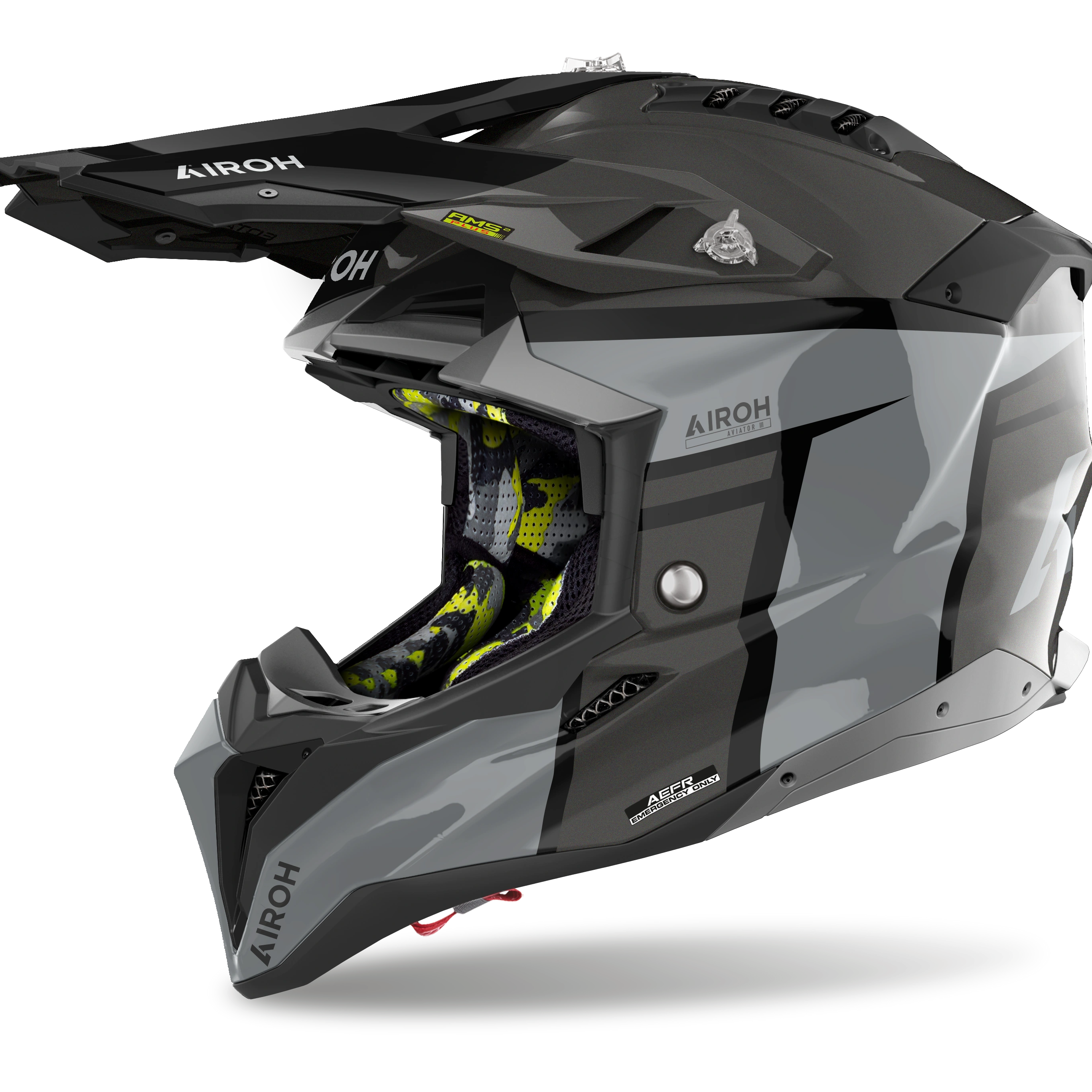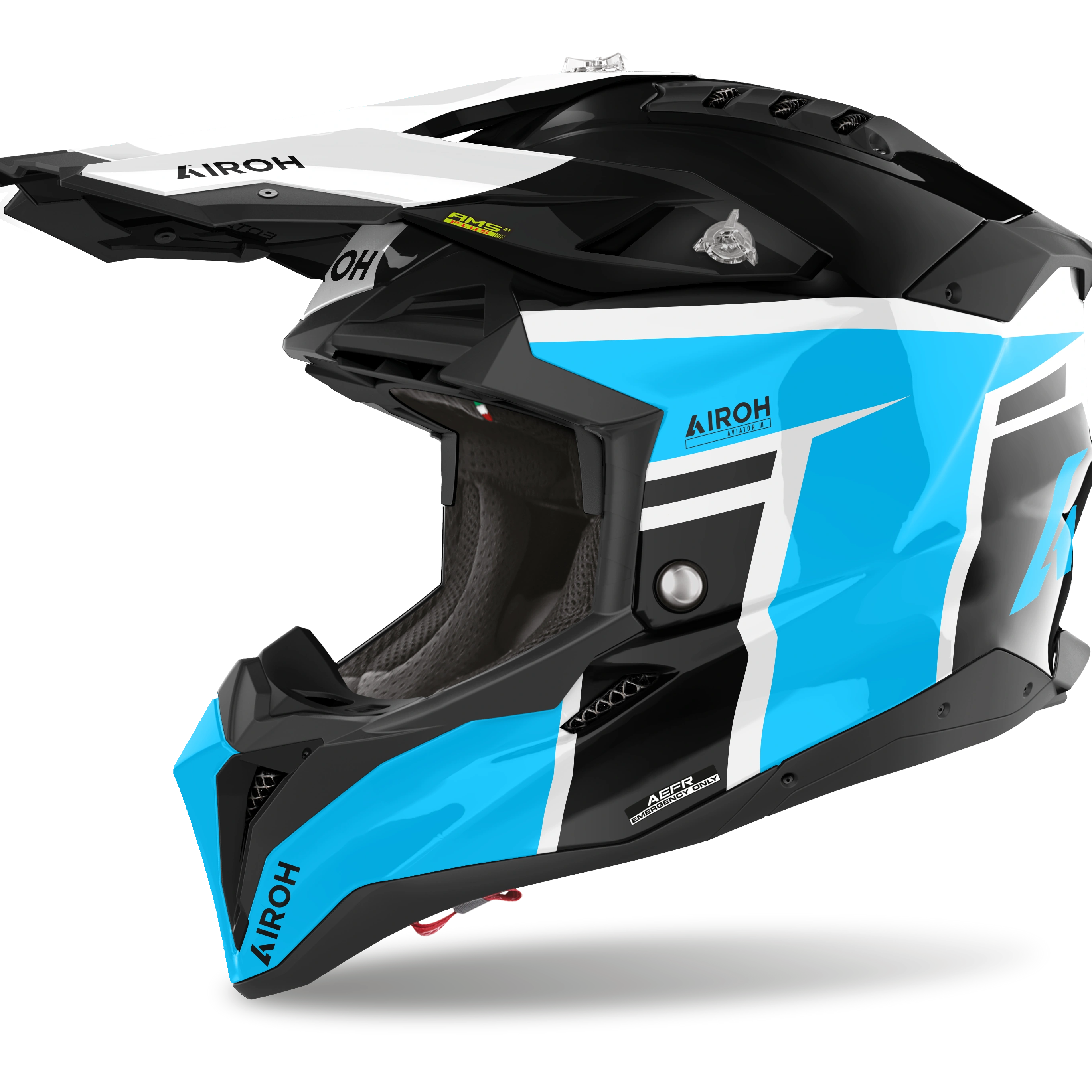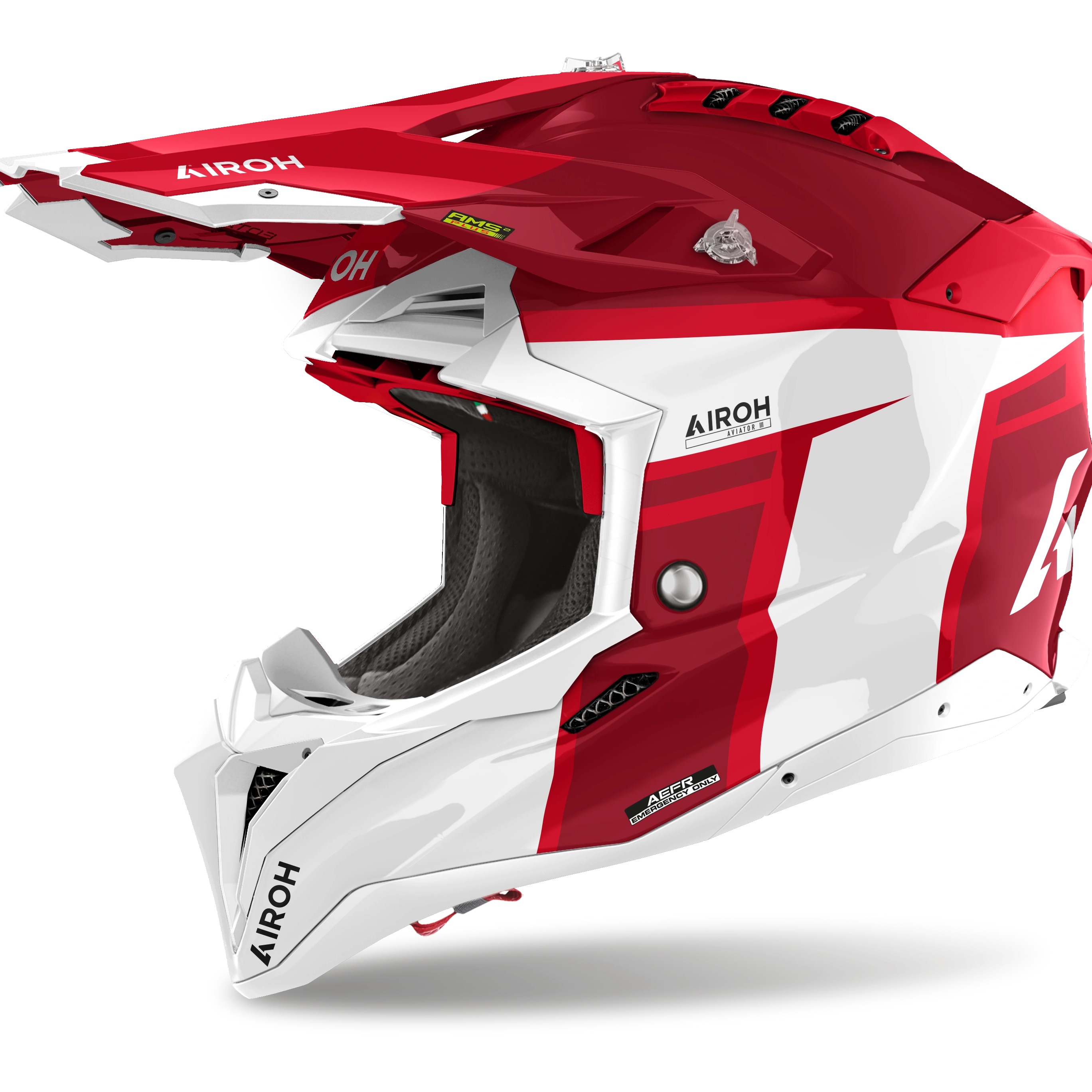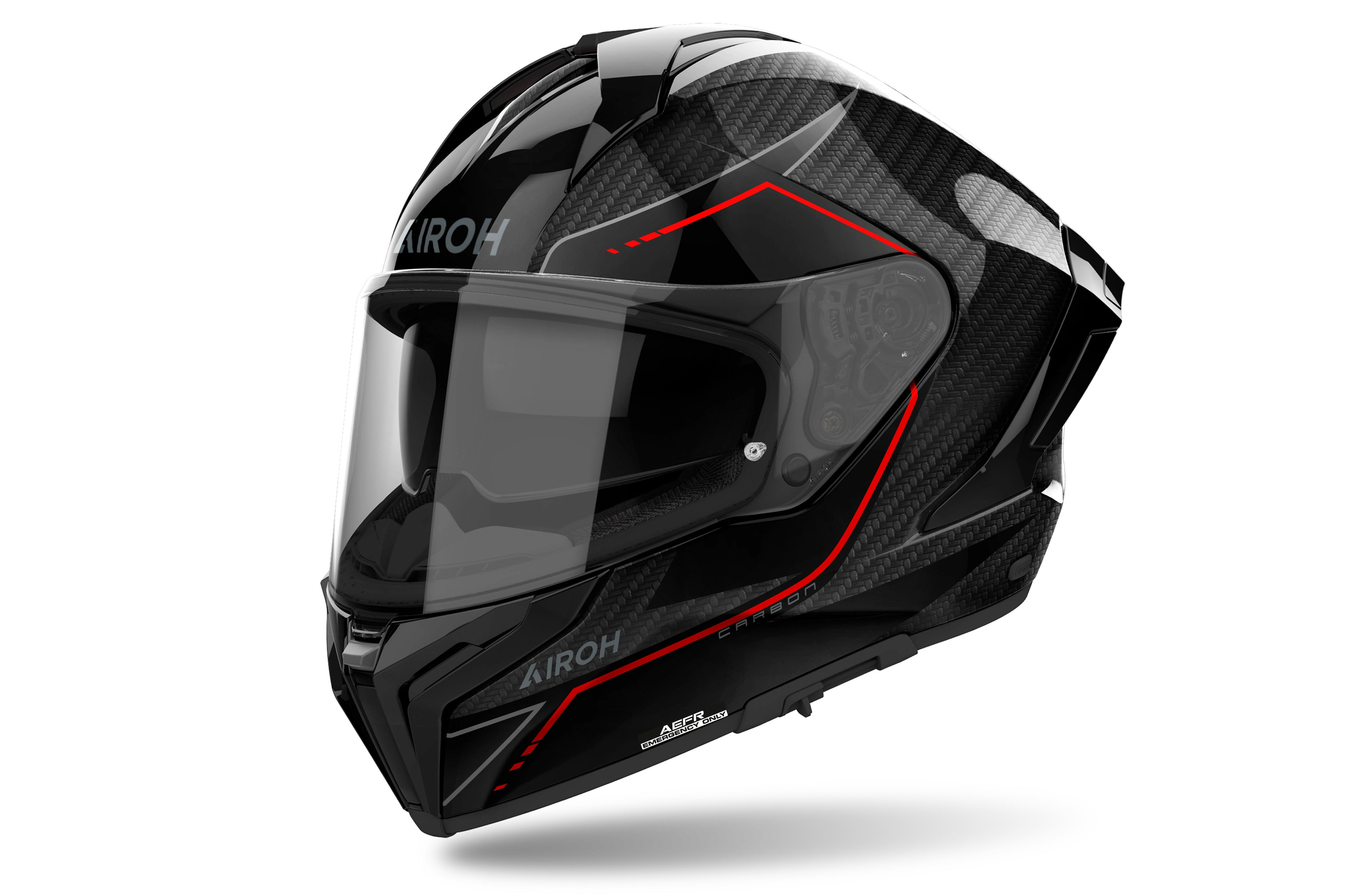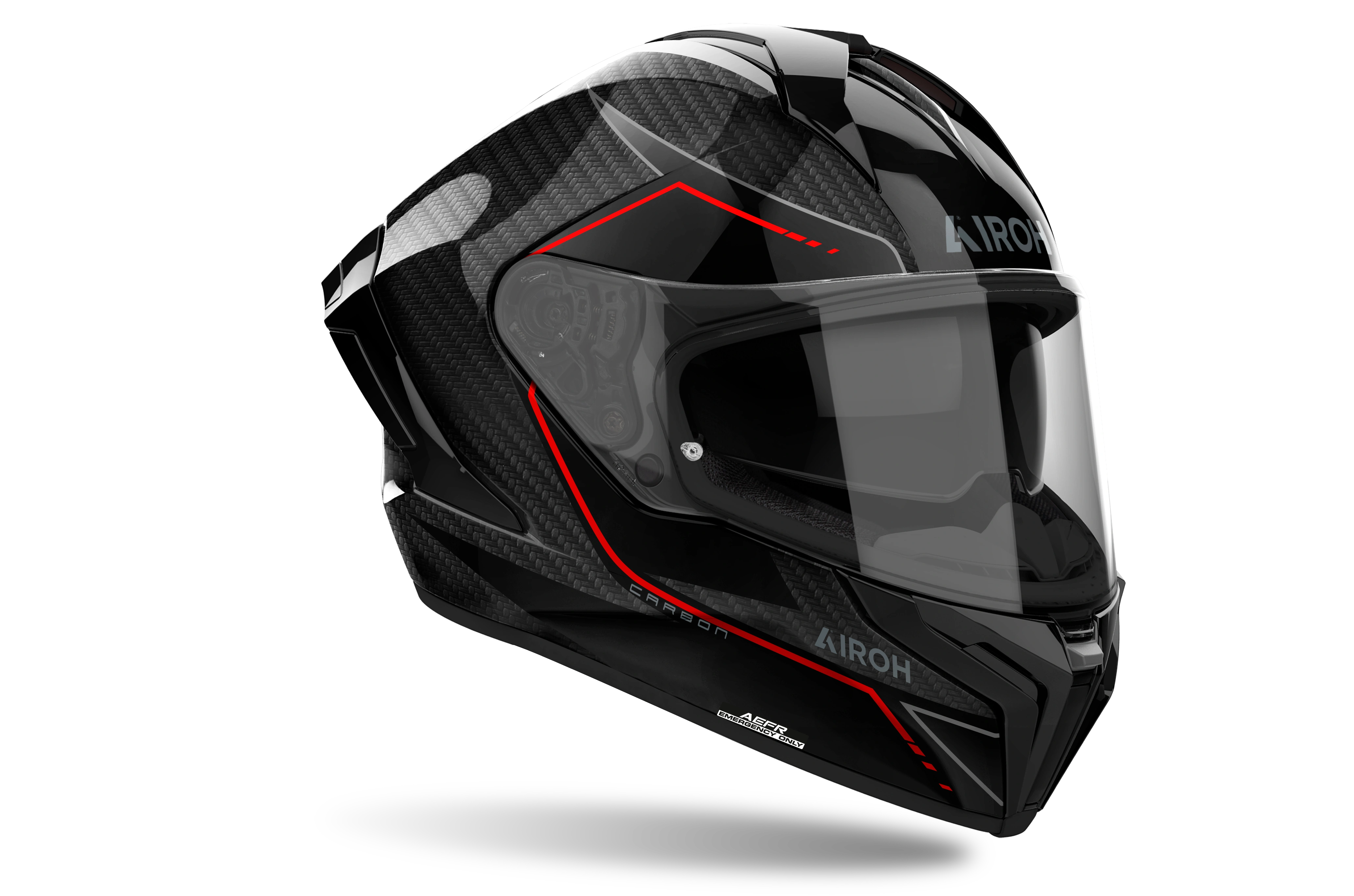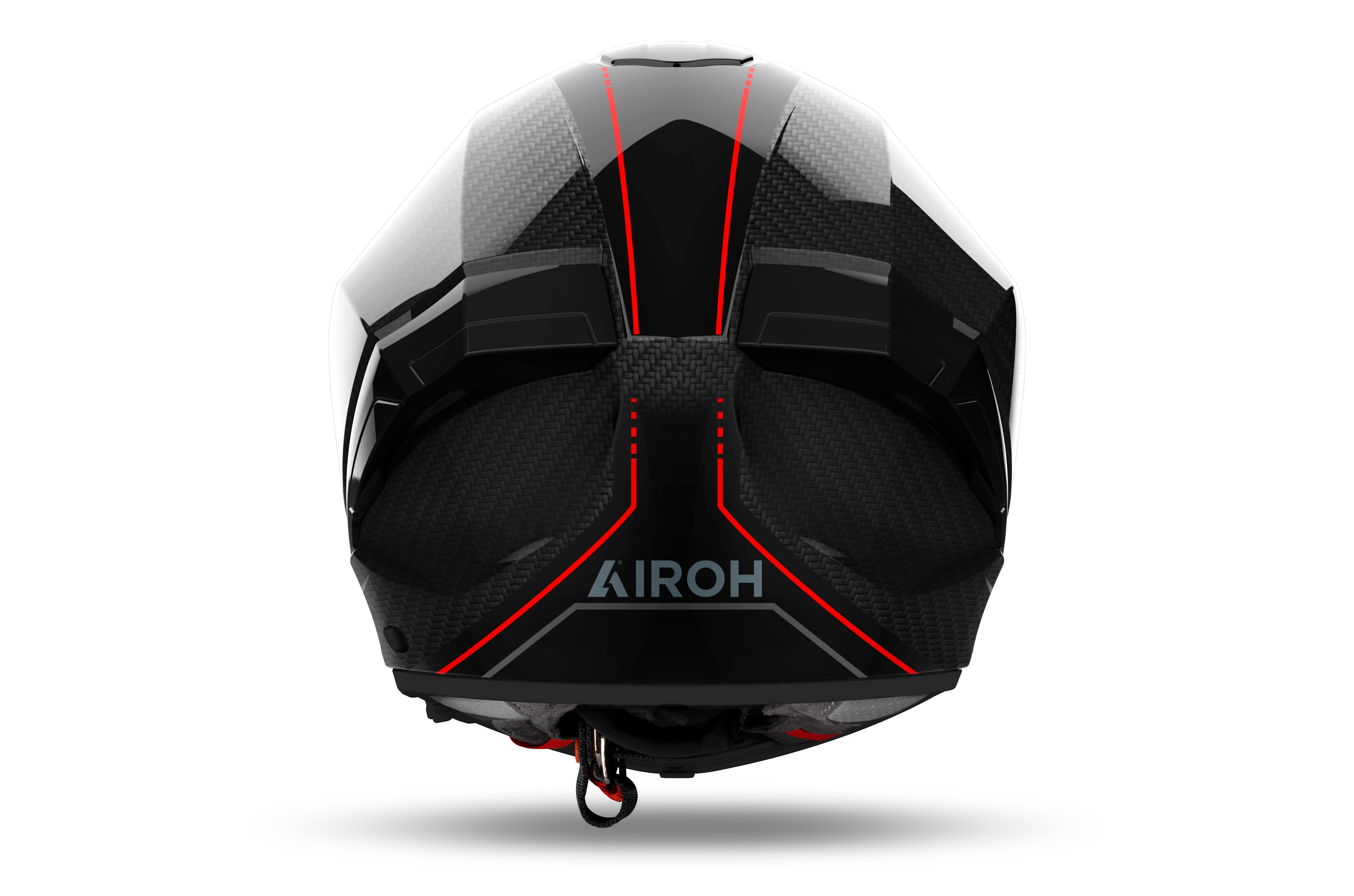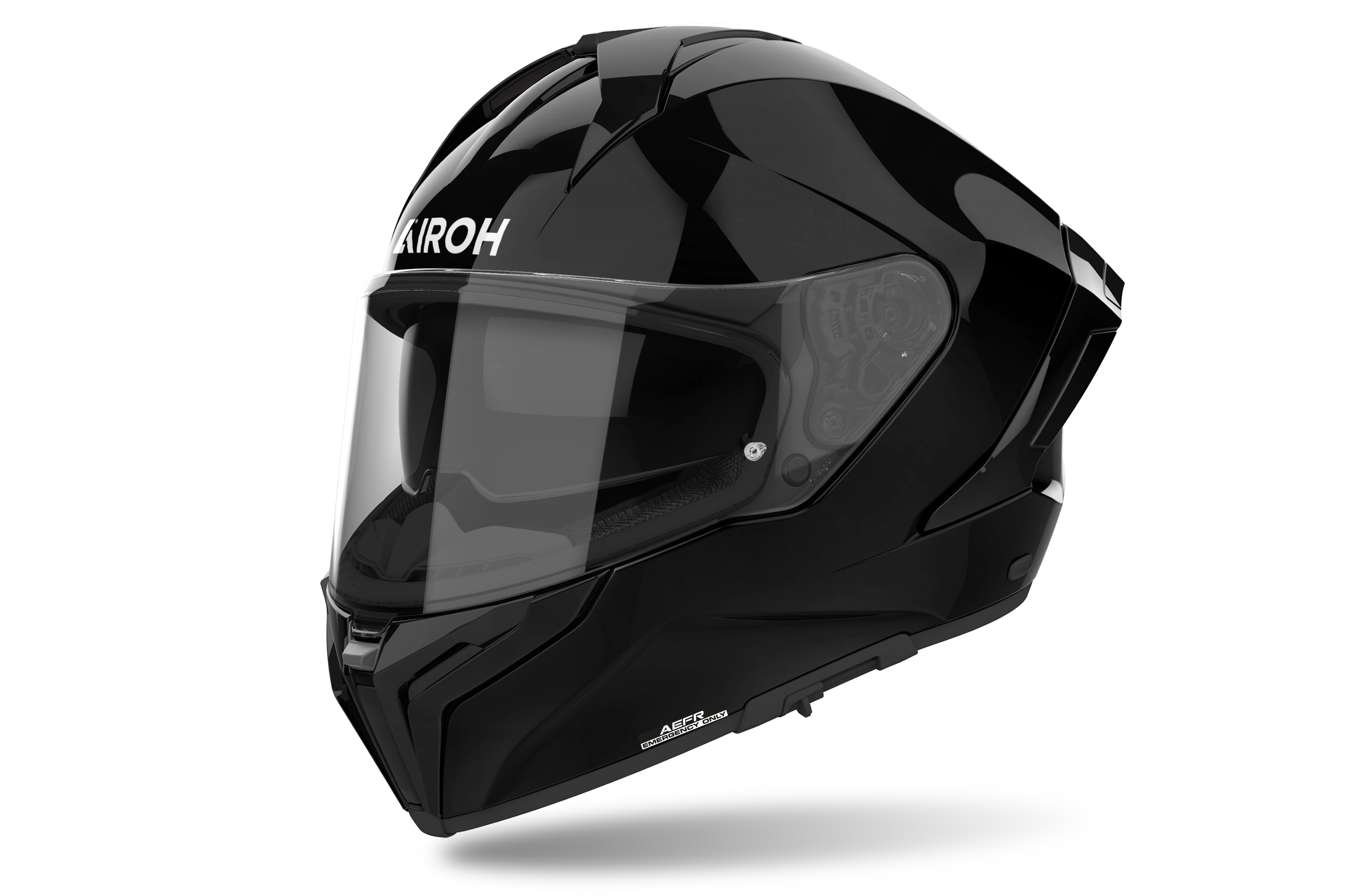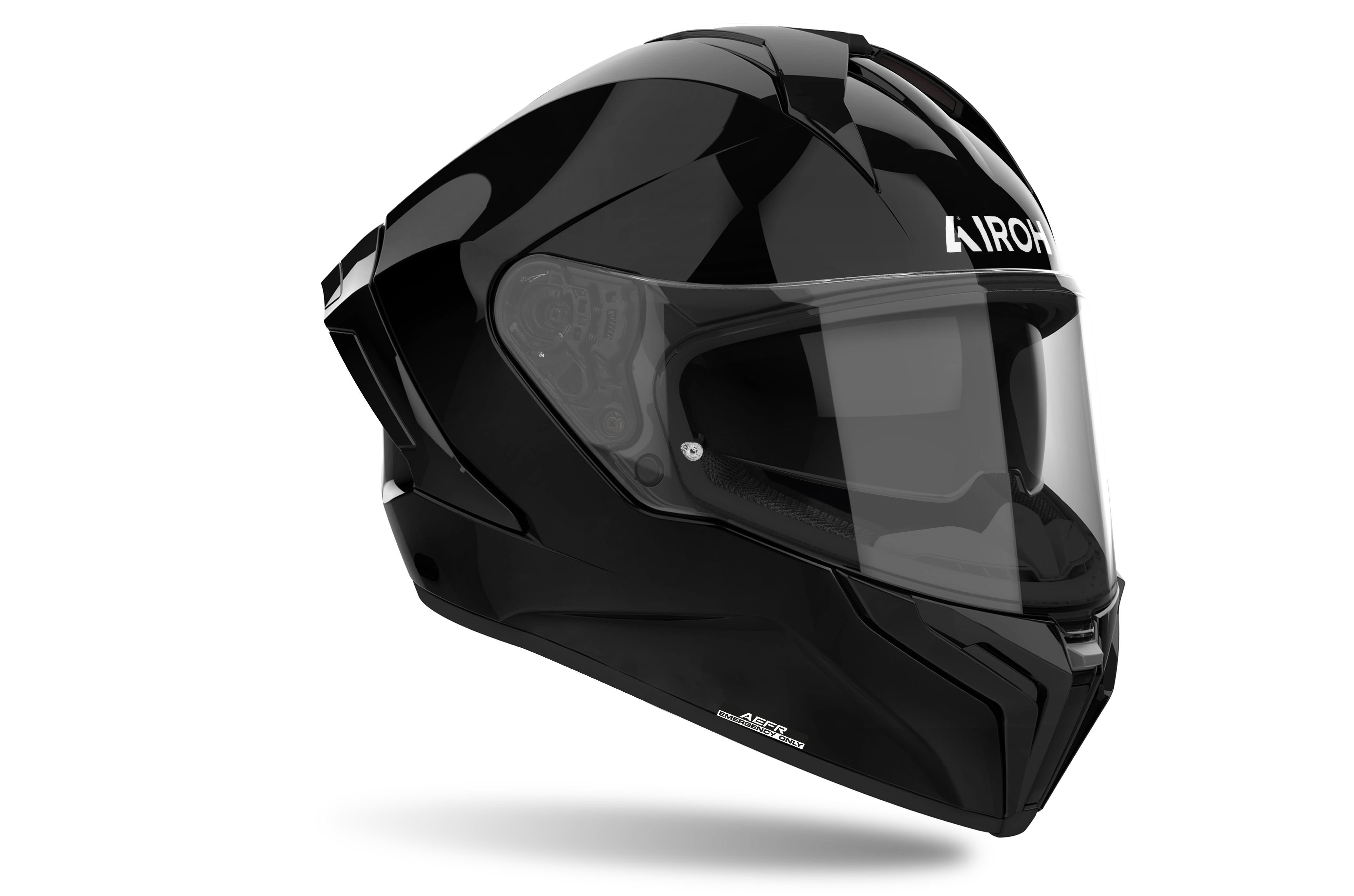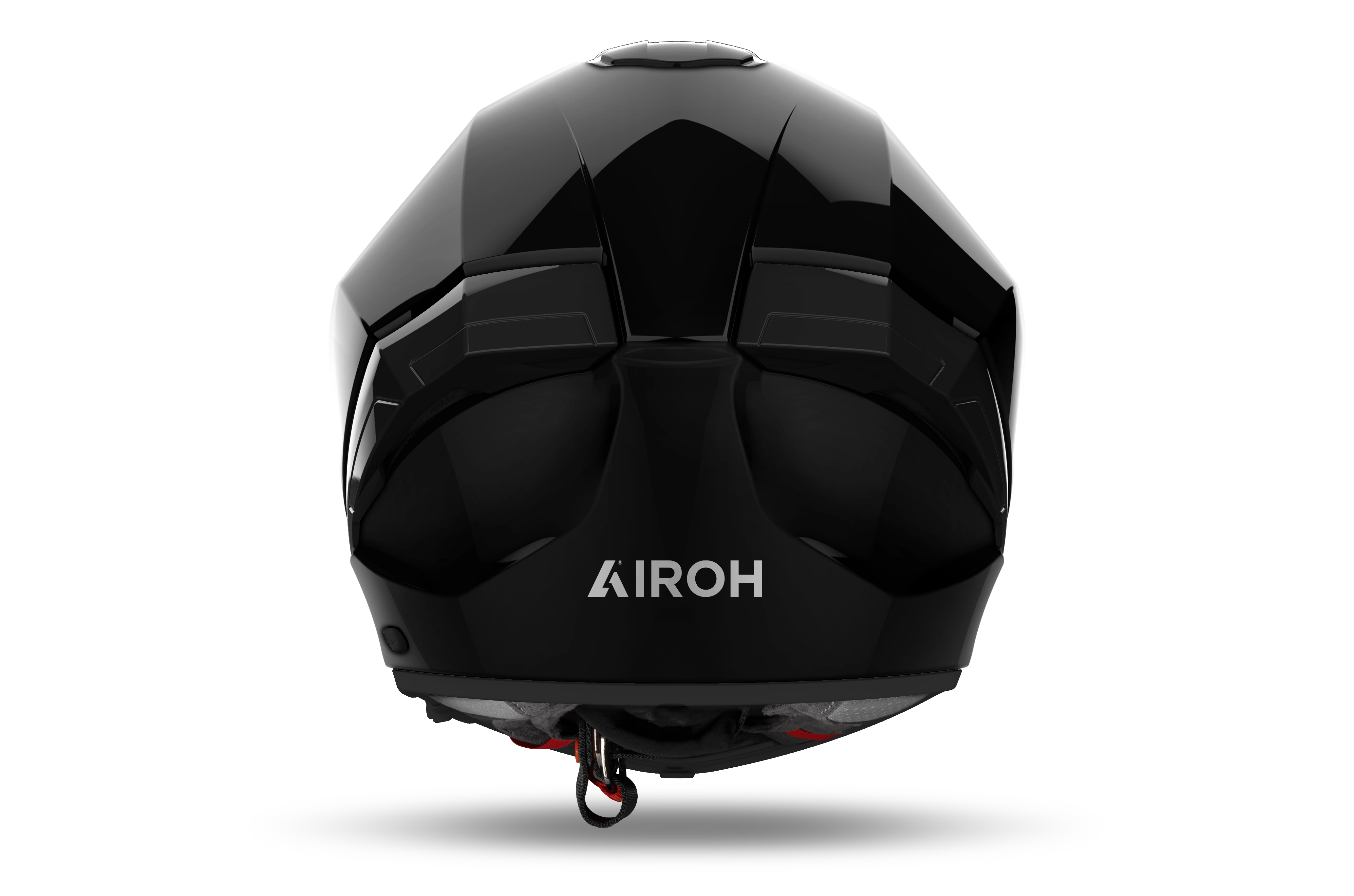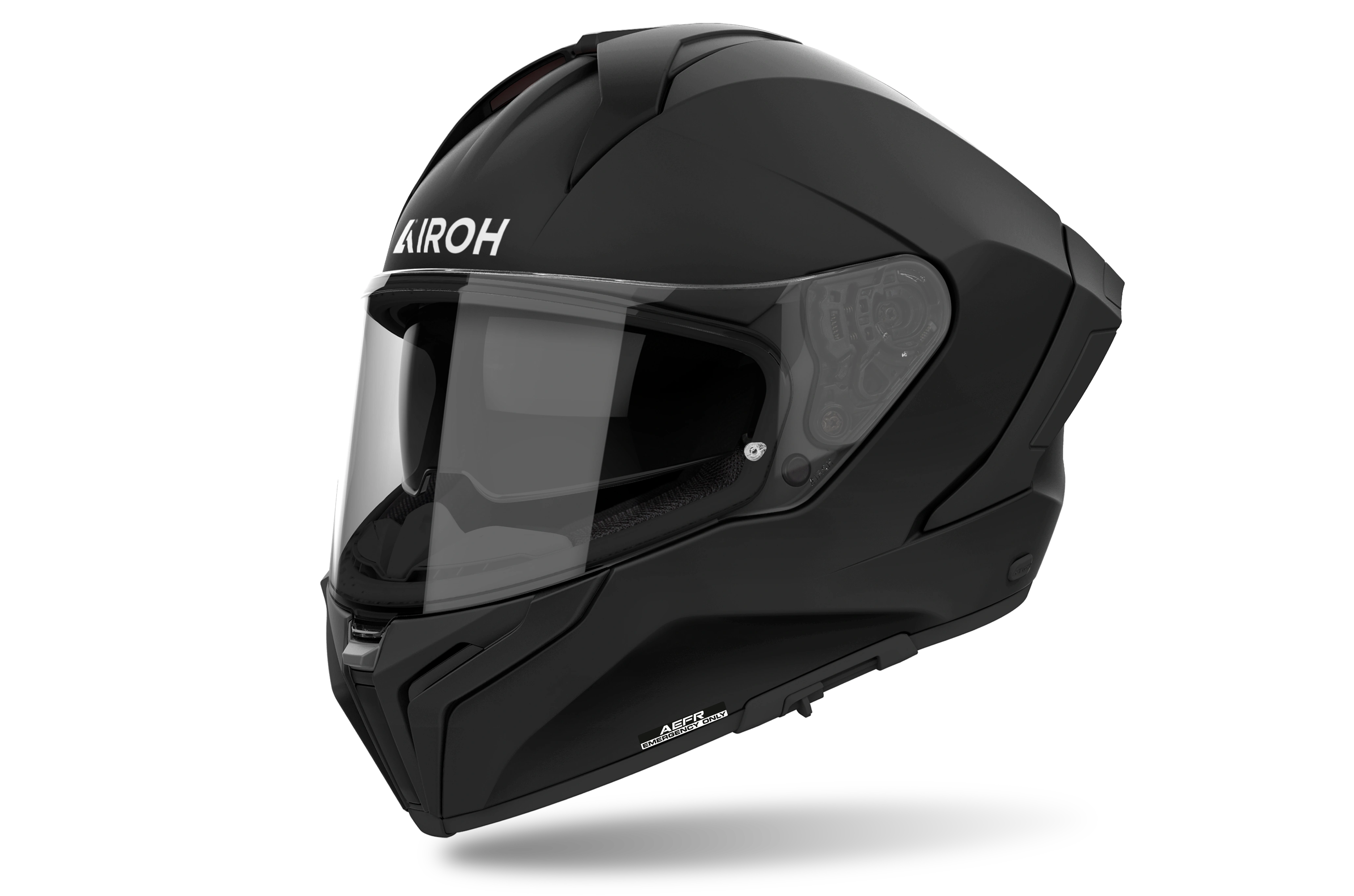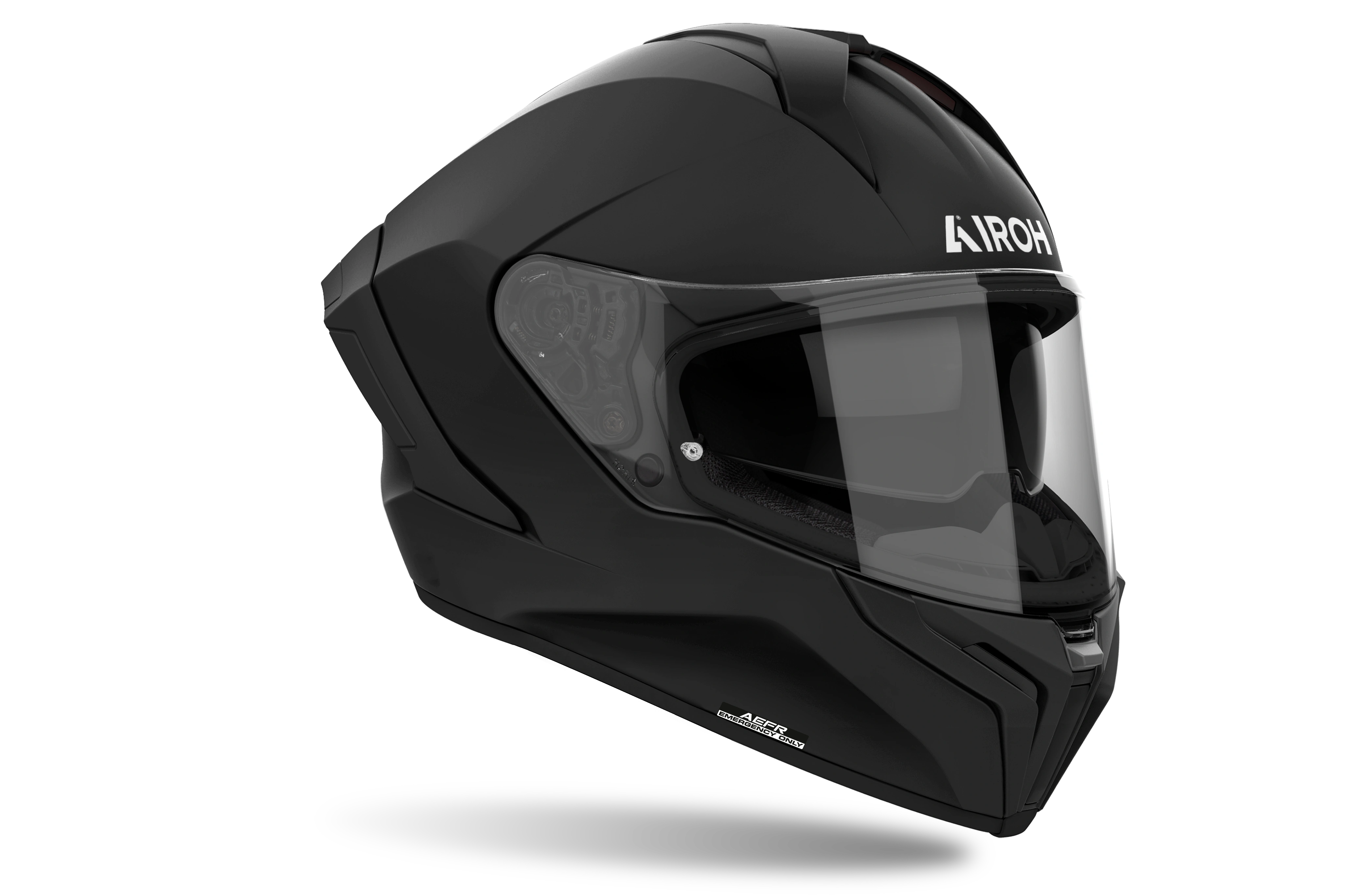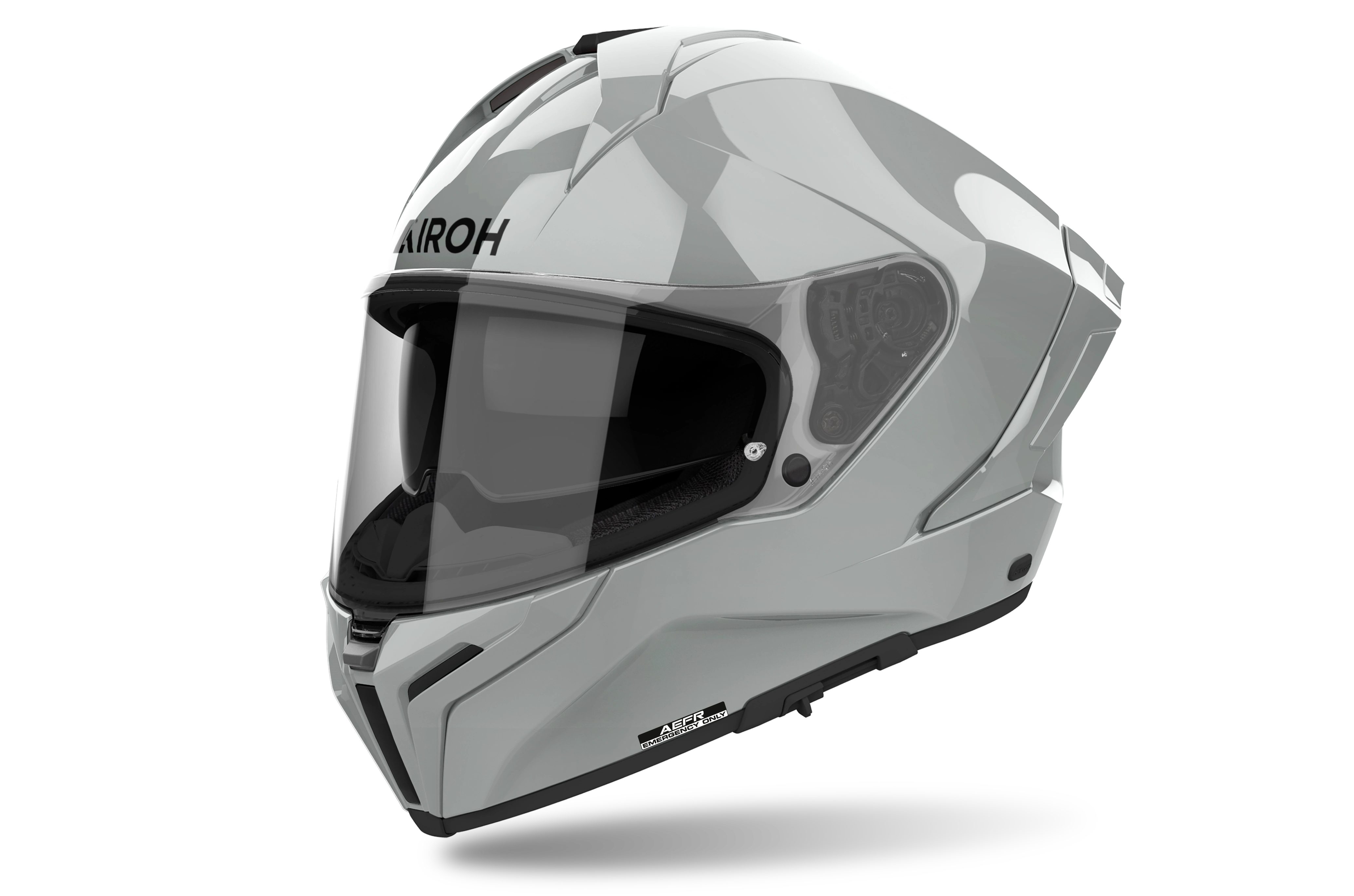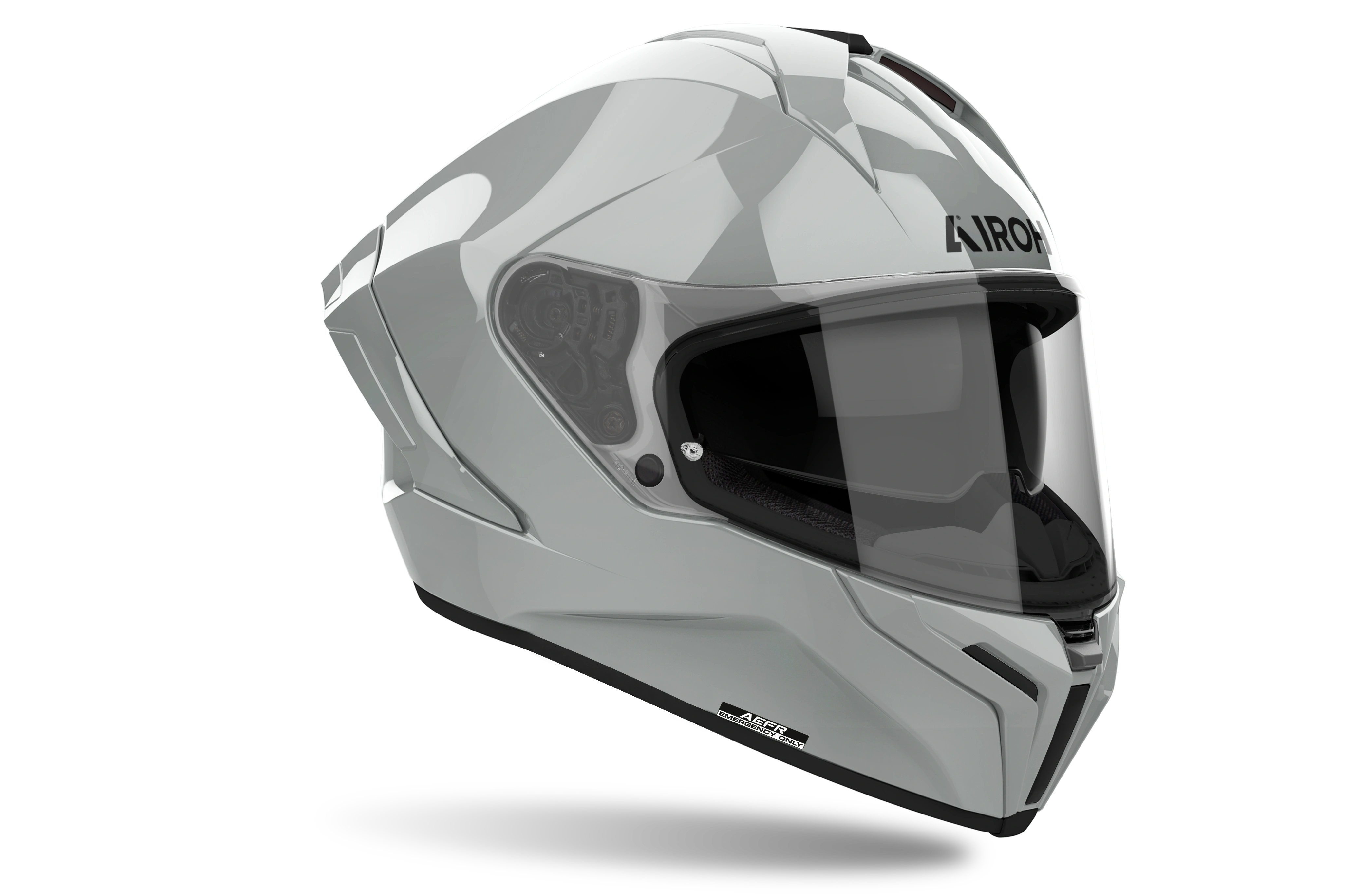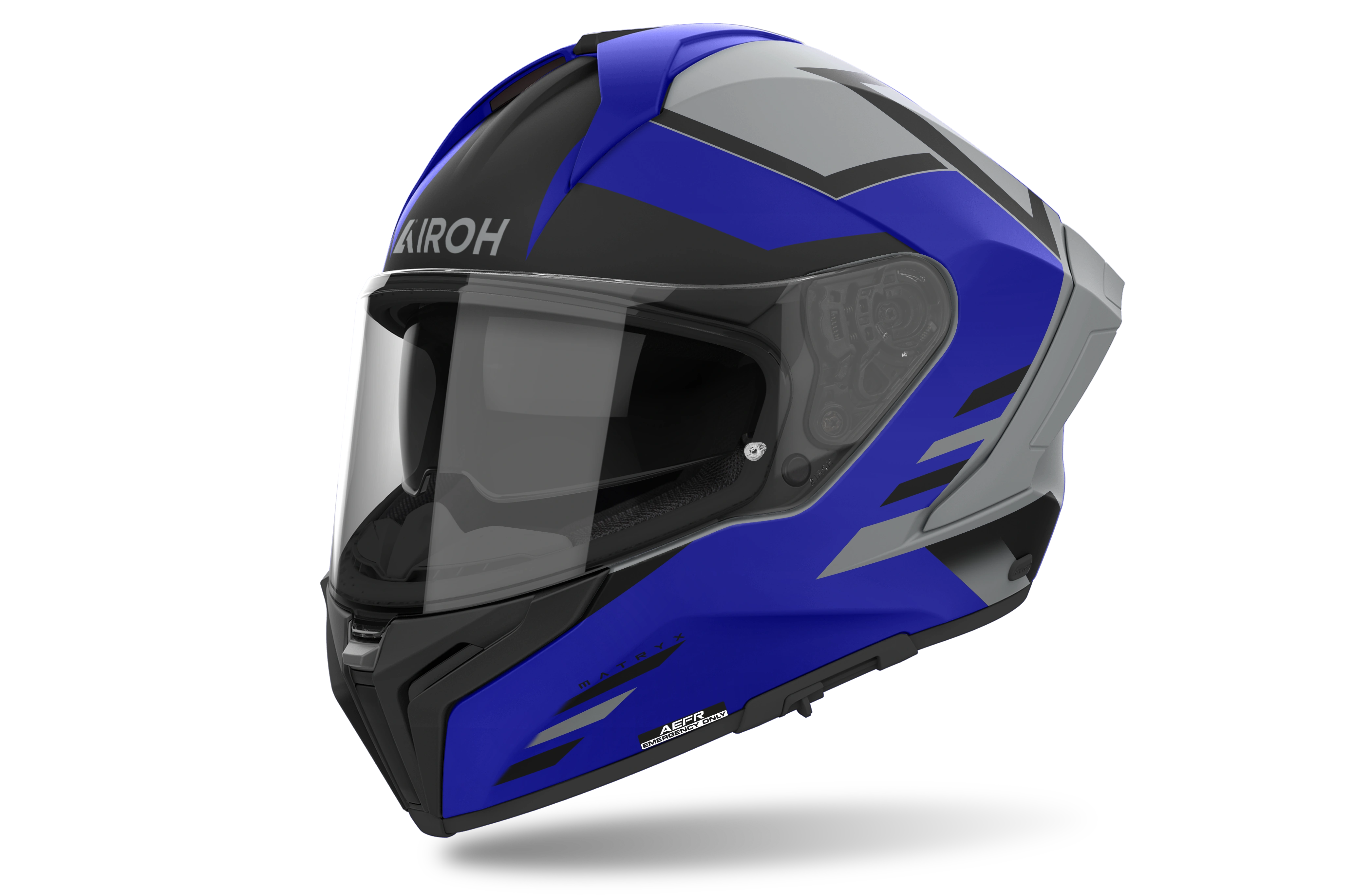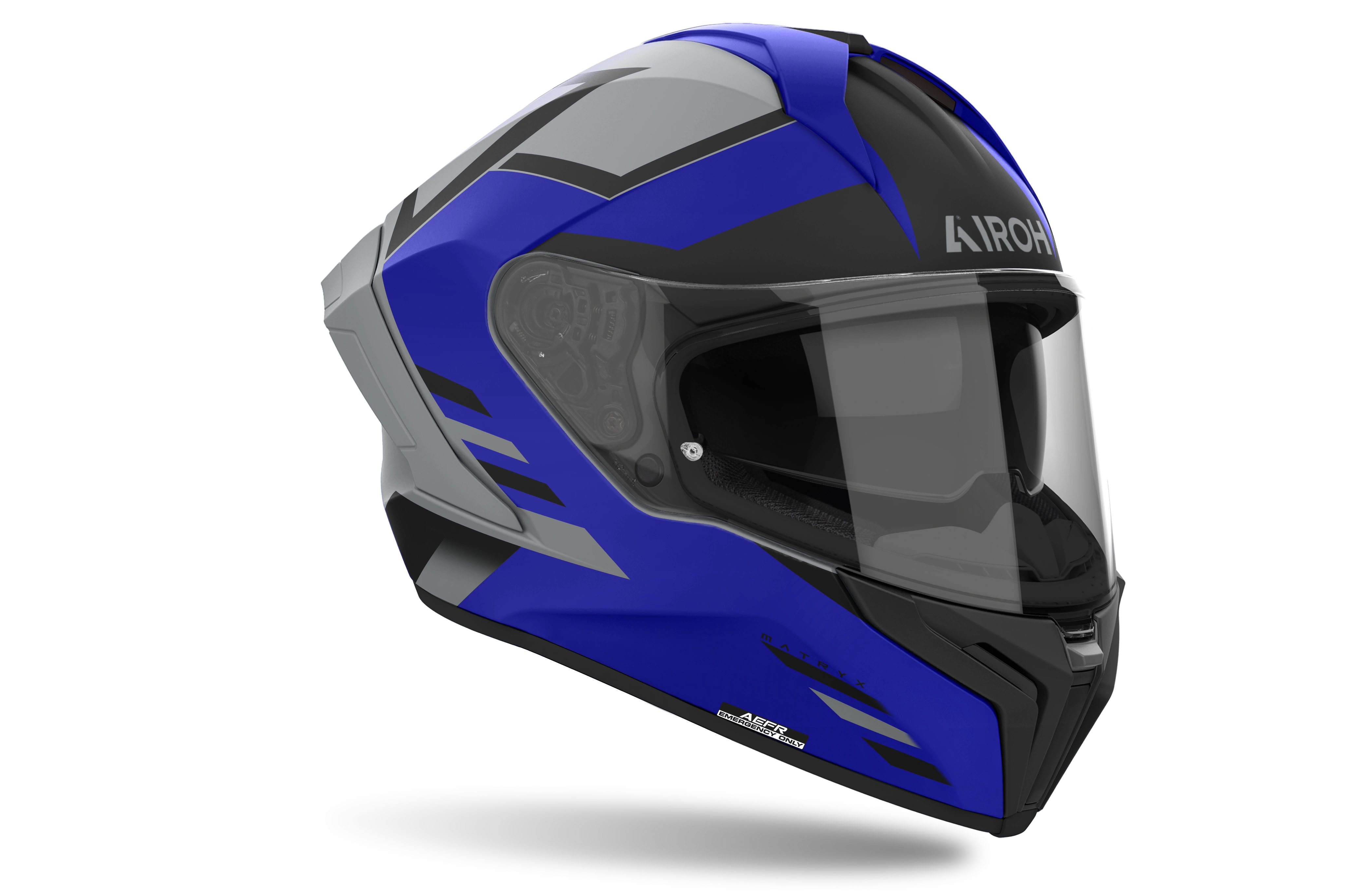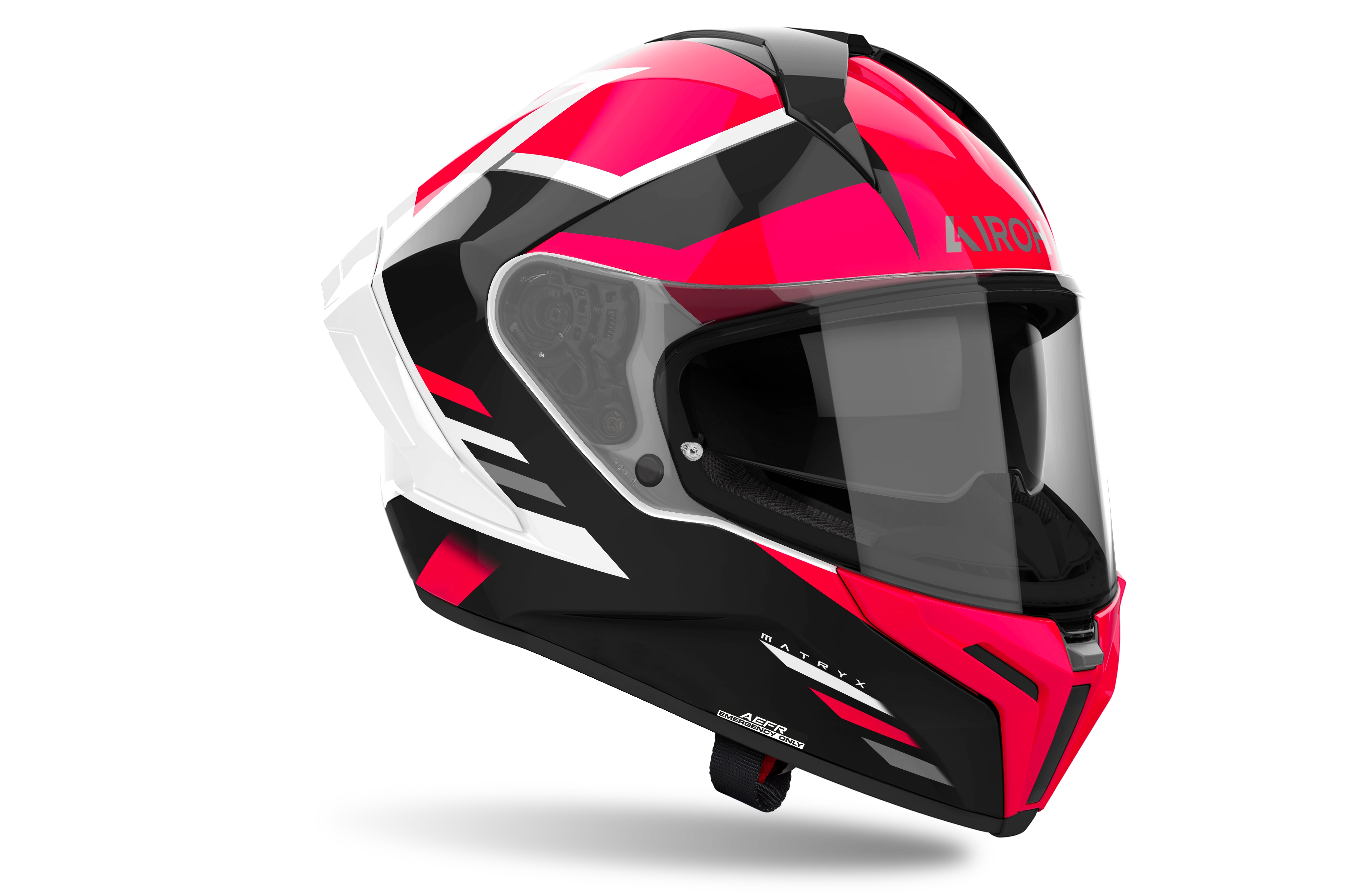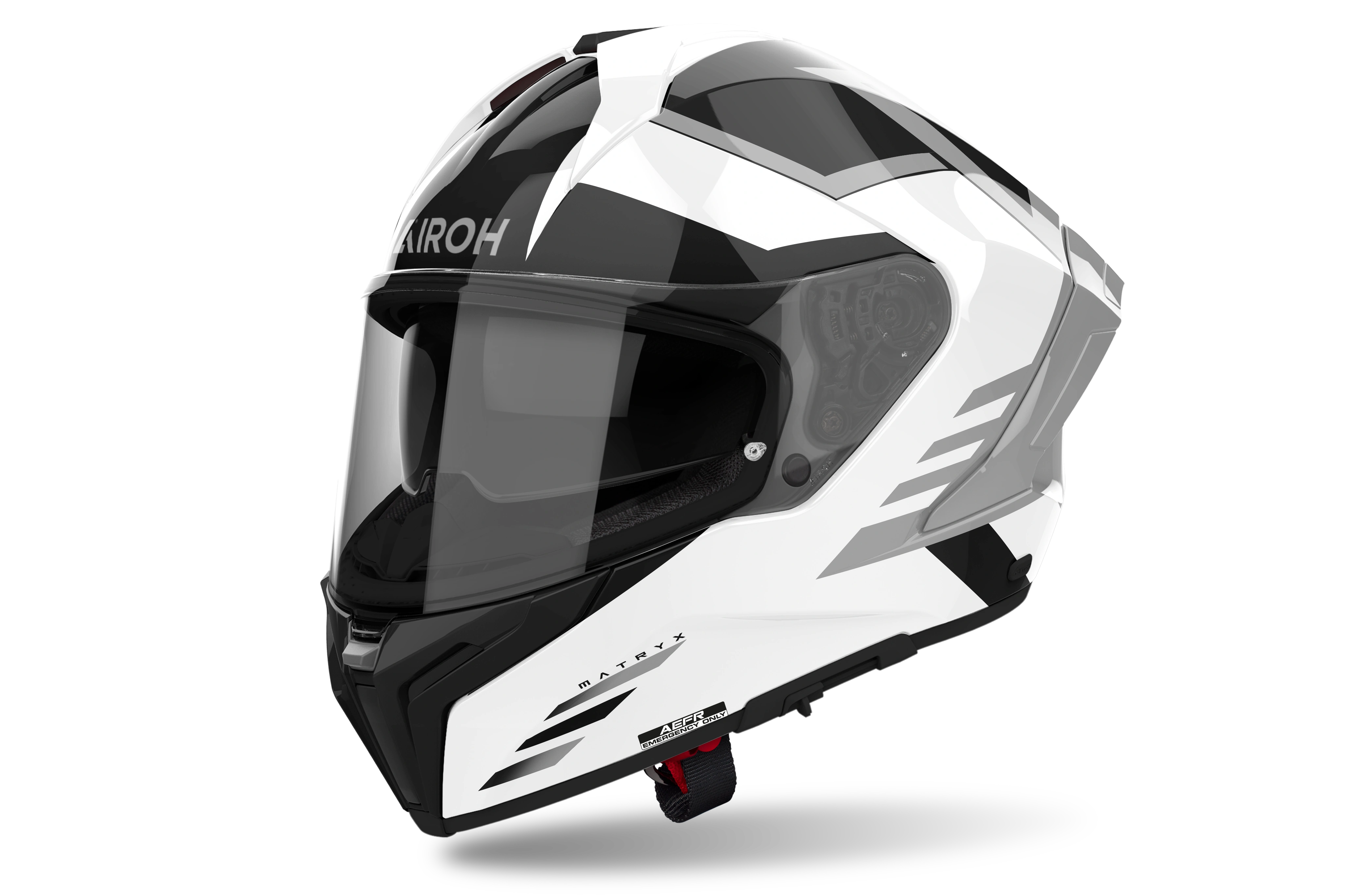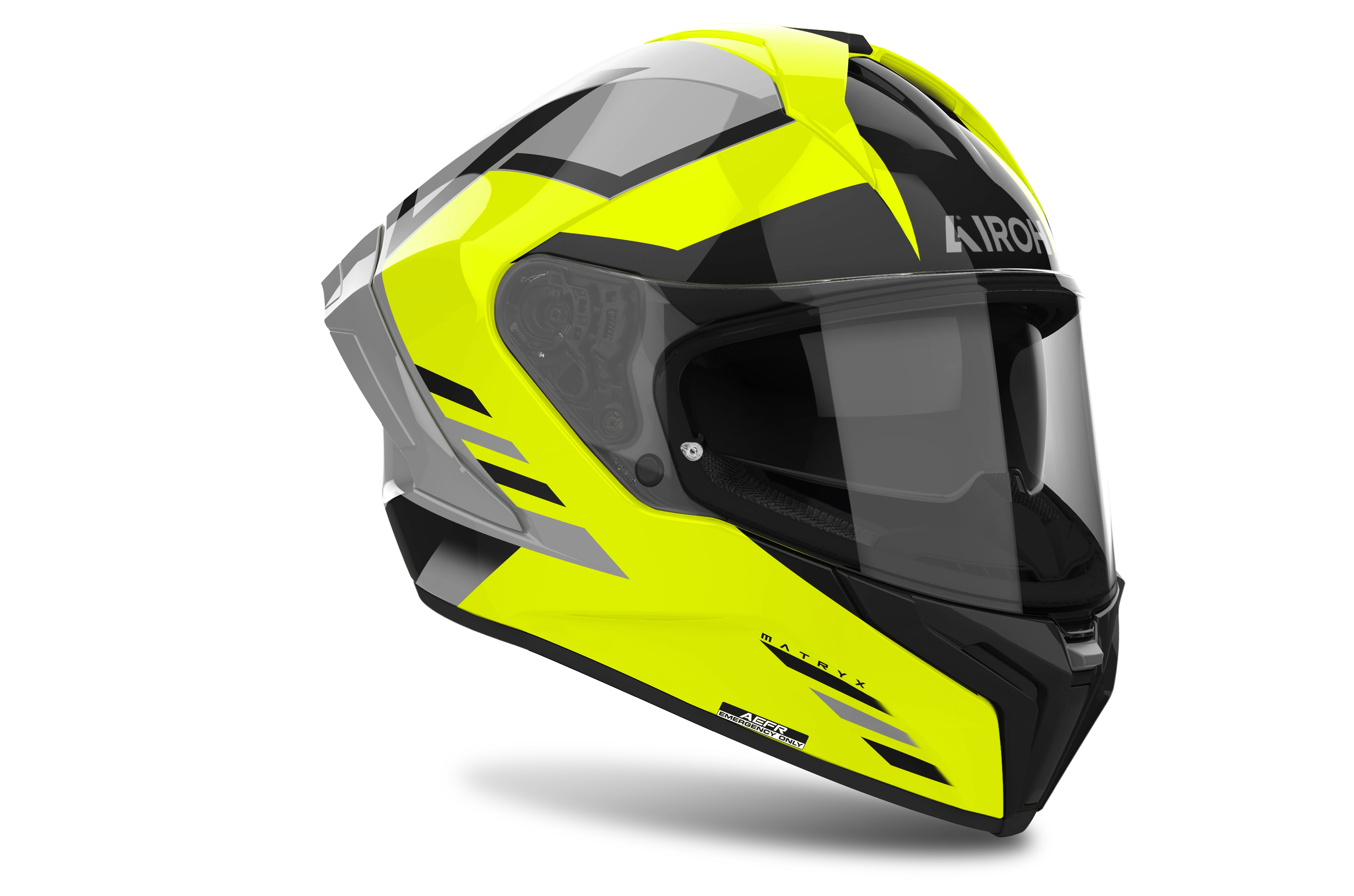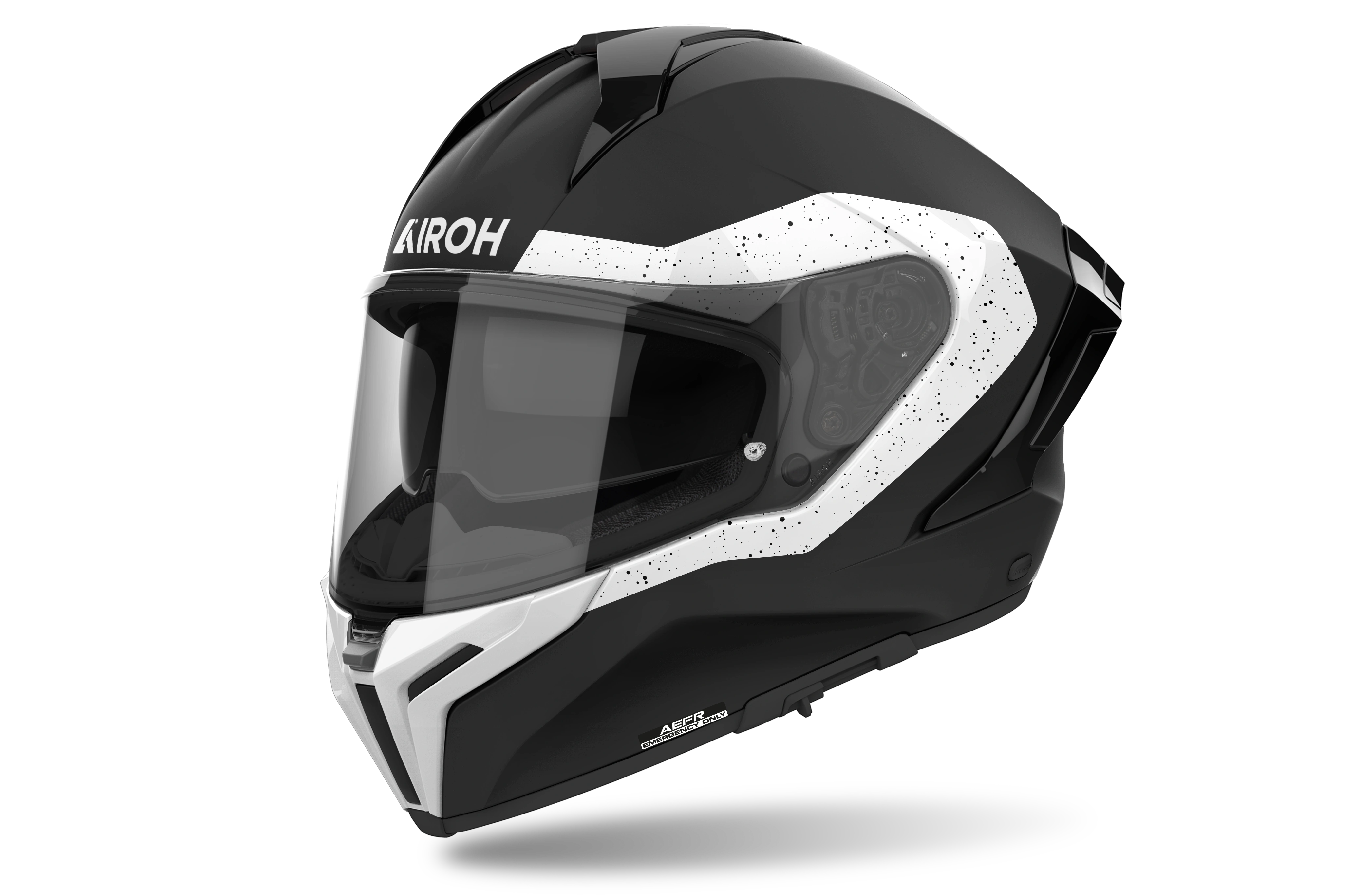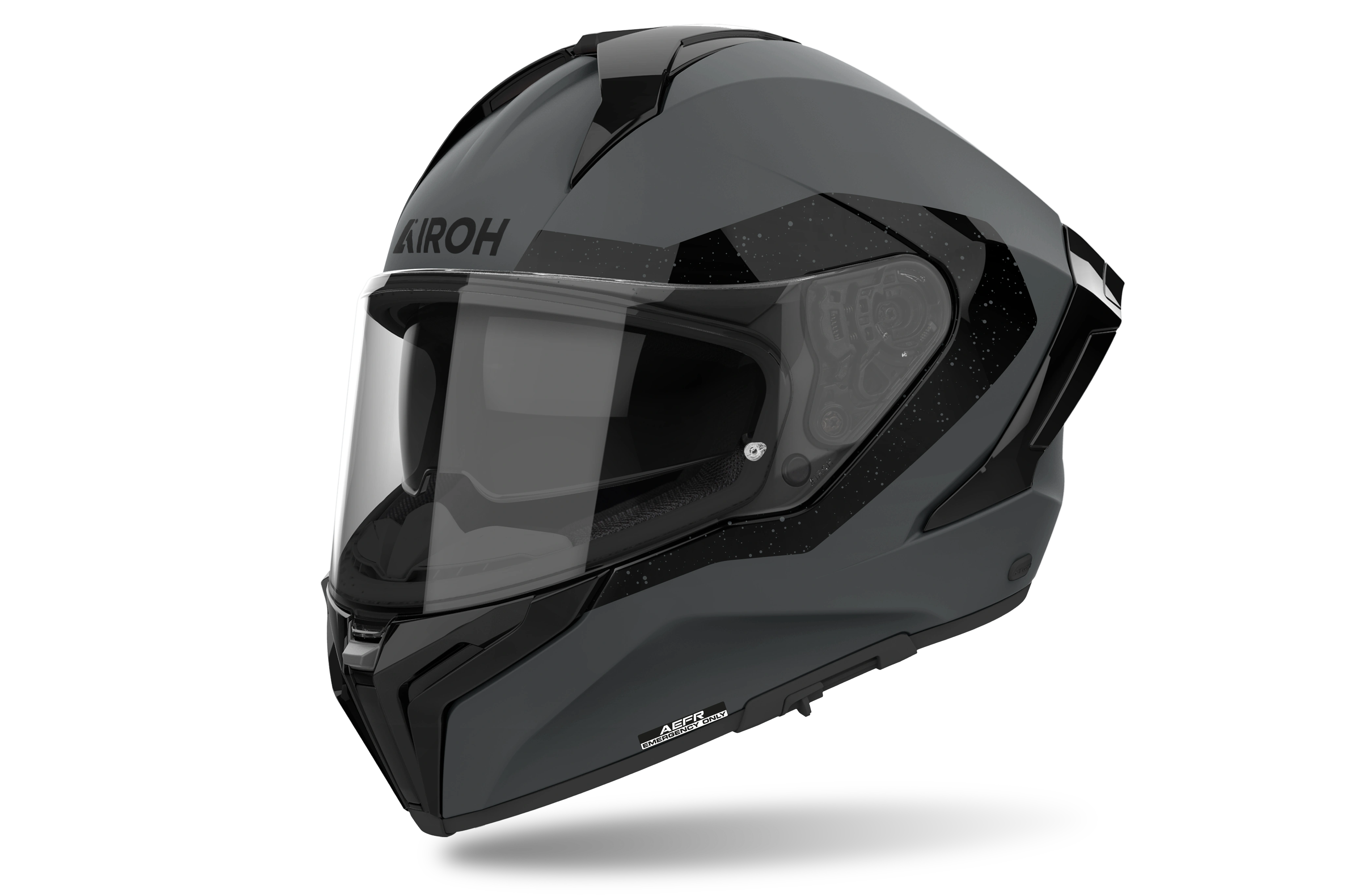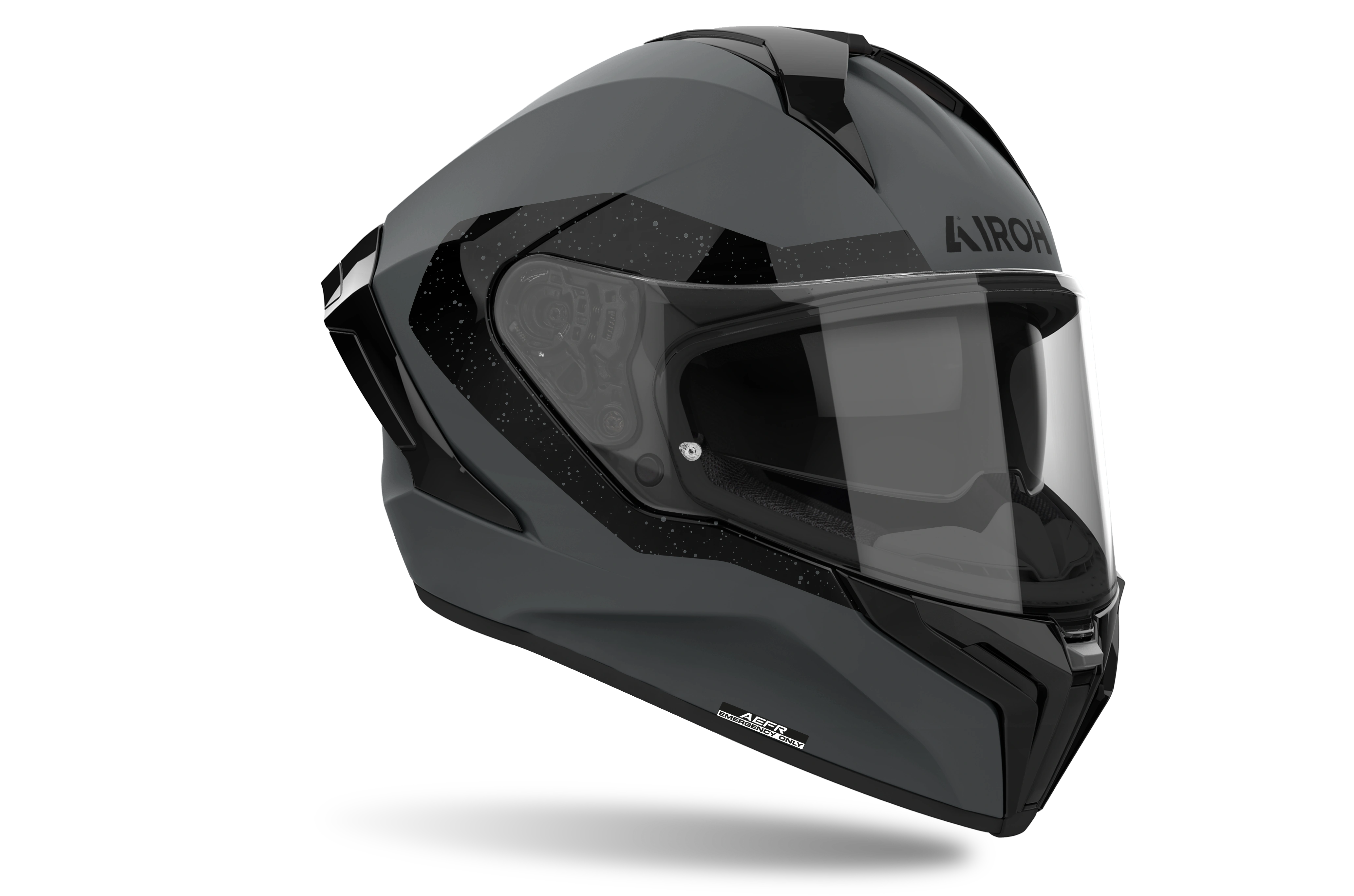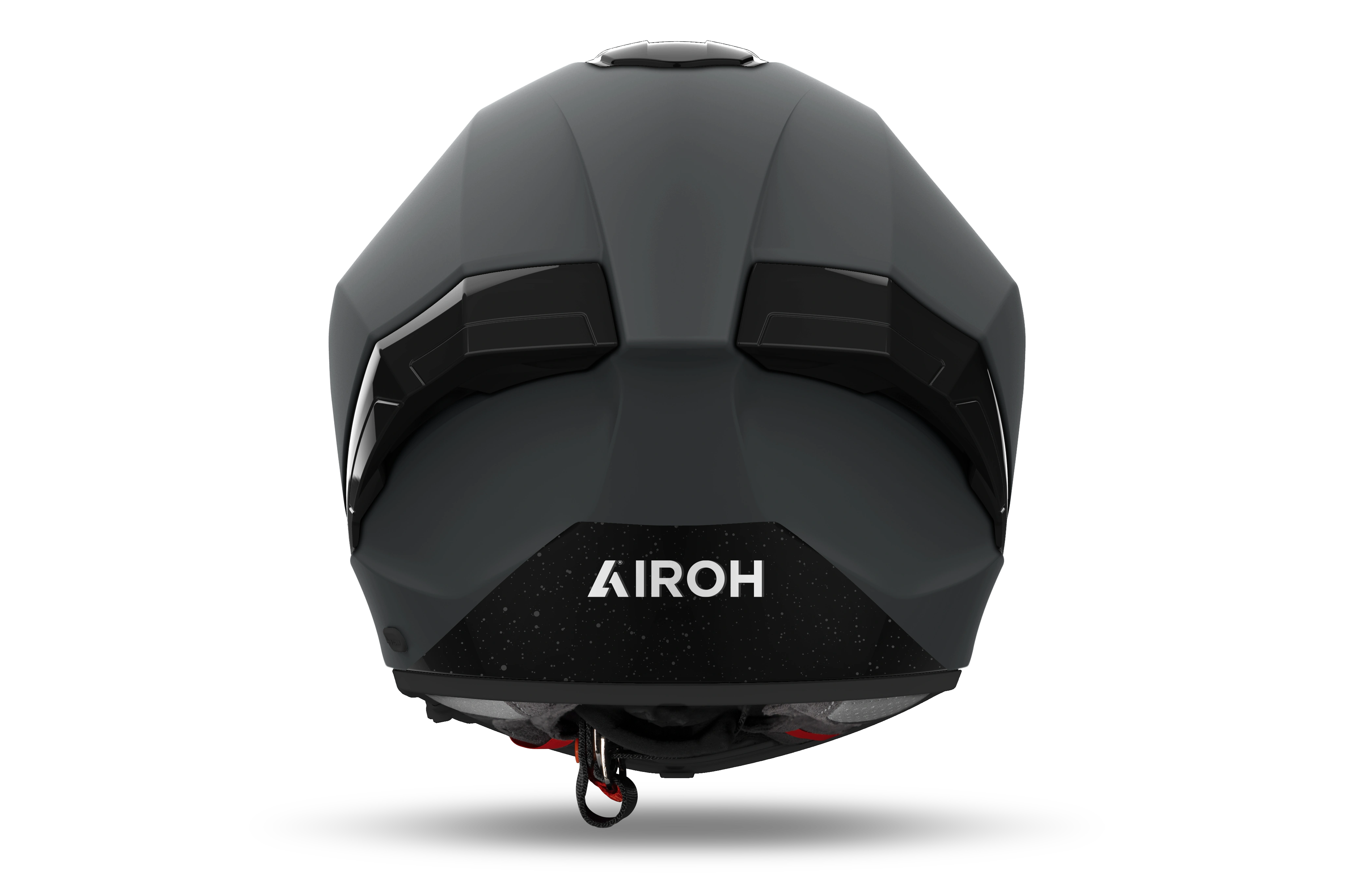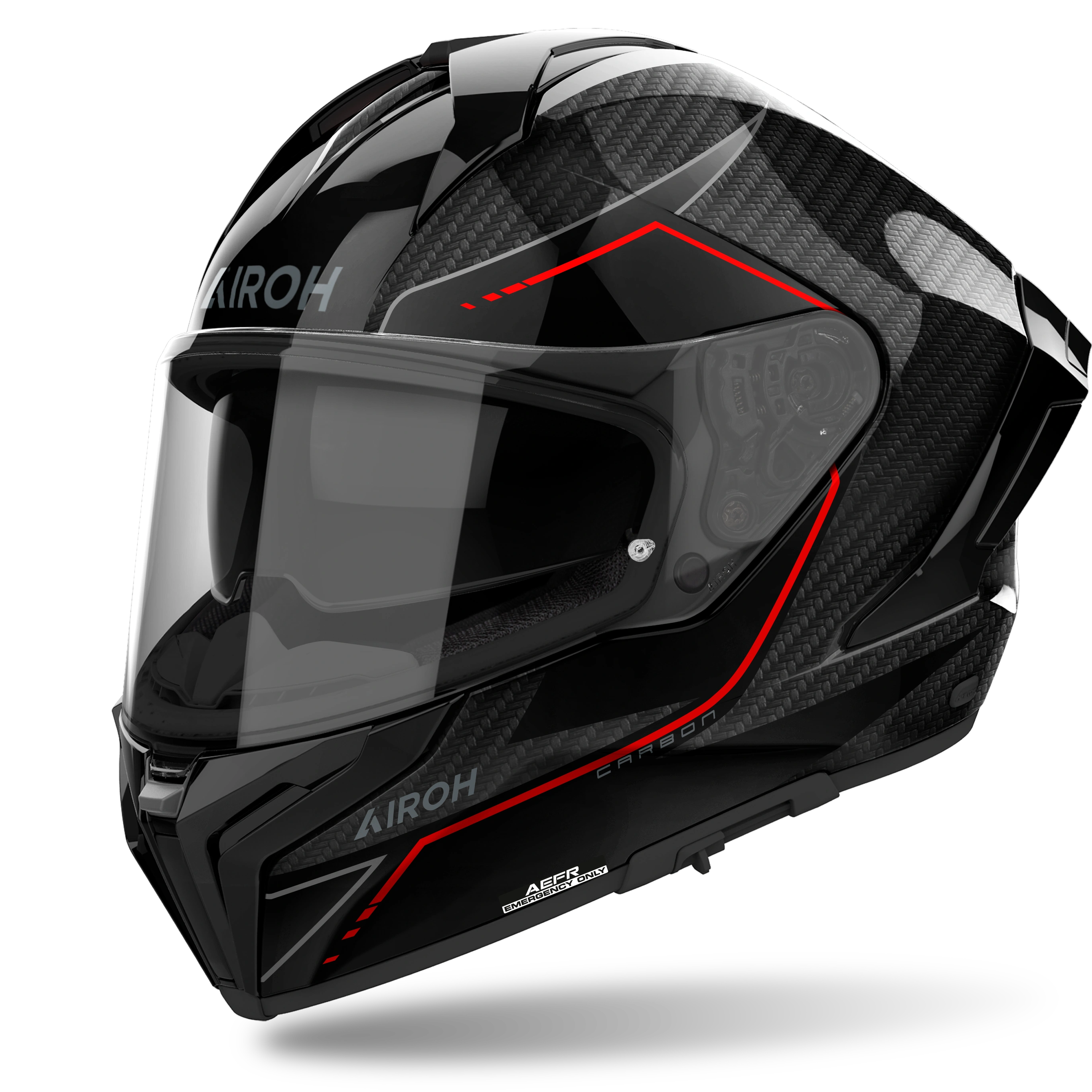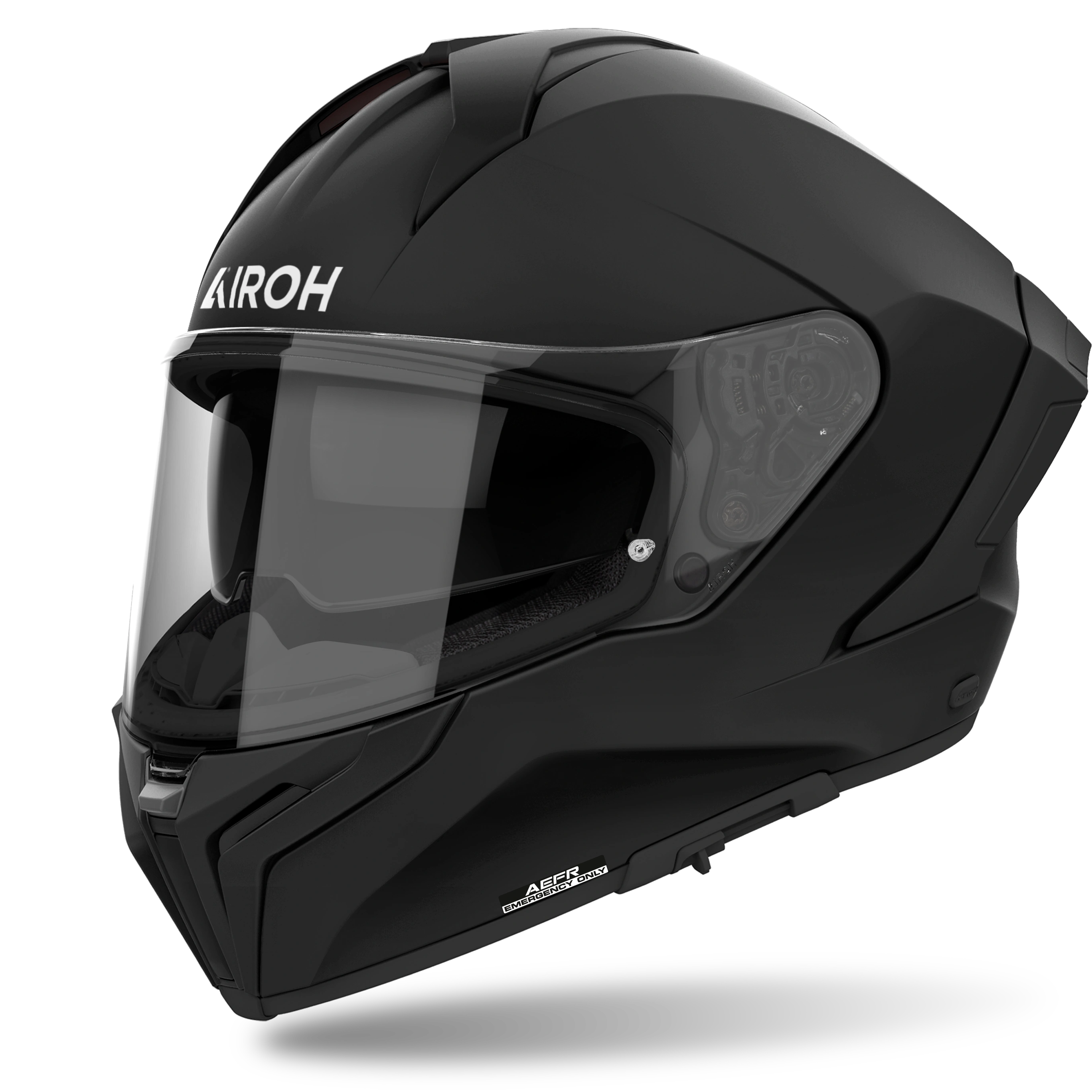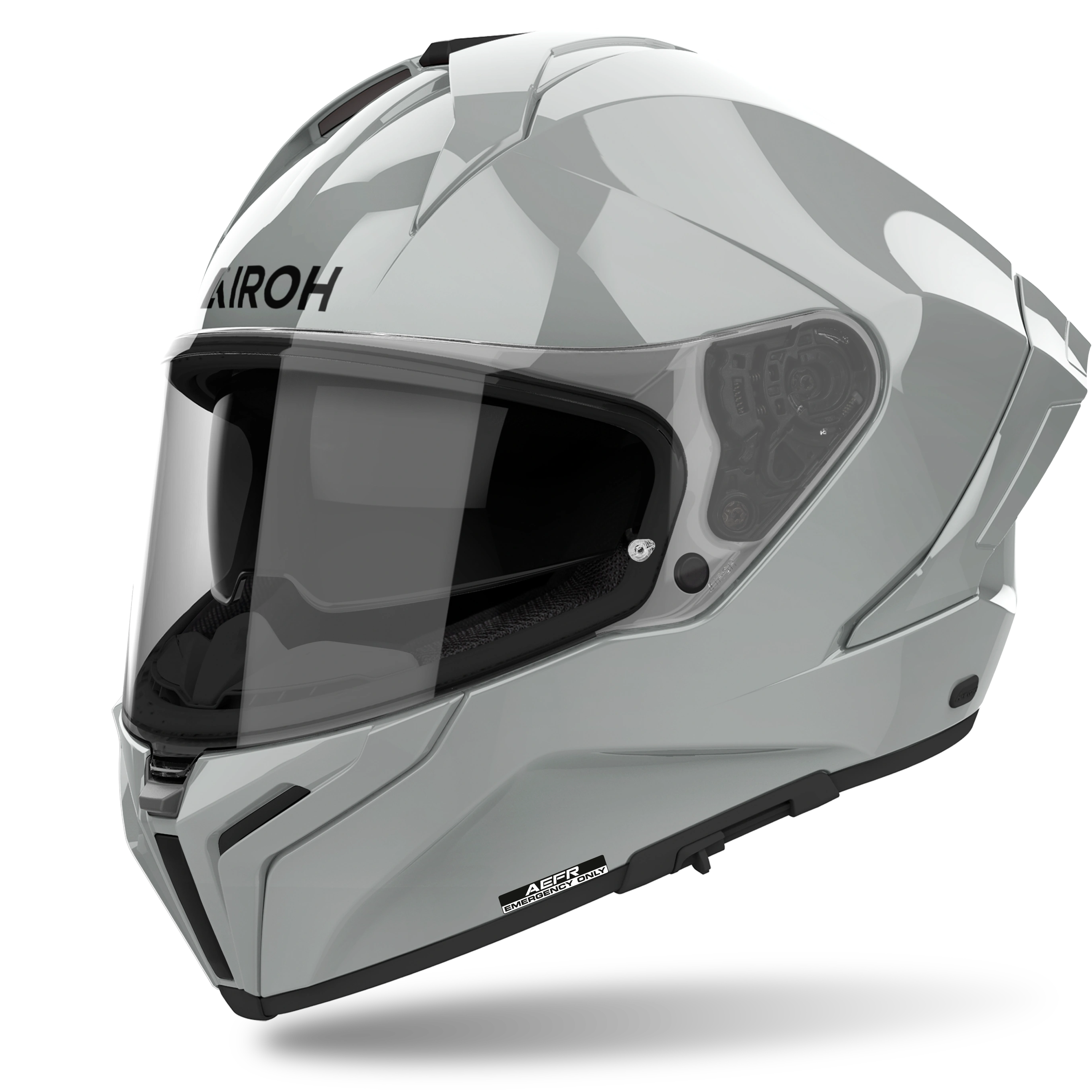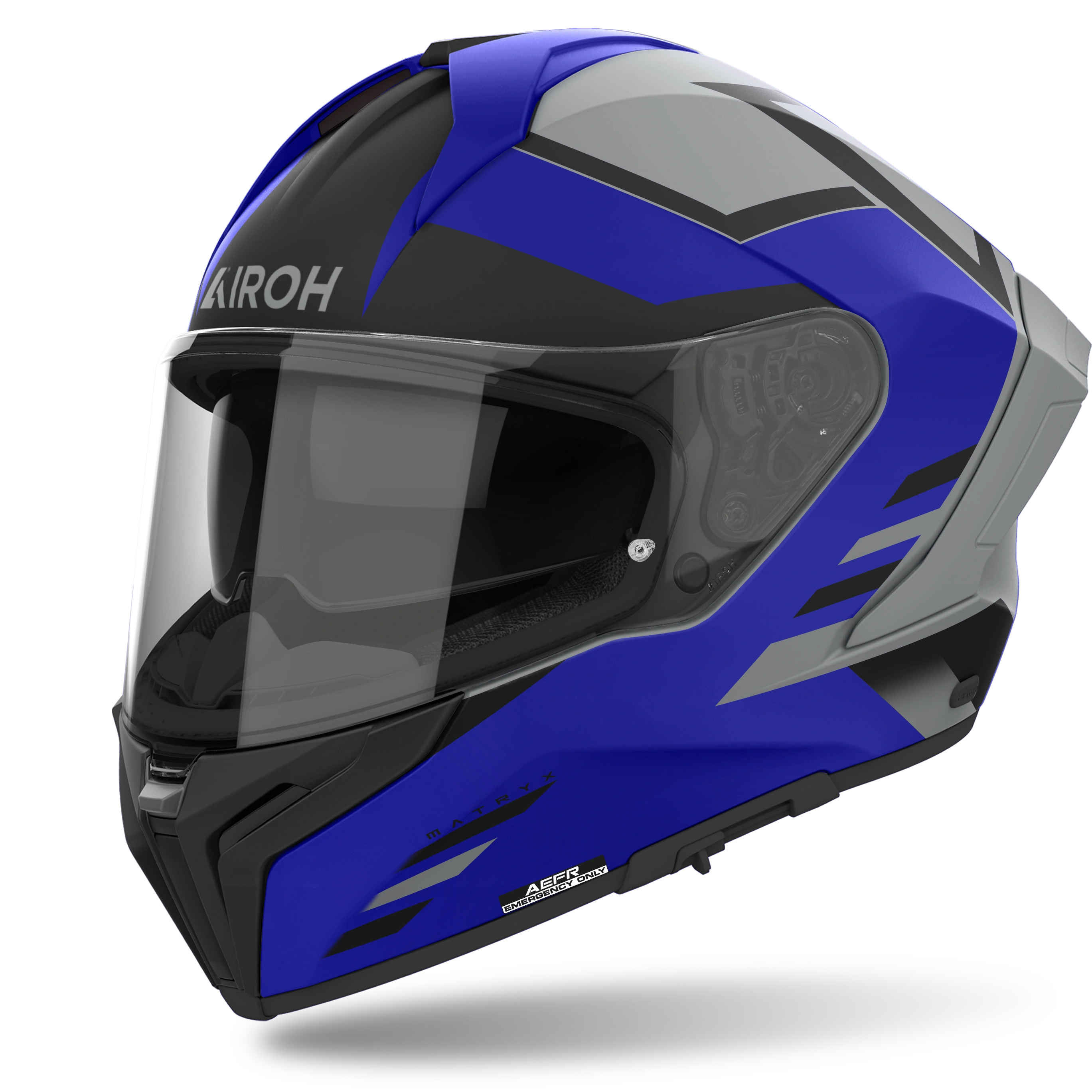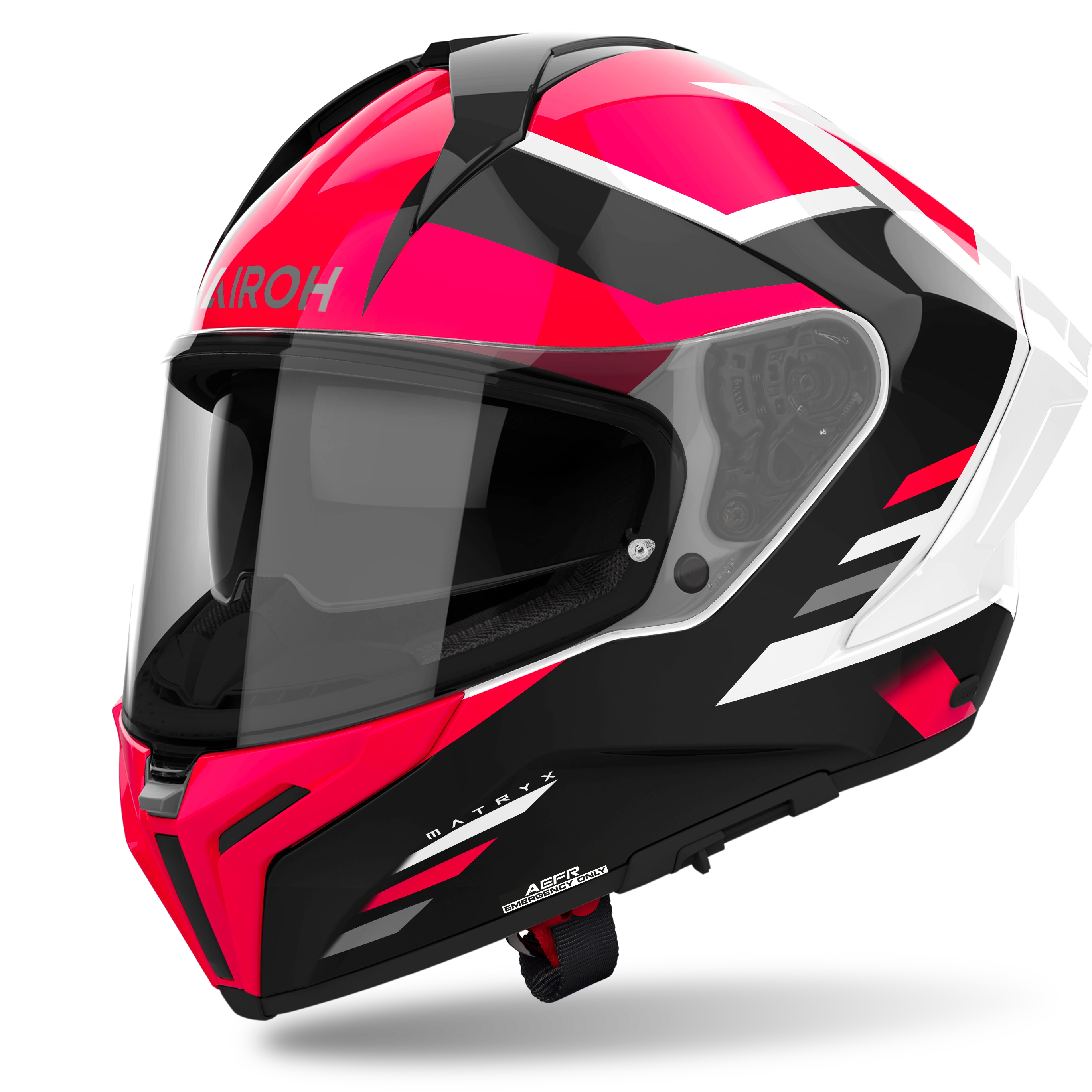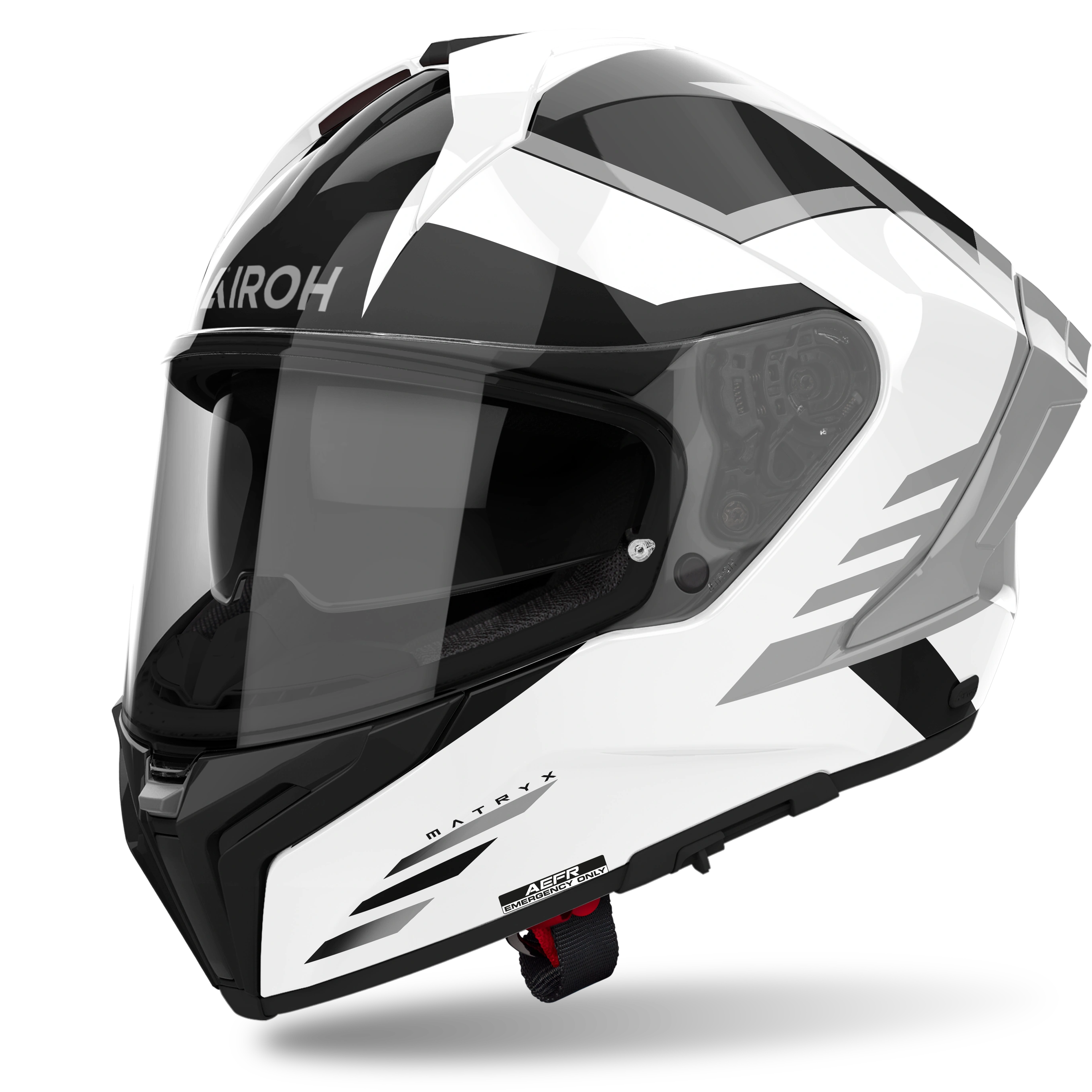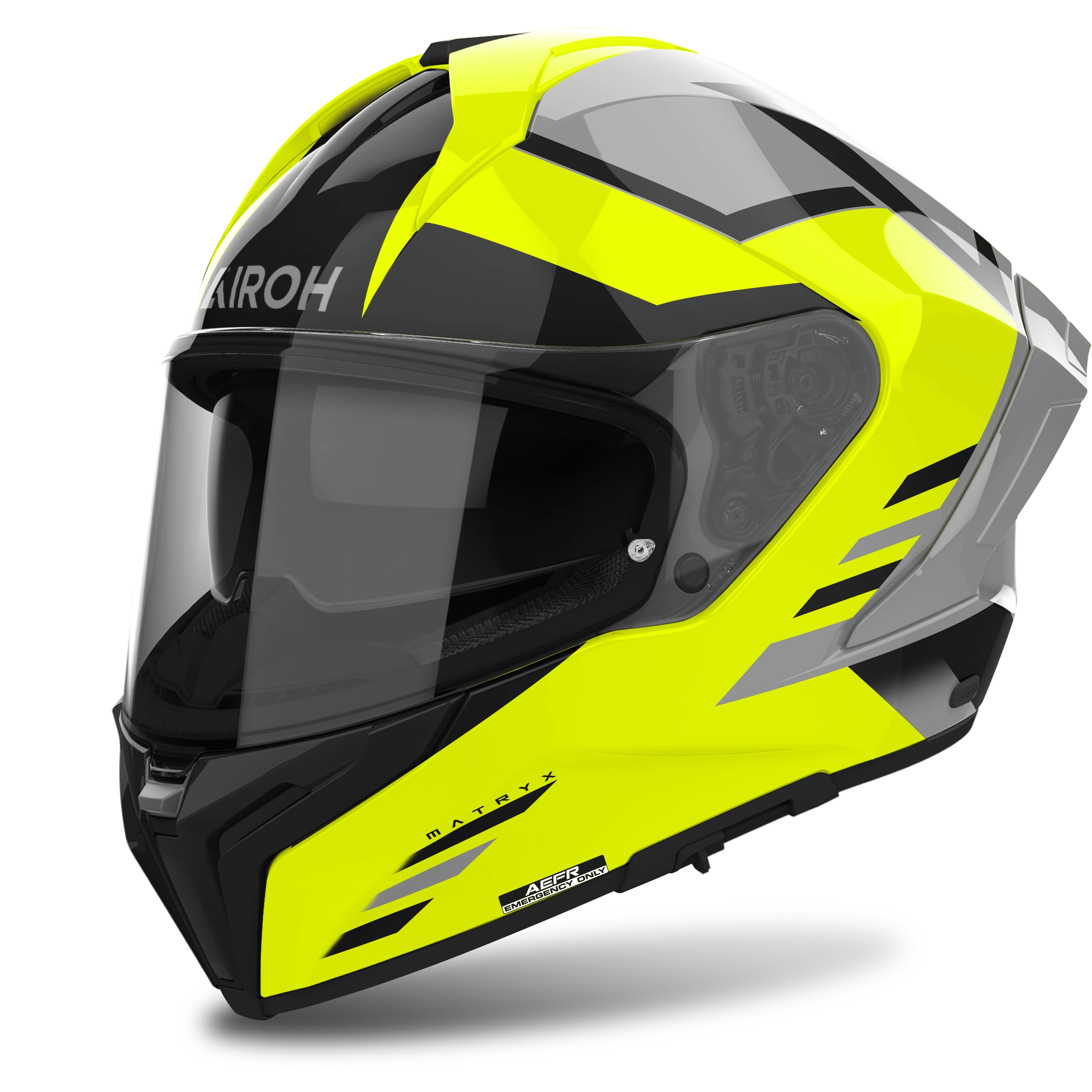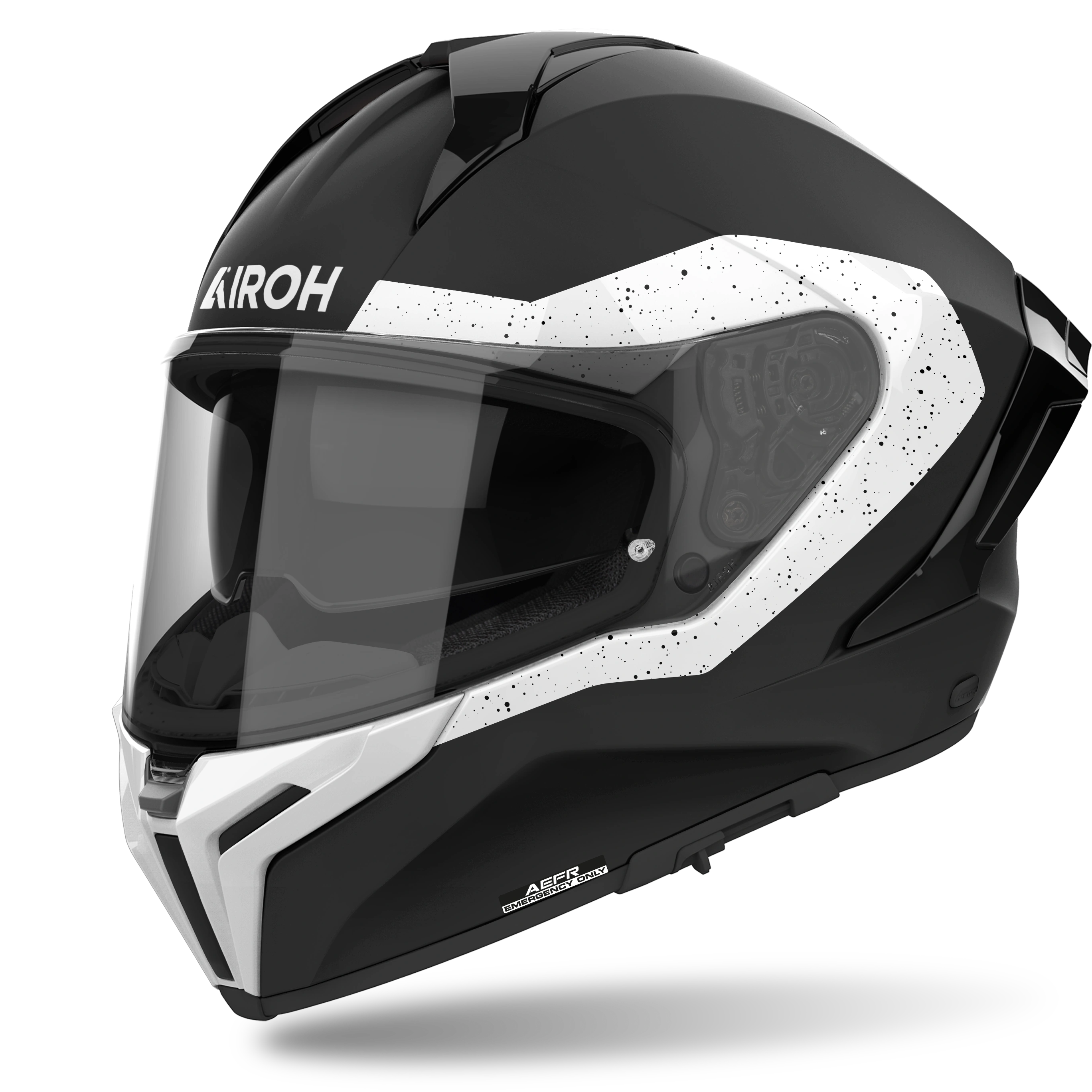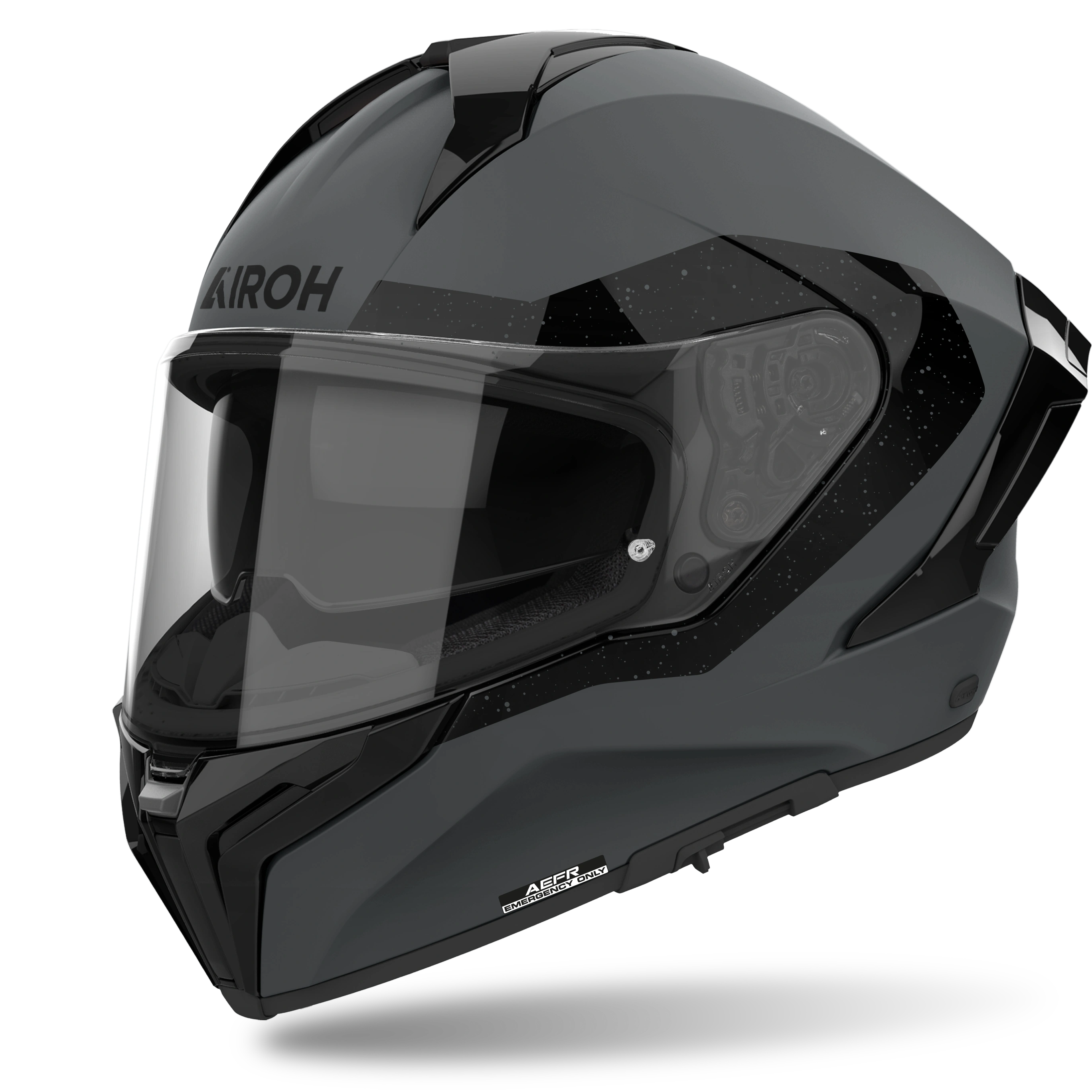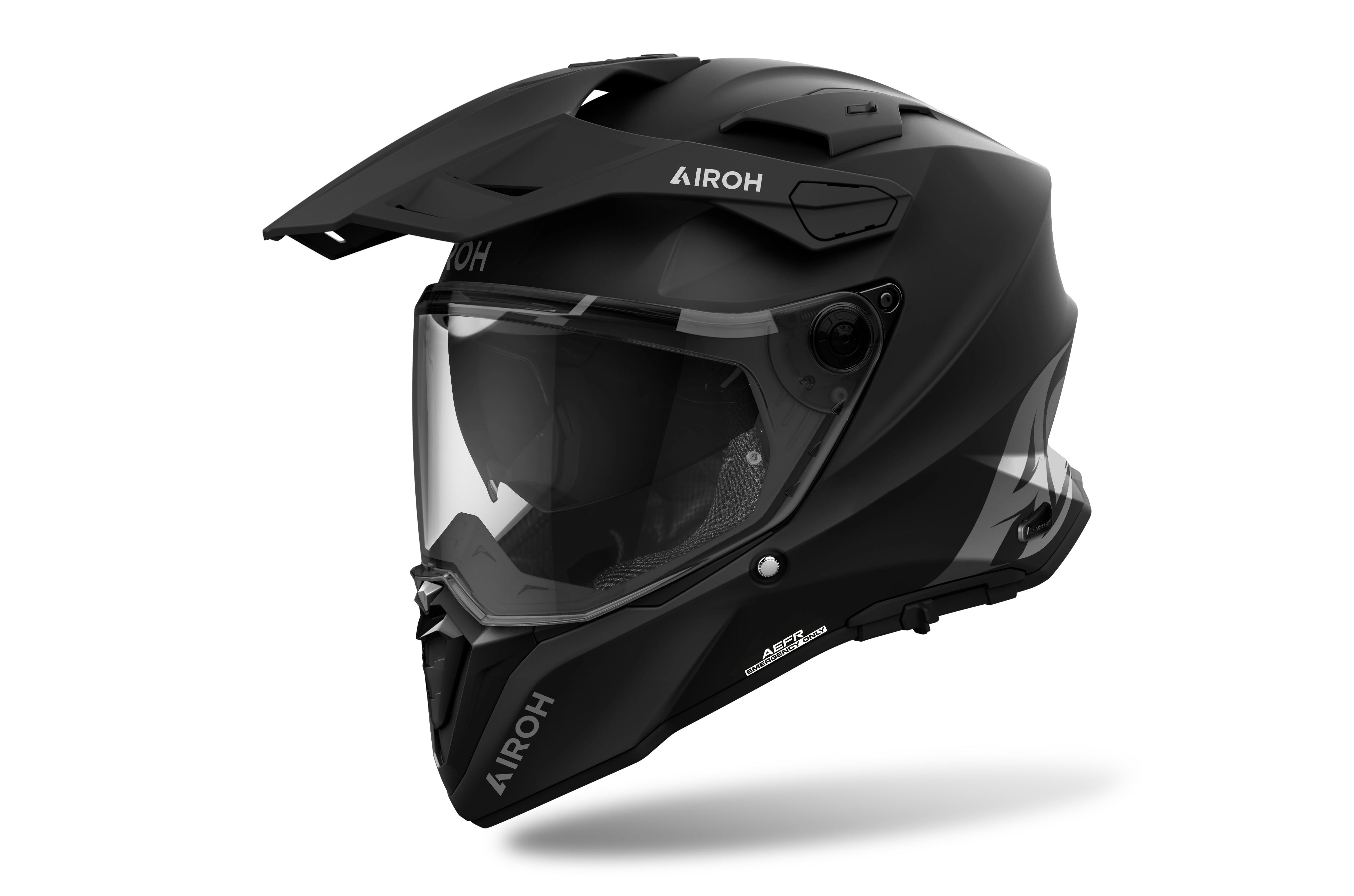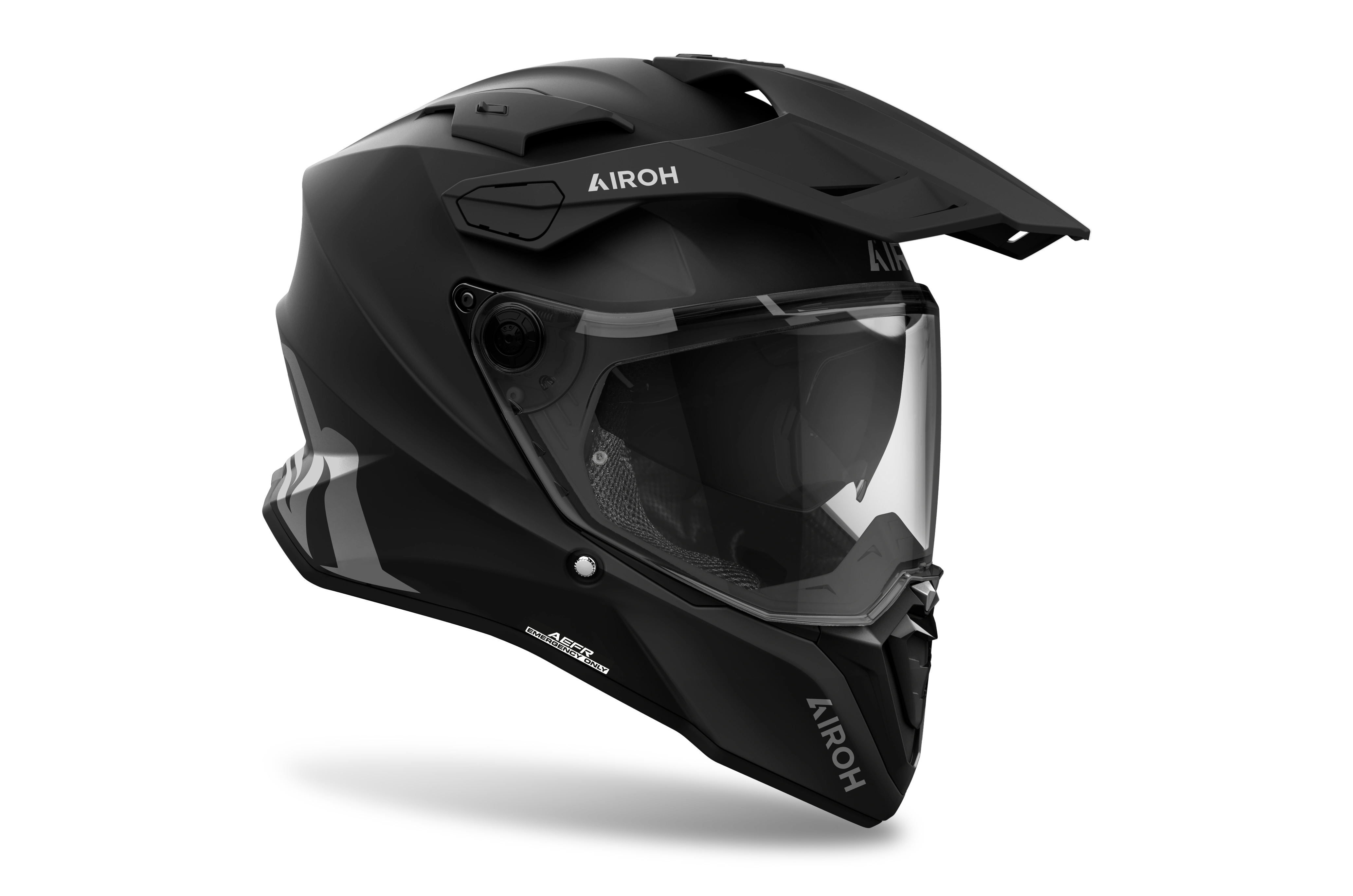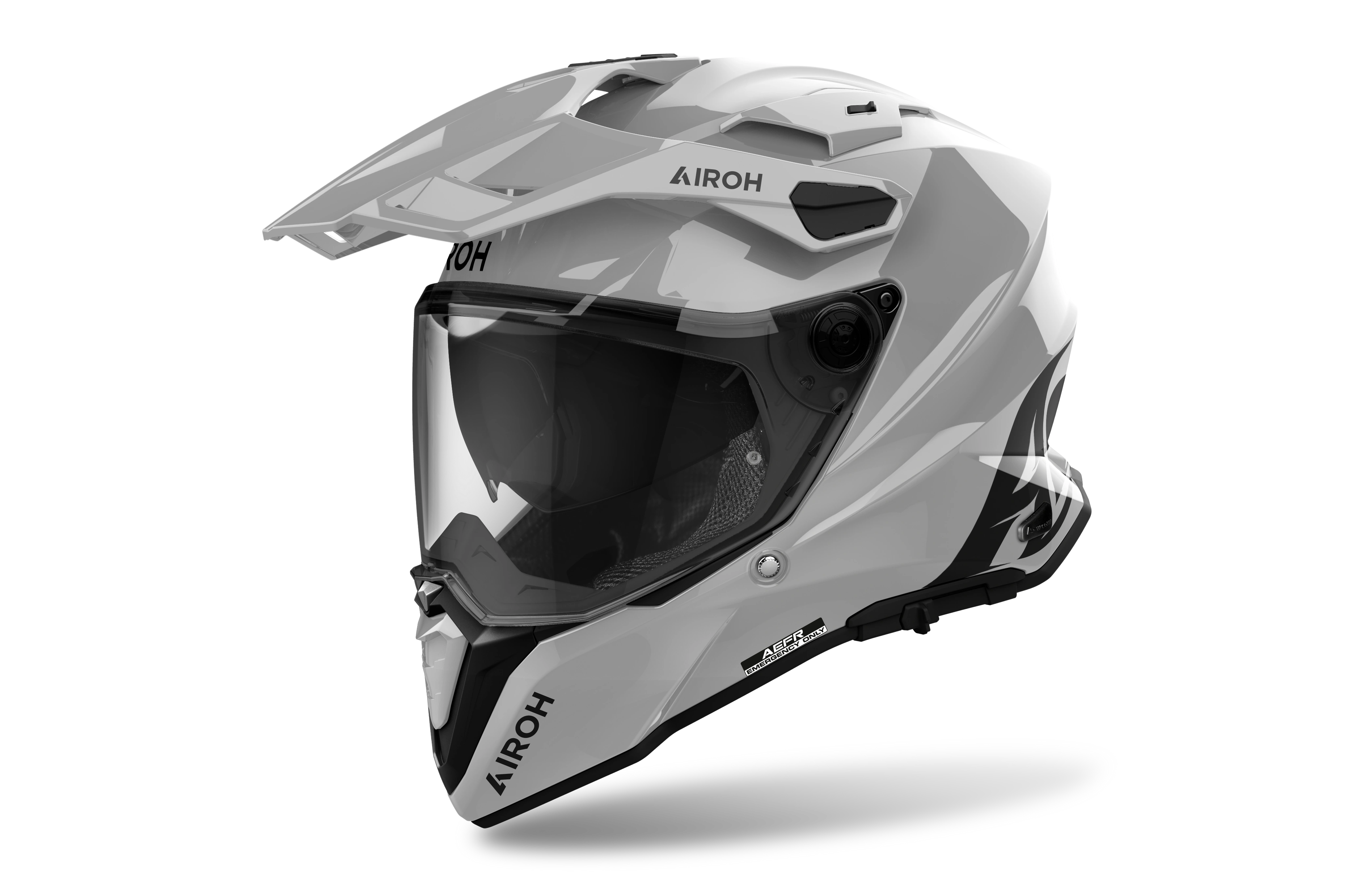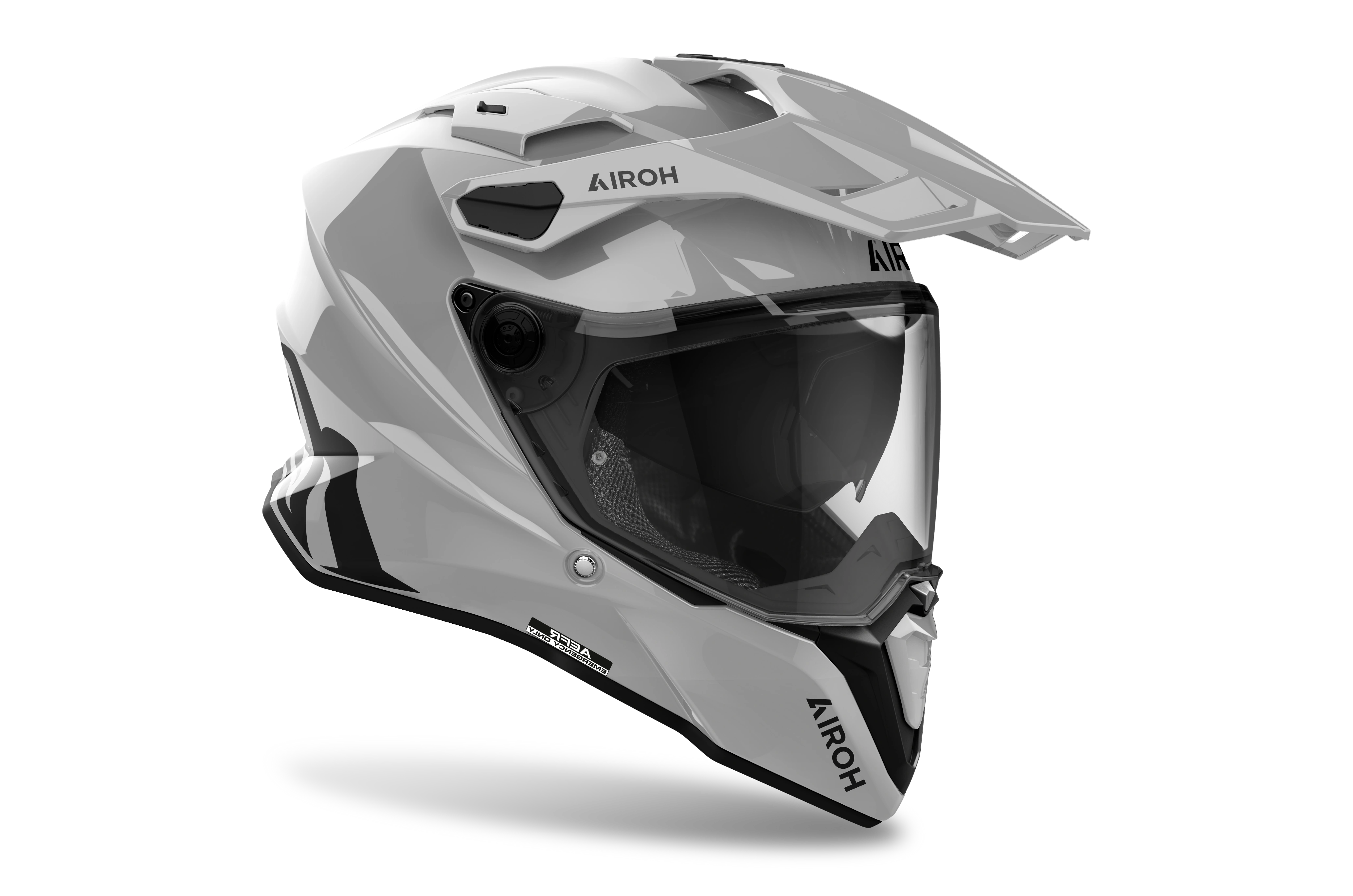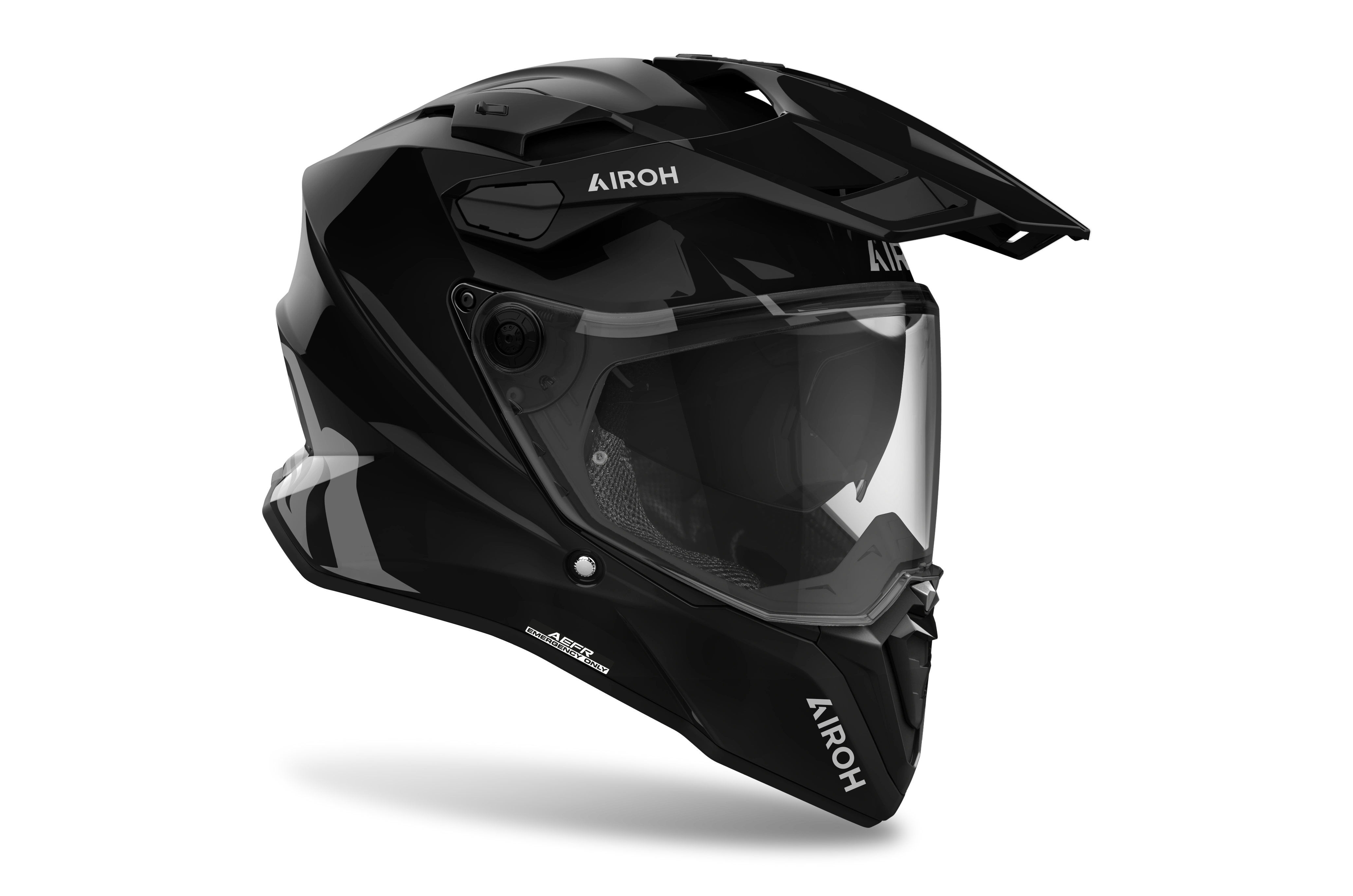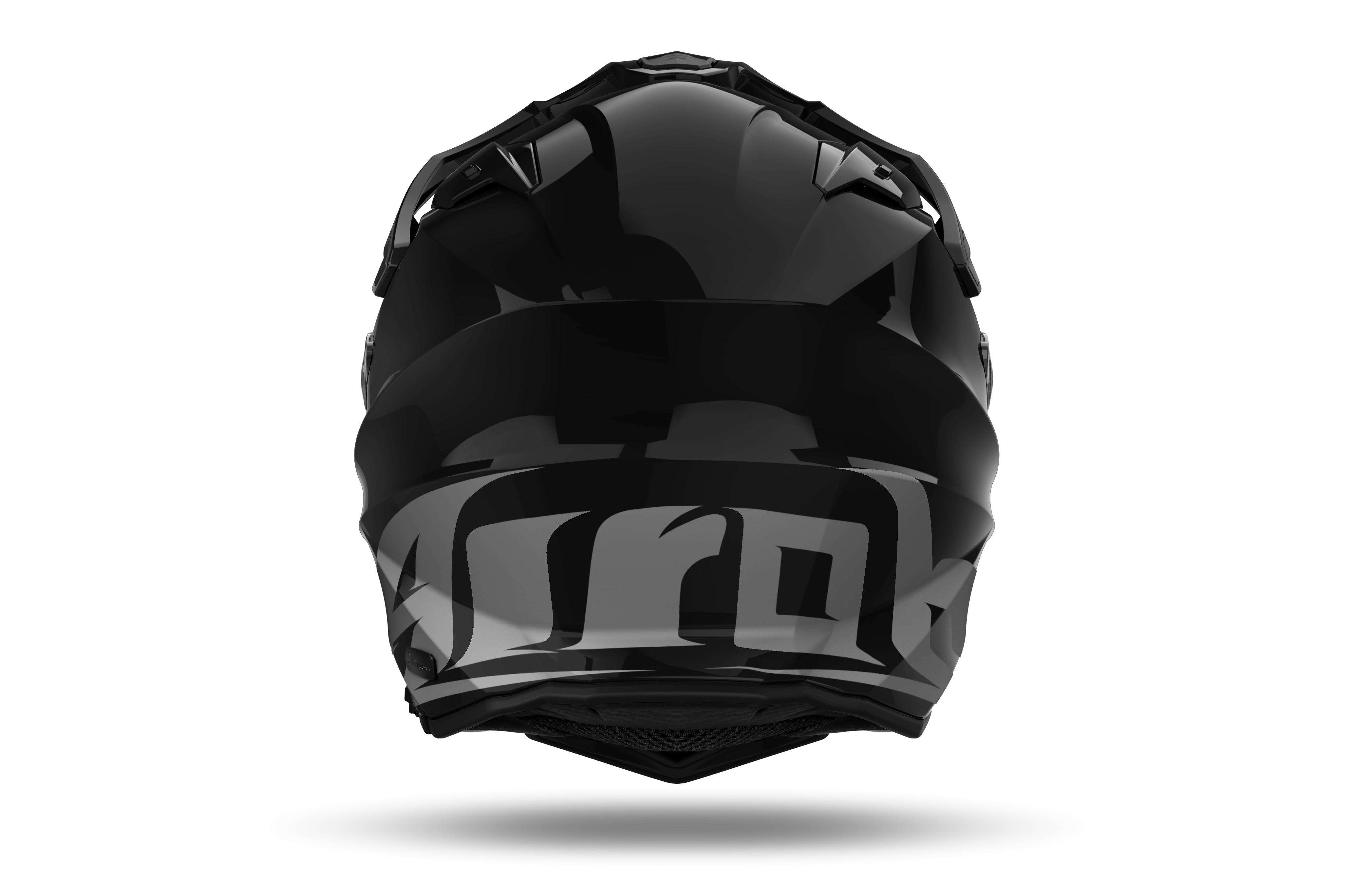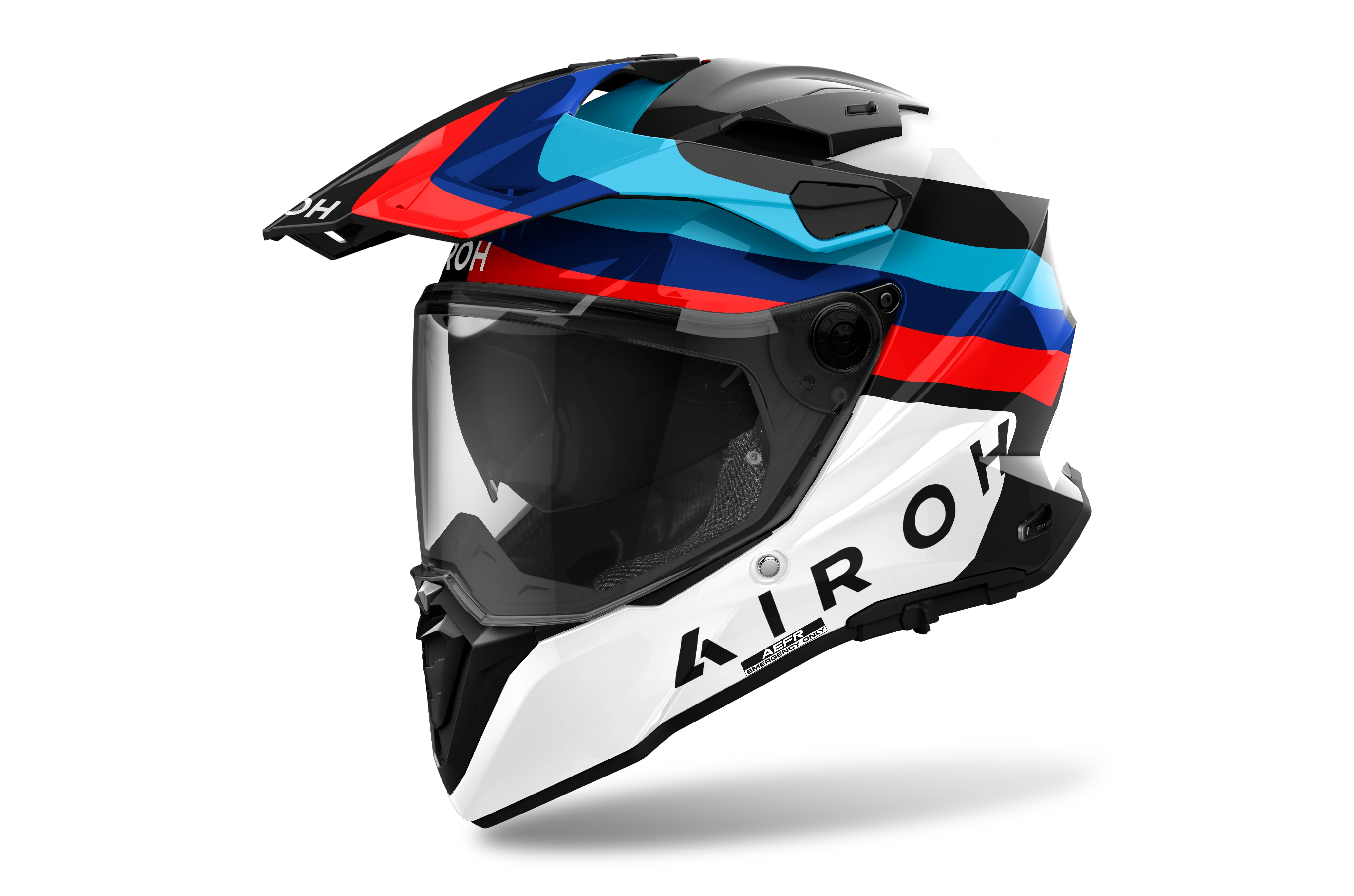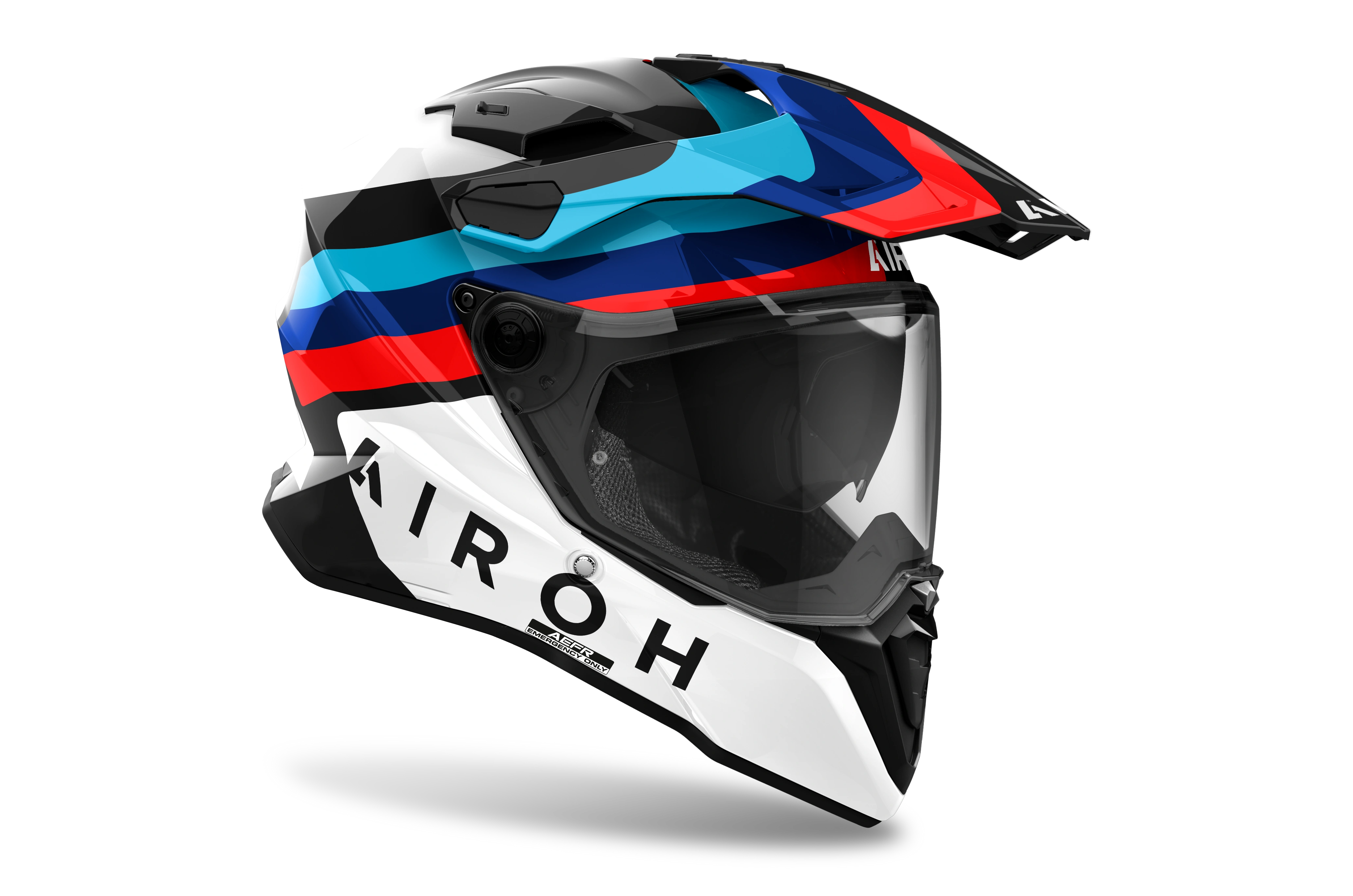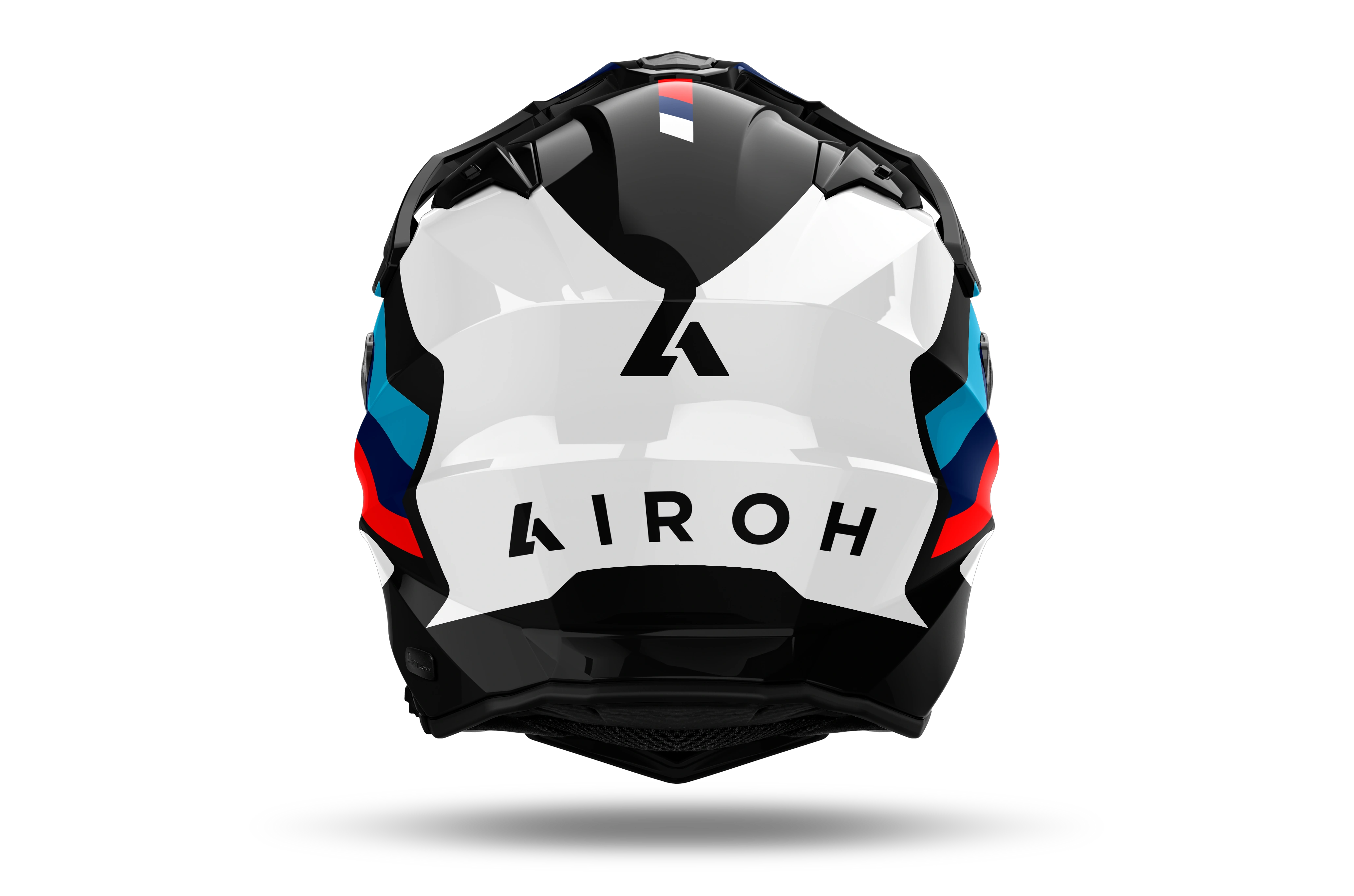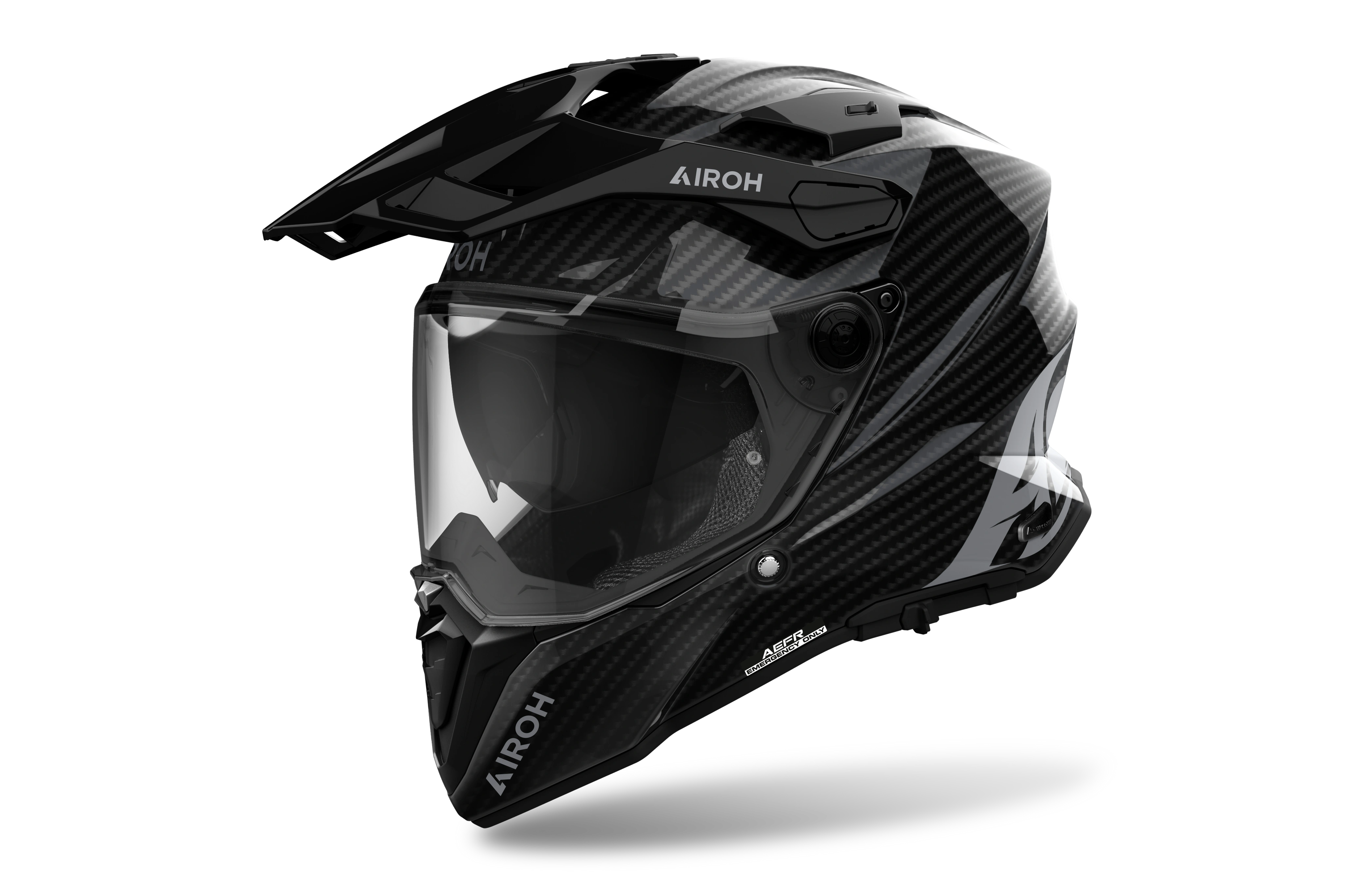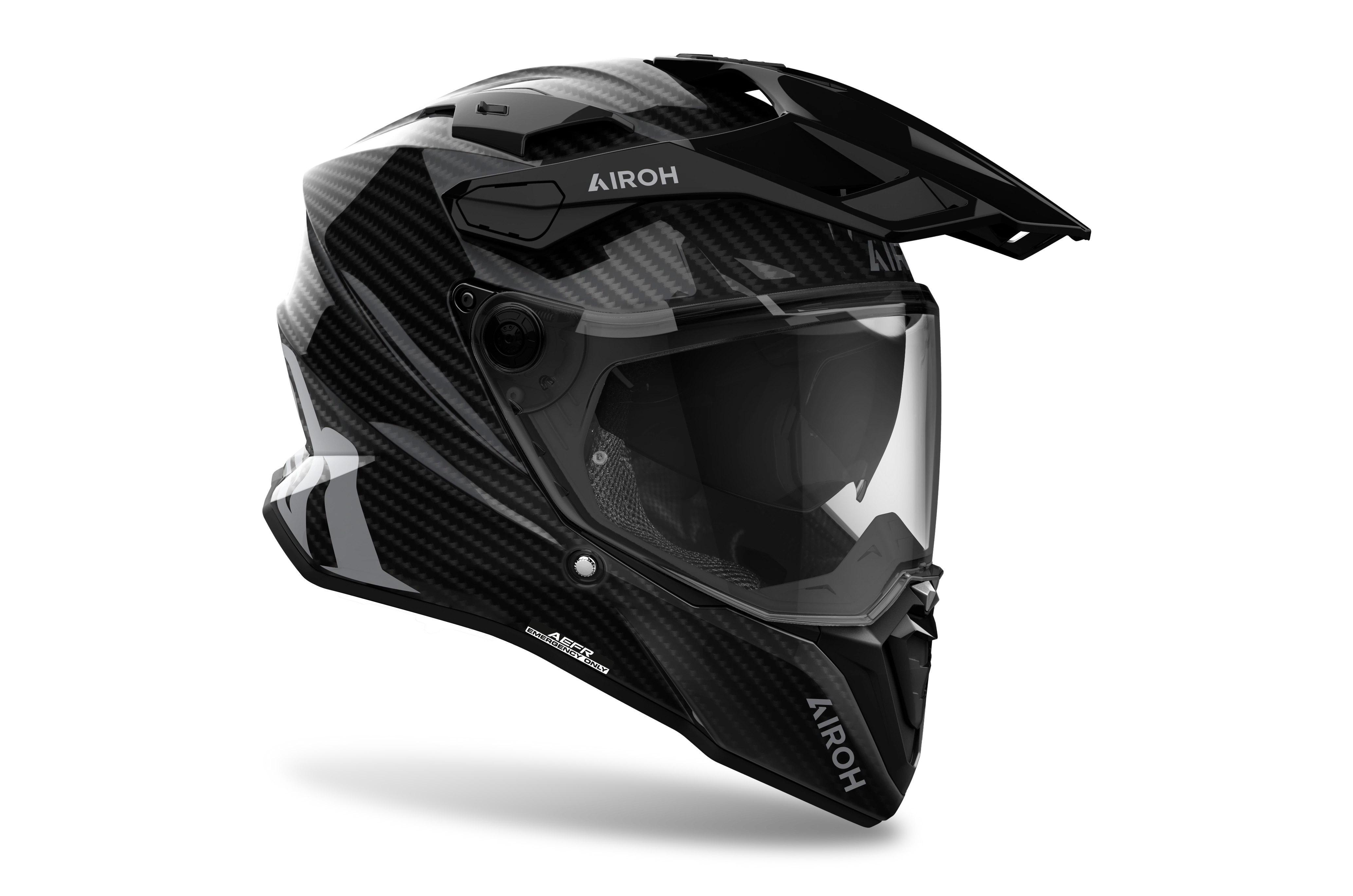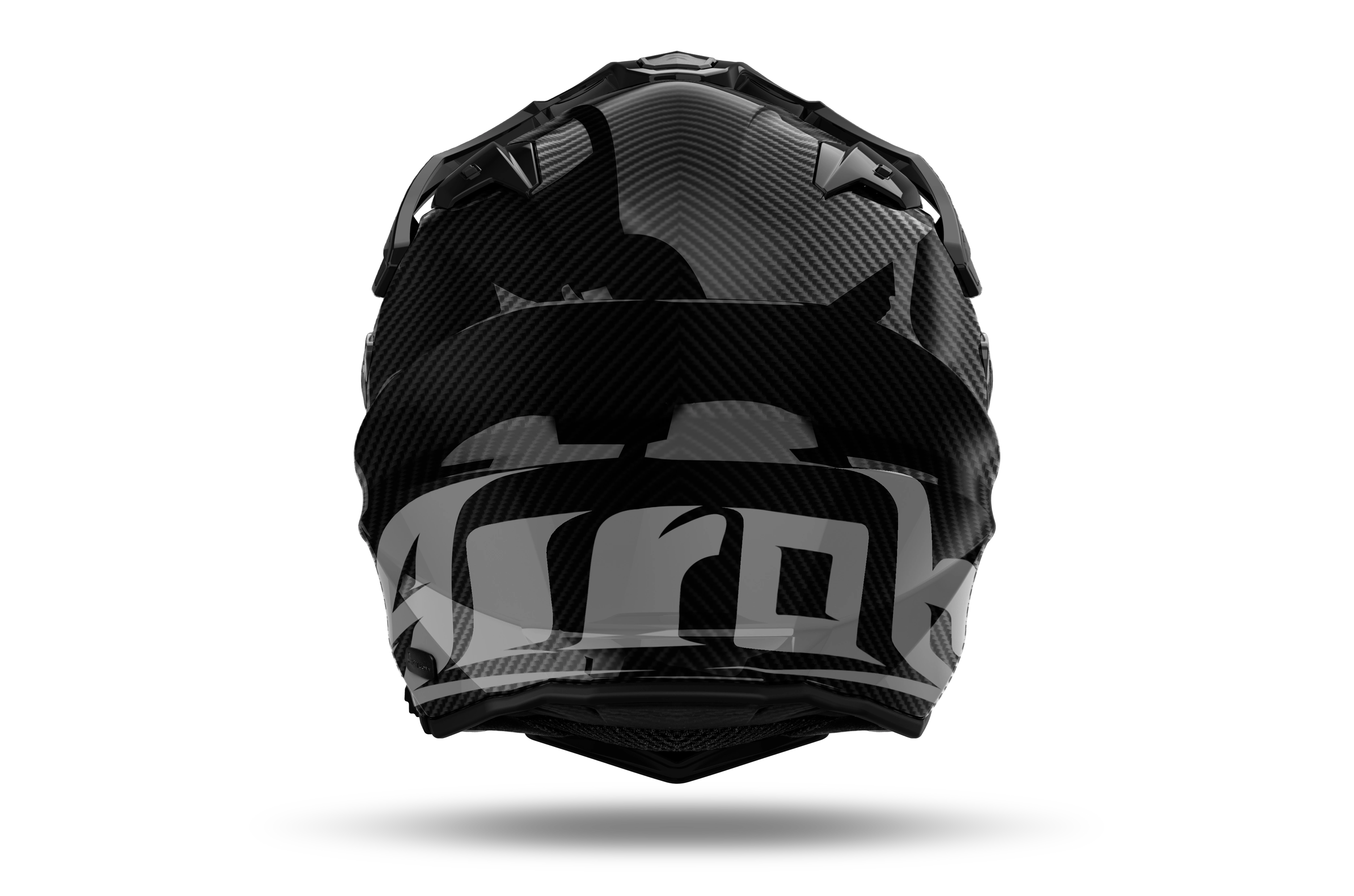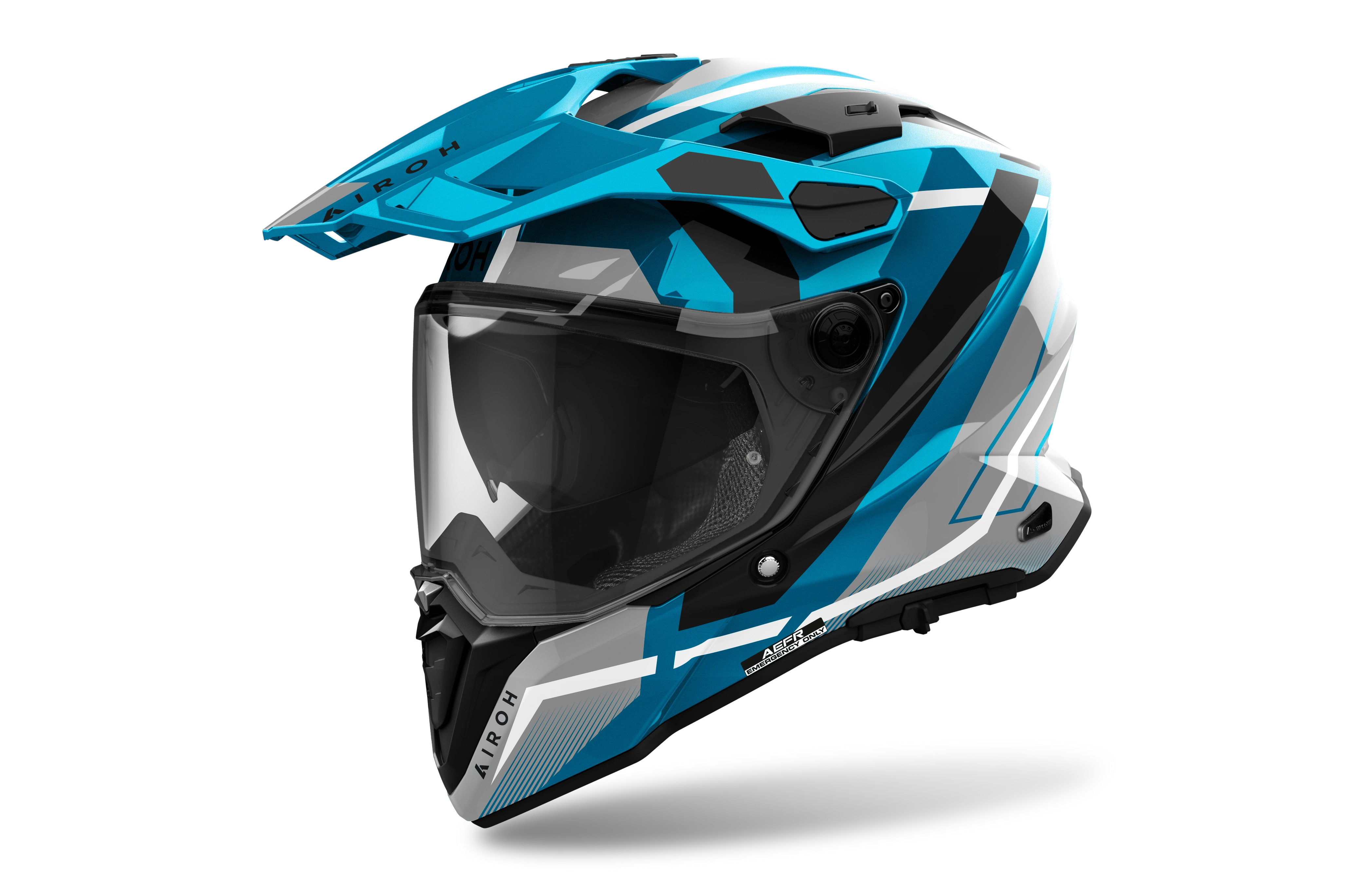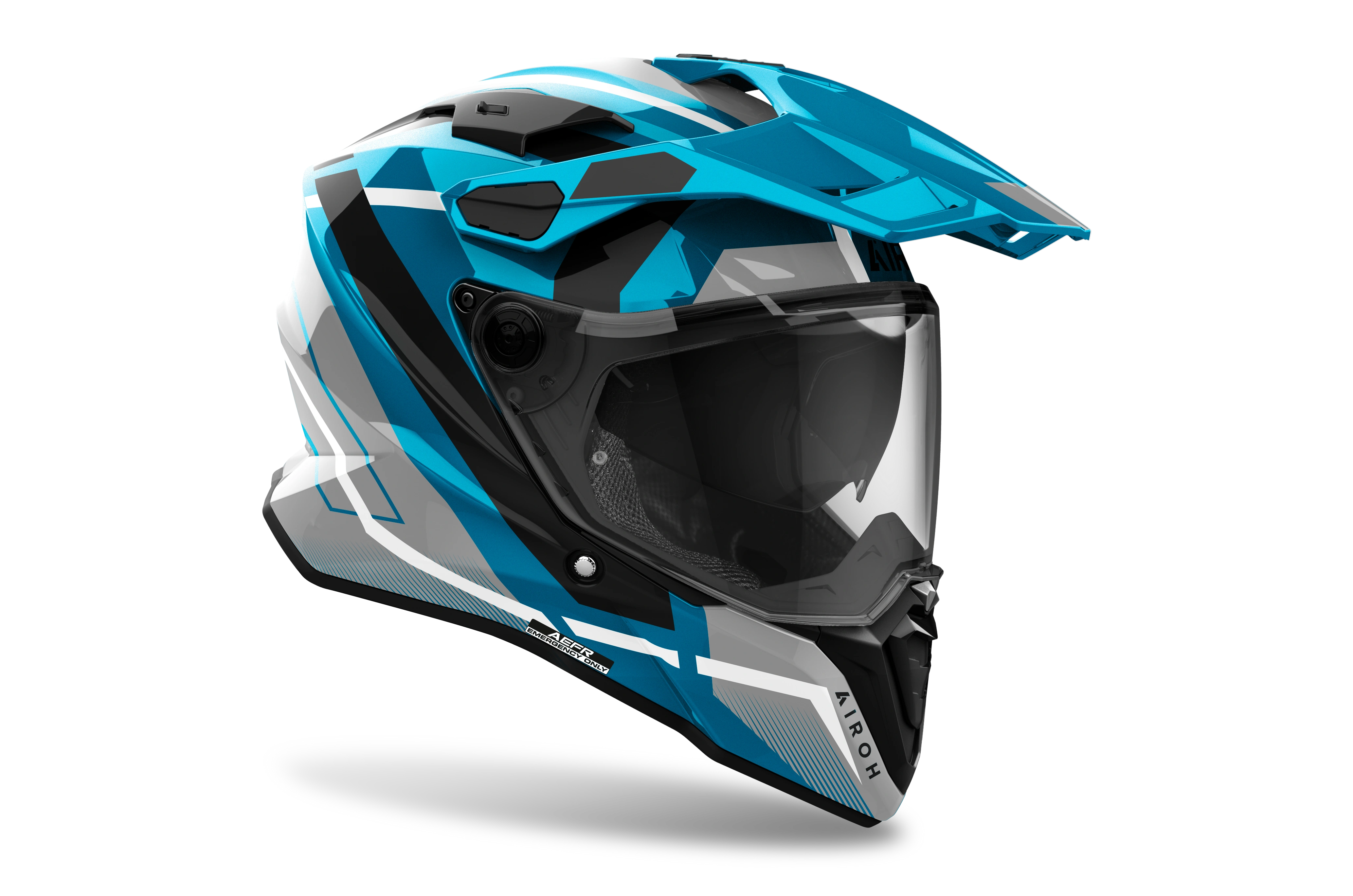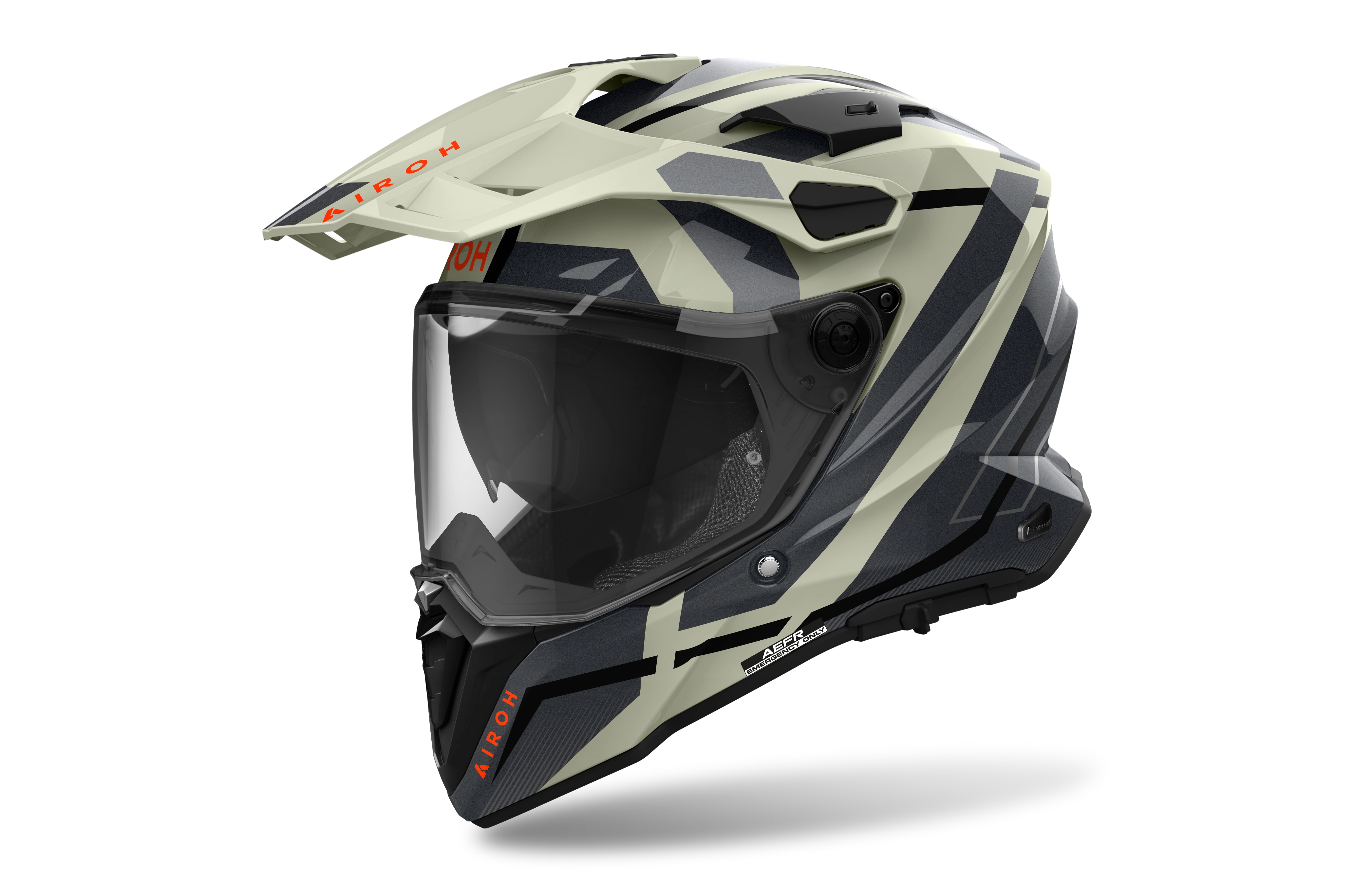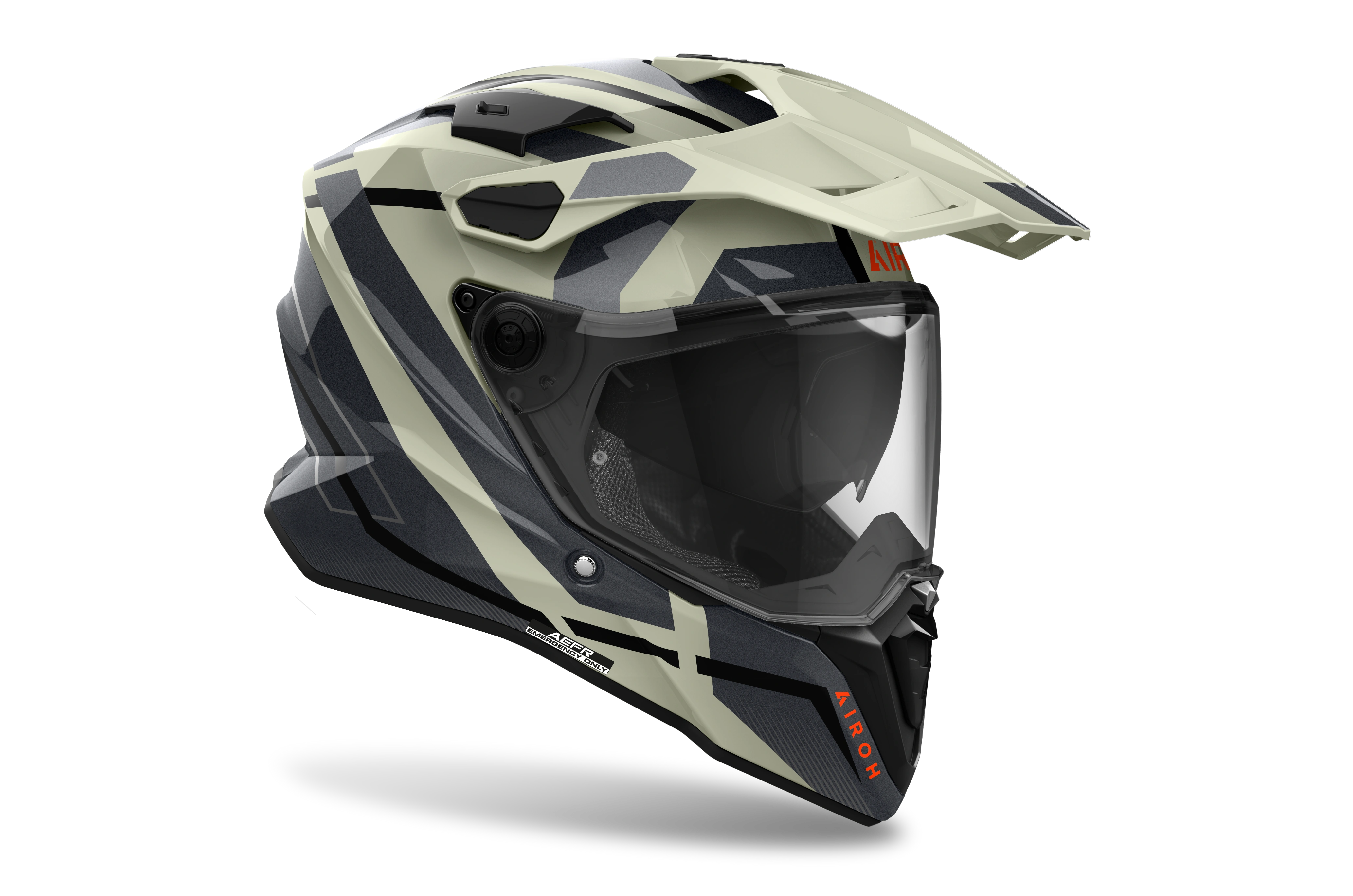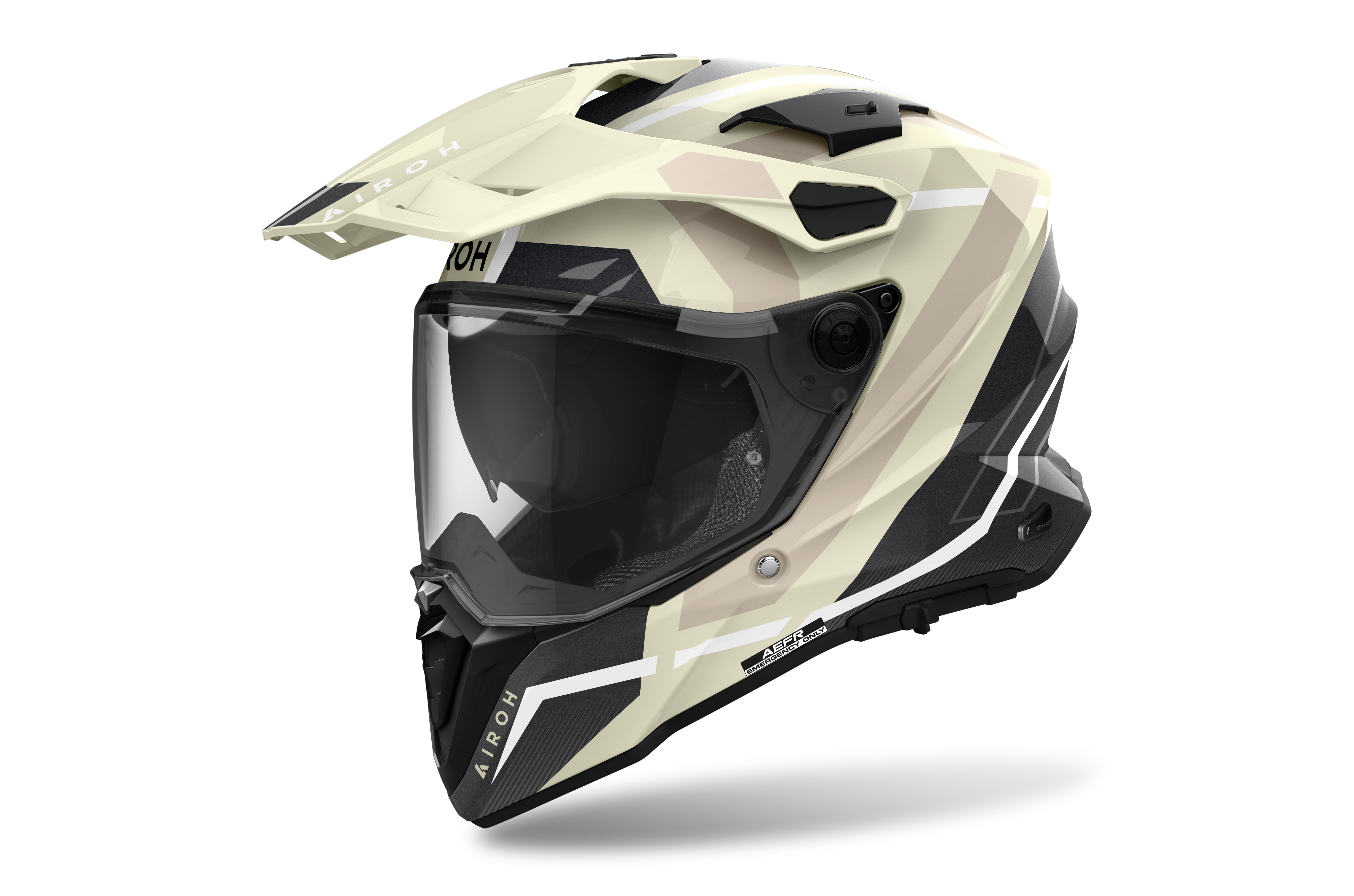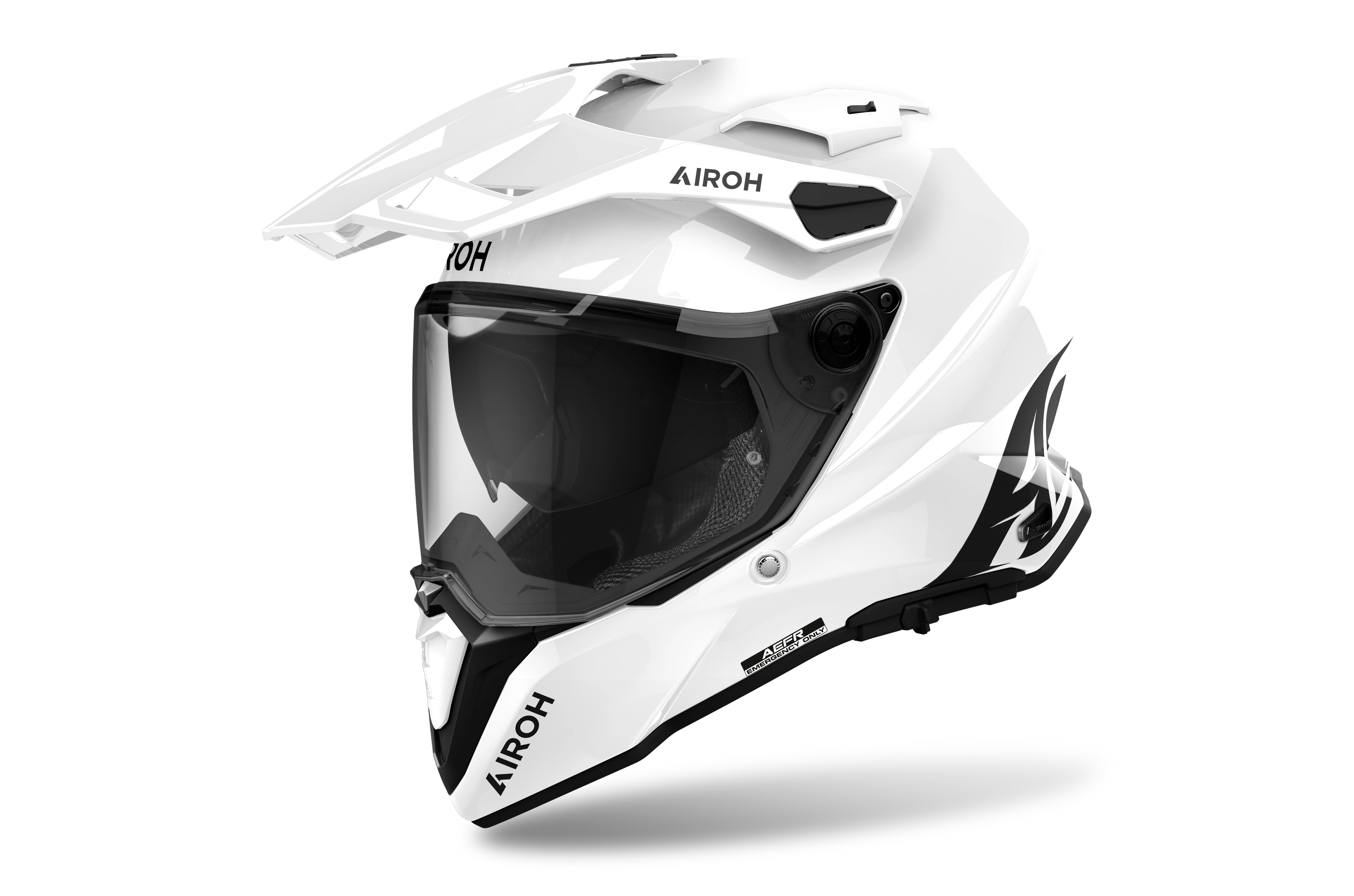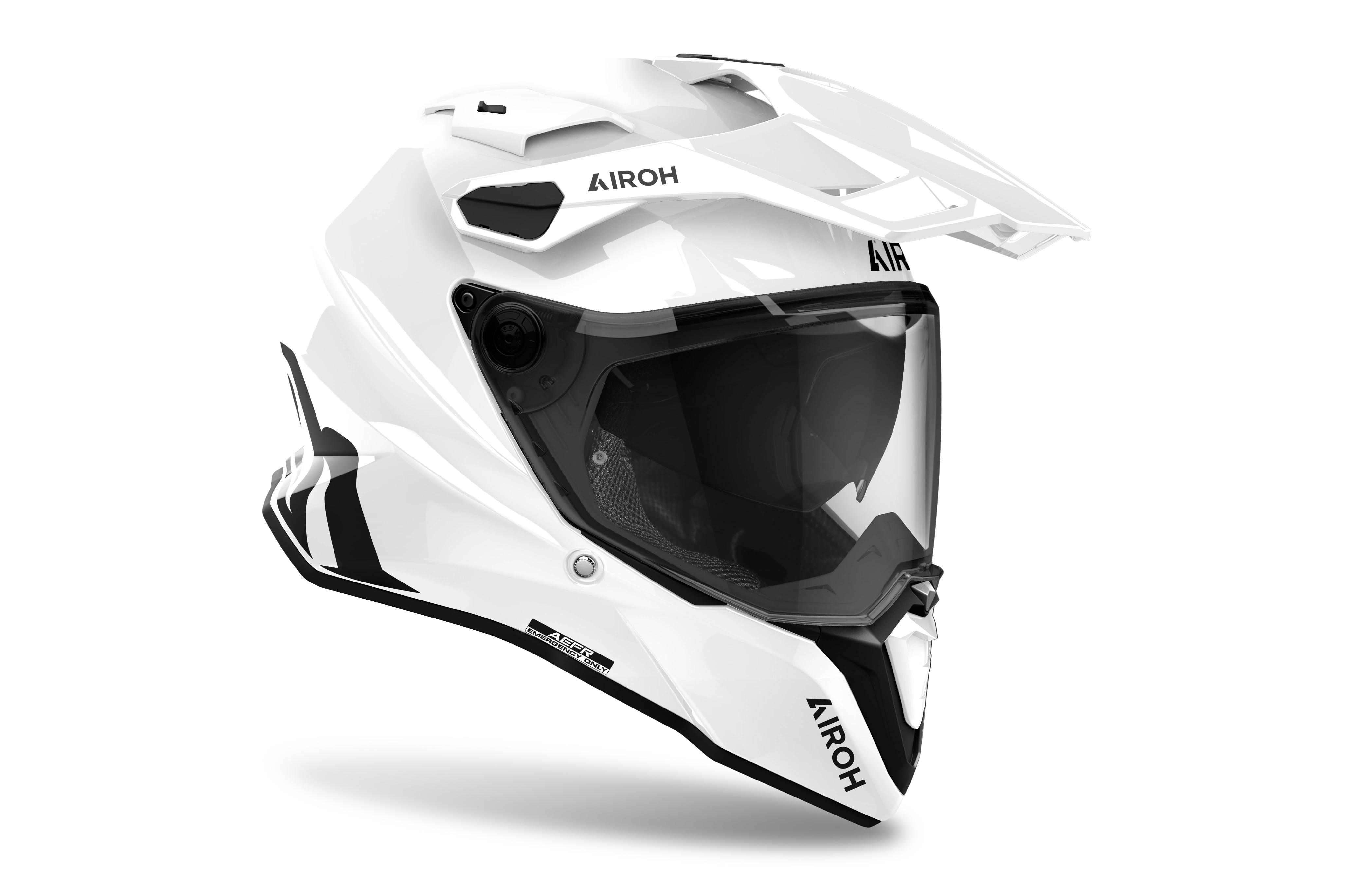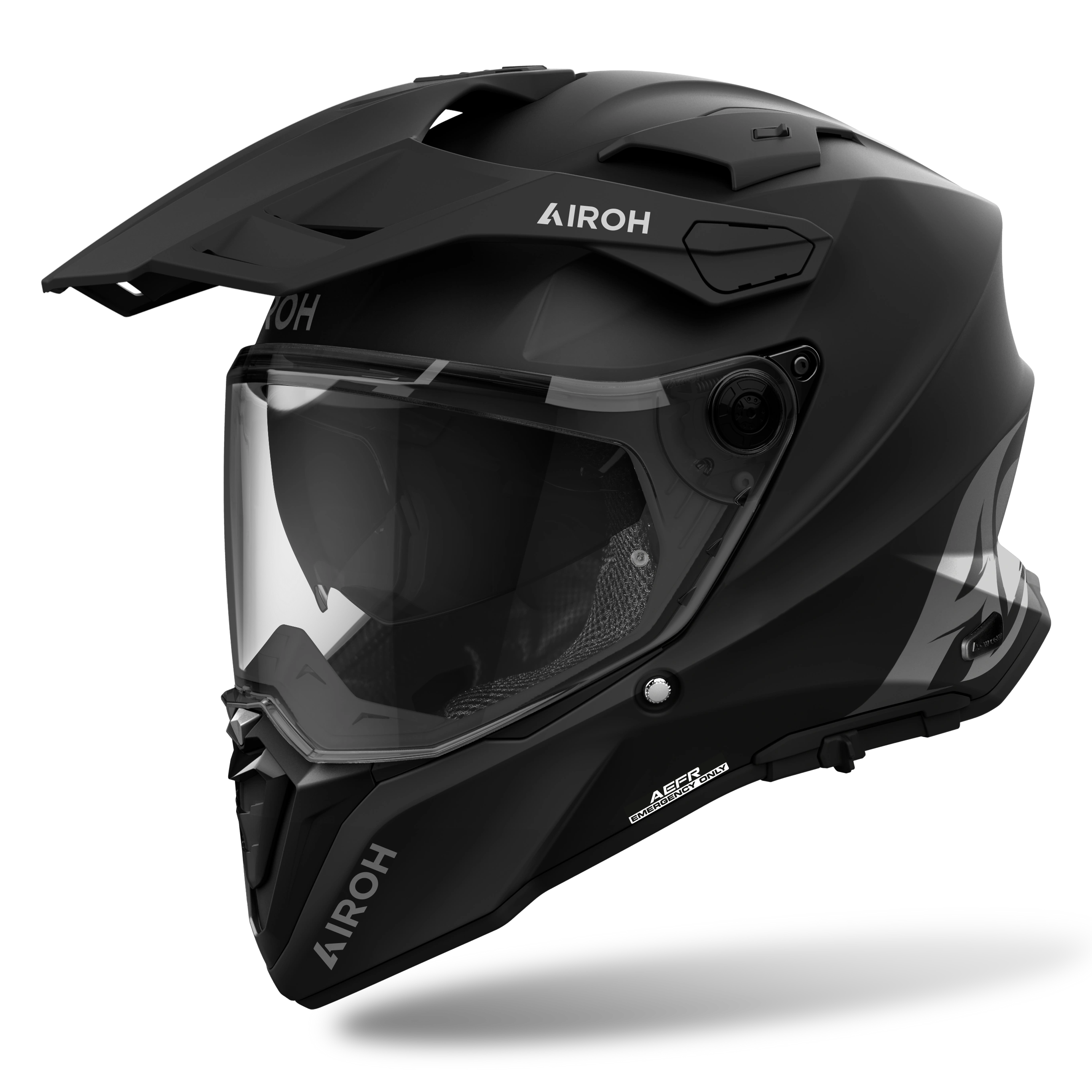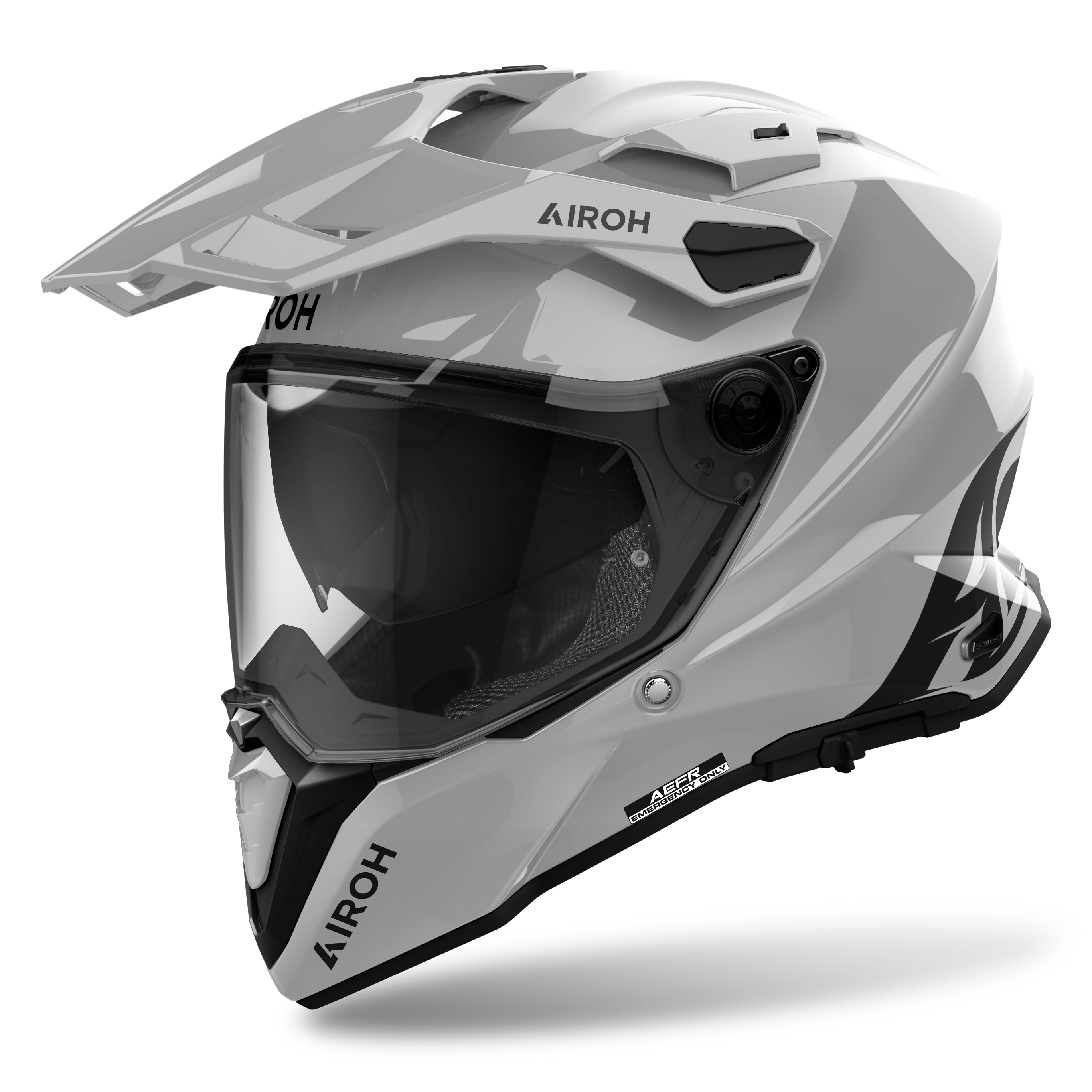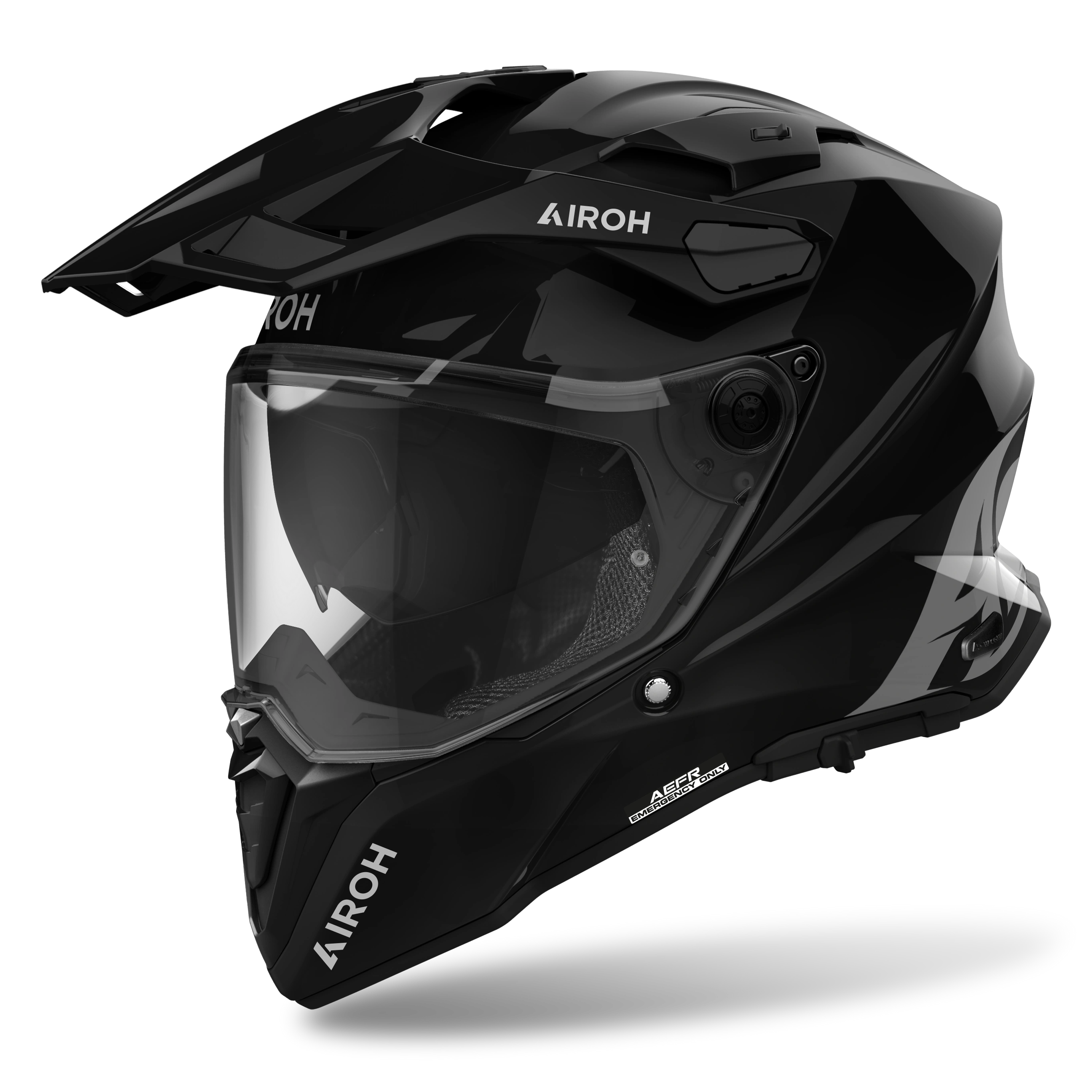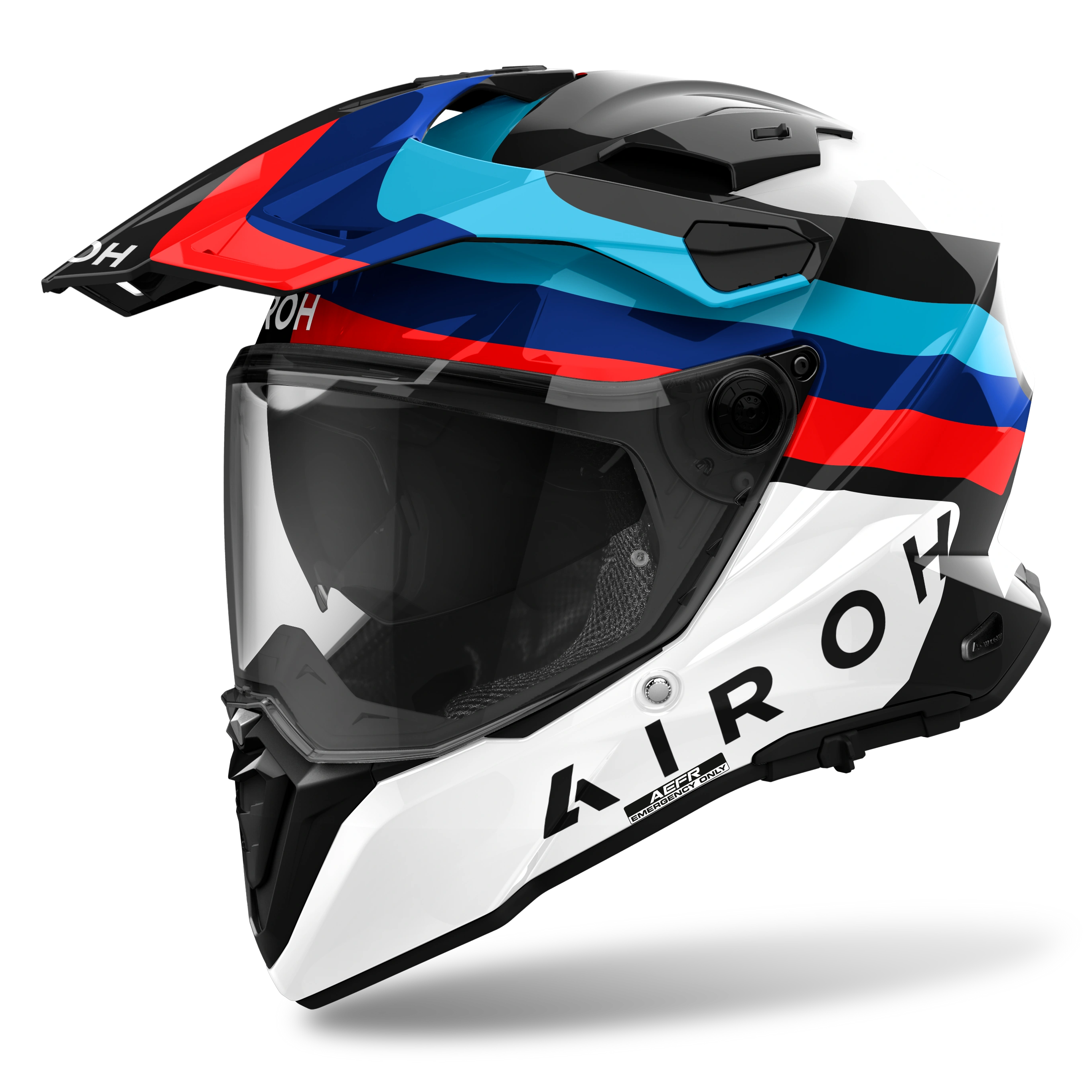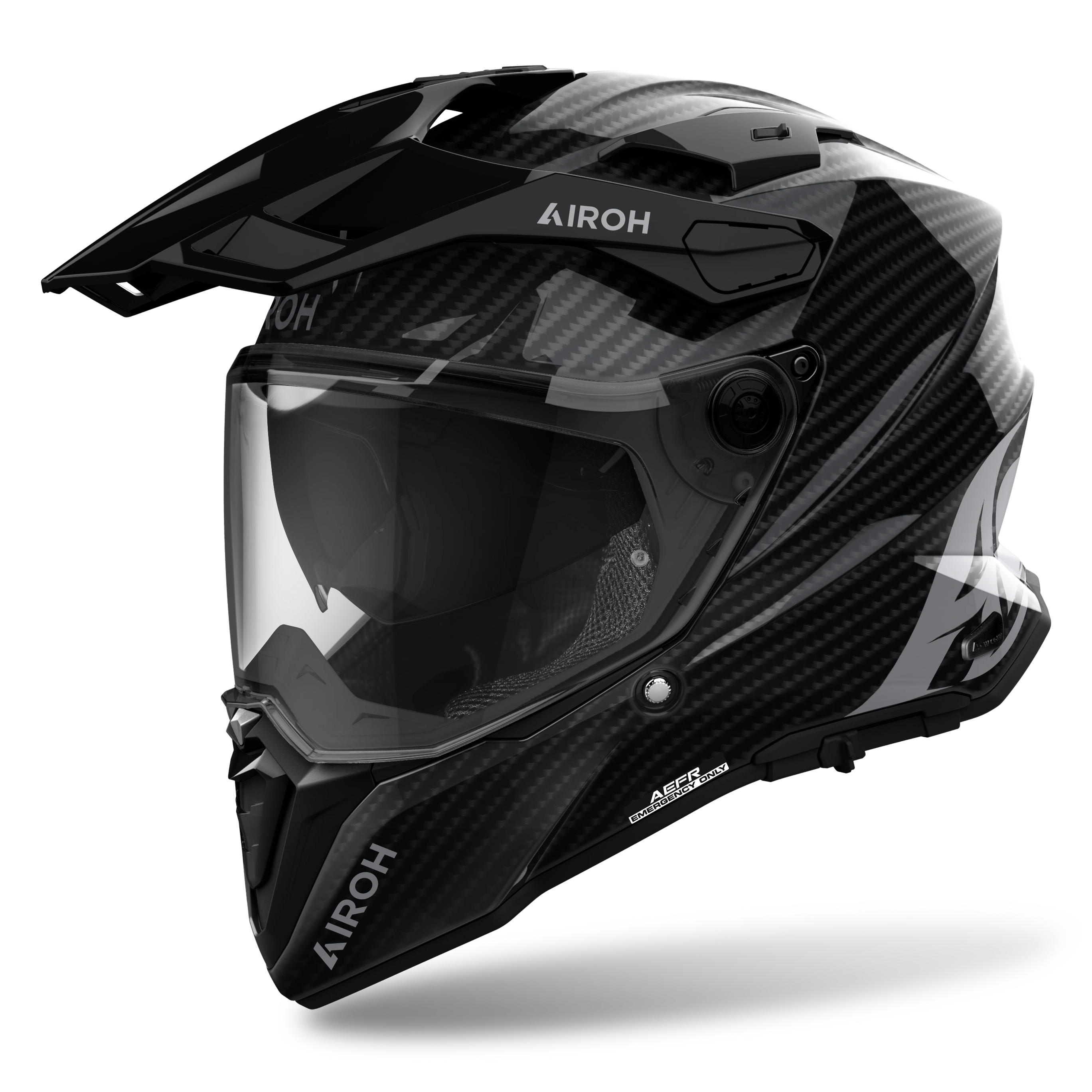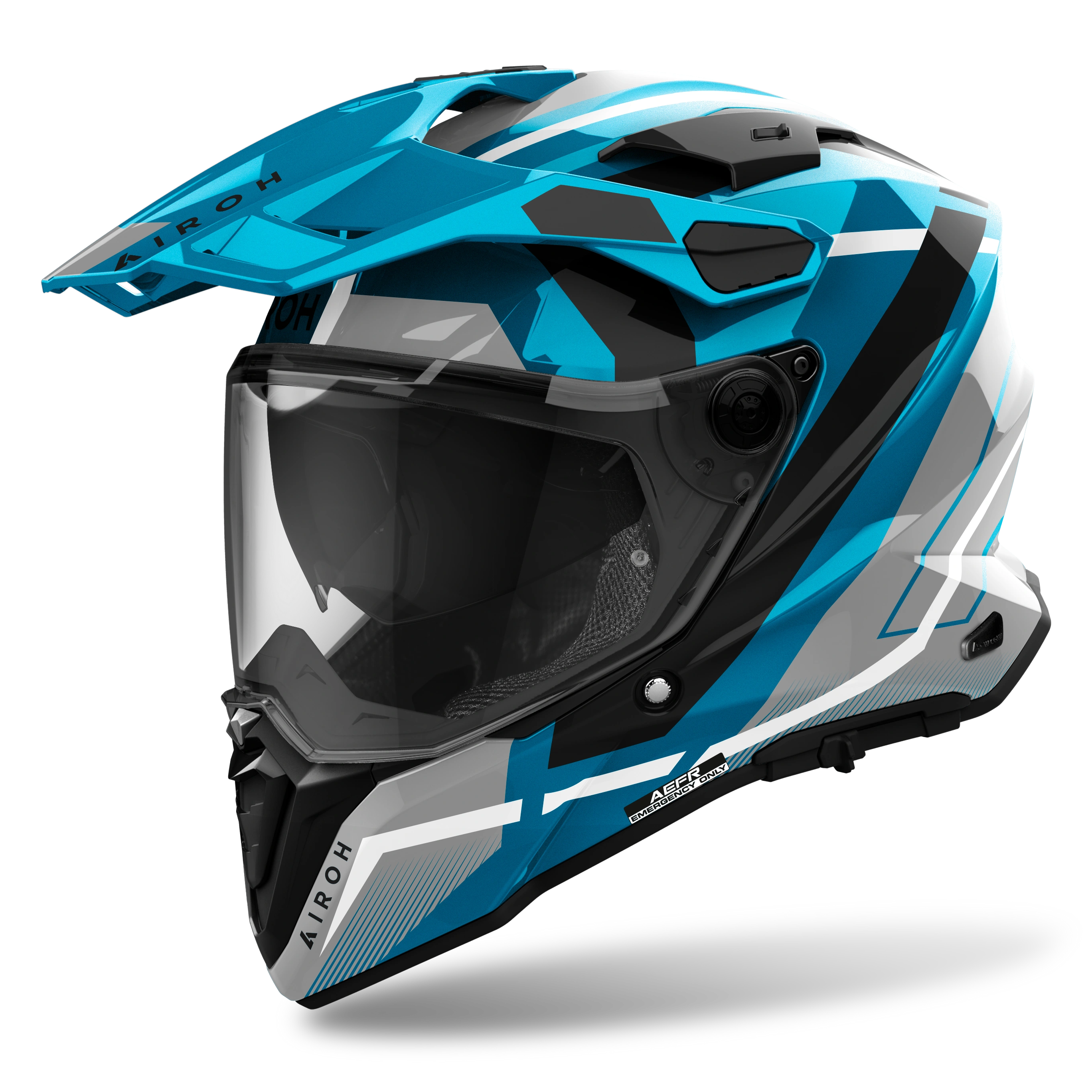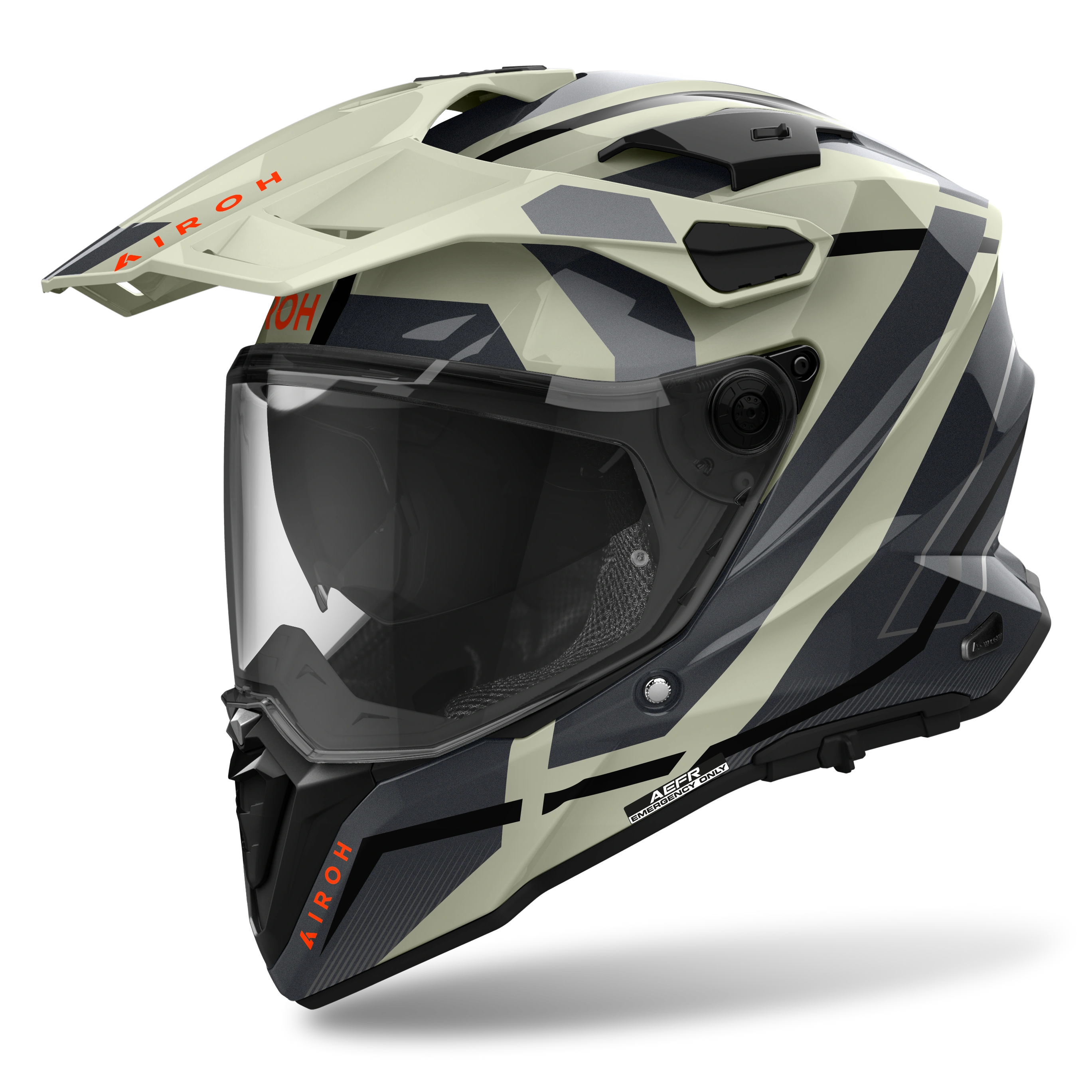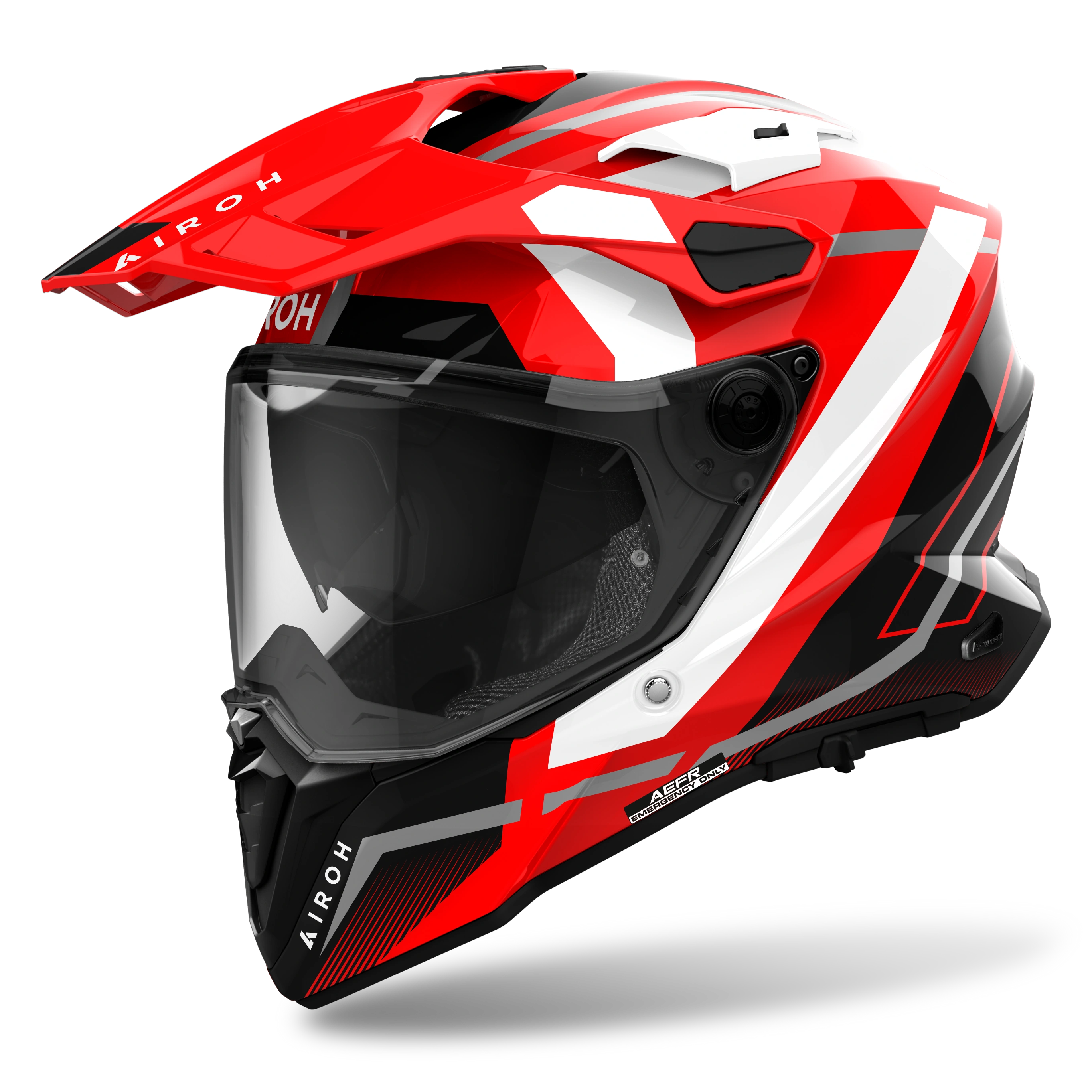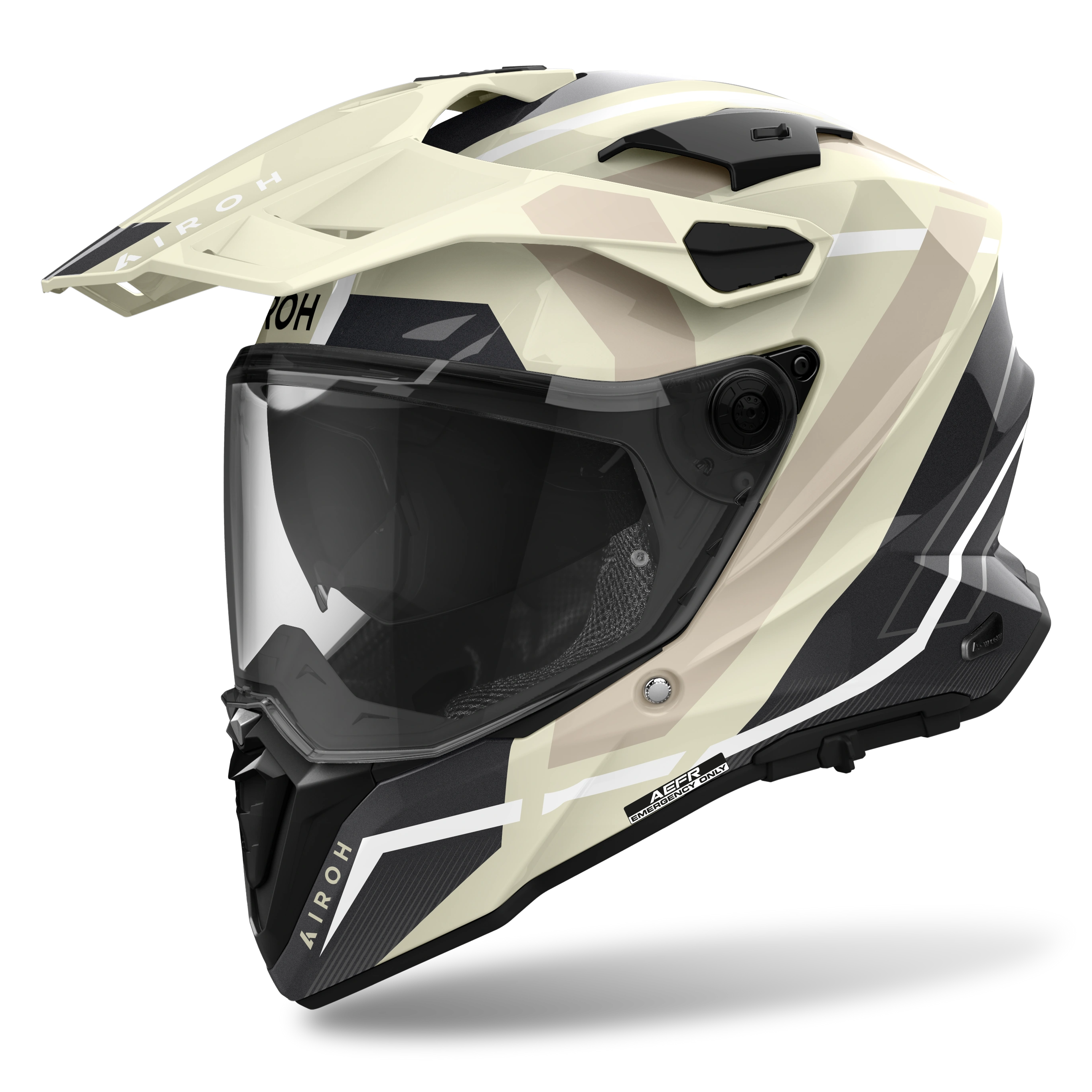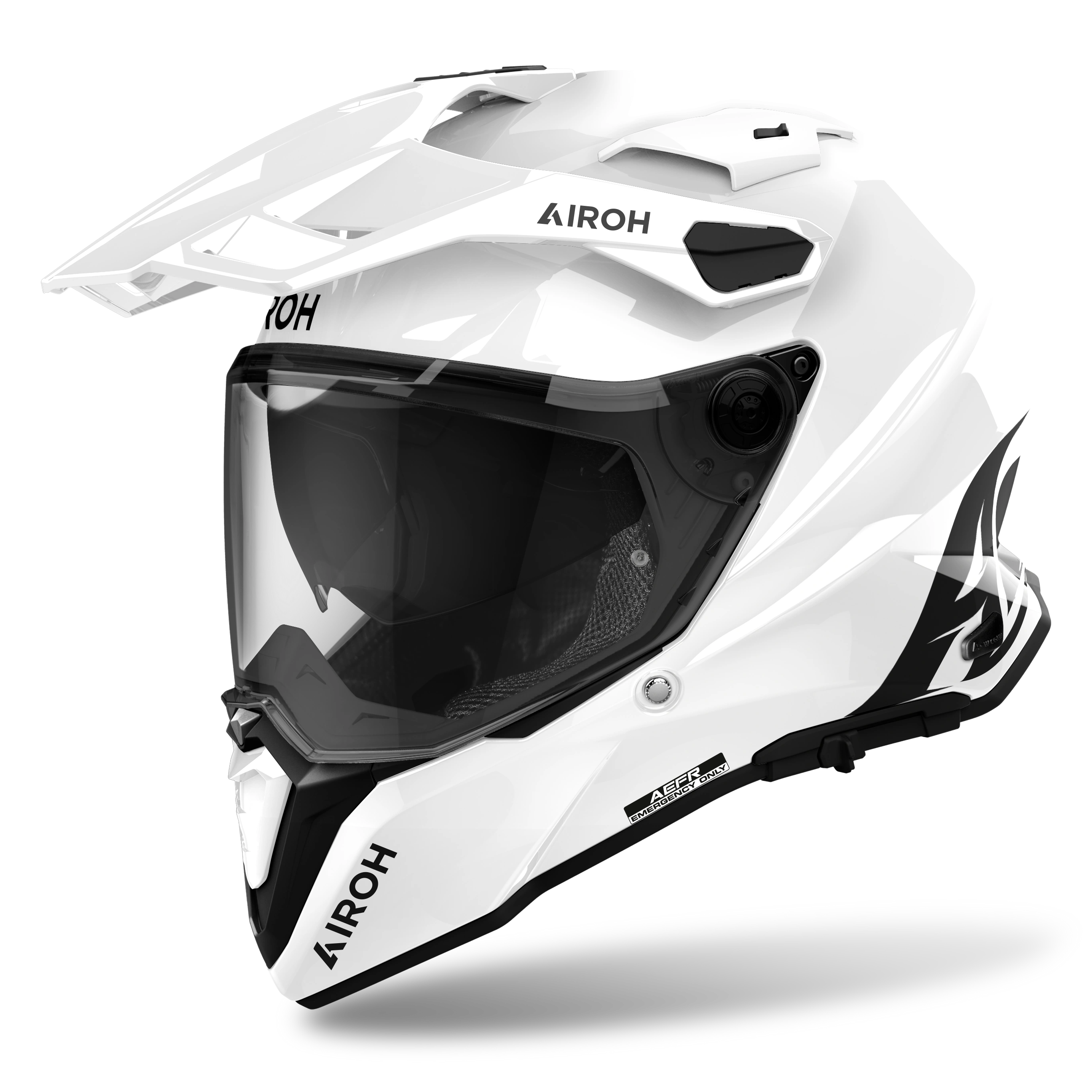FAQ
CLEANING
How to wash the Removable Inner-lining?
To correctly clean your motorcycle helmet, the focus should also be on the inner lining, both crown padding and cheek pads. The lining that comes into contact with your head is actually completely removable and washable, even in the washing machine. To have a perfect cleaning, you have to follow our instruction, step by step. First of all, carefully remove the liner and the cheek pads from the inner shell. If in doubt, check the instruction manual or the airoh.com website. At this point you have two options: hand washing or machine washing!
In the first case you can dampen a microfiber cloth with a solution of water and baking soda, and use it to wipe the dismantled parts several times to clean them thoroughly. For an even more effective cleaning, you may wish to also wipe the internal parts of the helmet in the areas that were previously covered by the inner-lining. It is important for the parts made of polystyrene not to come into direct contact with water since the material is waterproof but also breathable, and thus permeable to water vapor. Instead, if you opt for machine washing, remember to avoid aggressive products and only use mild detergents and do not exceed 30°. After carefully washing the inner-lining, drying it is just as important, following our guidelines.
Let’s start by saying what to avoid! Avoid any direct heat sources. So, no radiators, stoves, hairdryers, etc. Place the inner-lining in a ventilated and dry place and wait for it to be completely damp-free. This step is crucial, even if it’s often underestimated. Even when you wash everything perfectly, you risk creating the ideal environment for mold and unpleasant smells to develop, if you do not dry the various parts correctly.
MAINTENANCE TIPS
Silicone Oil
How do I choose the right helmet size?
When you need to purchase a new motorcycle helmet, whether it is a full-face, off-road, flip-up or any other category, it is necessary to buy it in the right size. This for safety reasons, as only the correct size is able to best protect the motorcyclist's head in the case of accident, but it is also a matter of comfort, both in terms of fit and maximizing the visibility, ventilation and aerodynamics of the product.
To find and know your size, simply measure your head circumference using a common tape measure, placing it in the temple area, about 2 cm above the eyebrows, then wrapping the head completely trying to keep the tape always at the same height. Once you have obtained a value in centimeters, you need to compare this number with the size tables of the product you want to purchase, available on our site under each Airoh helmet, in the description of each model features of. If your measurement value is between two sizes, it is advisable to choose the smaller one, but in any case, it is always a good practice to physically try the helmet before purchasing.
Once worn, the product should fit perfectly, adhering regularly to the whole head, you may feel a slight compression in the cheek area, near the cheek pads. The real test of fit, however, the one that can really be useful for finding the perfect size for a motorcycle helmet of any category and type, consists in moving the head in all directions, if the product moves excessively, slipping on the head and face, the size could be too big, if instead it remains firmly on the head the size should be the right one. It should also be emphasized that there are products that allow the "customization" of the fit, allowing you to replace the crown padding or cheek pads with a smaller or larger size based on the needs of the biker. Adjusting the fit, it is possible to maximize the safety and comfort of the helmet, this can happen if the size of the shell and the features of the product allow it.
ADULTS SIZES TABLE
SIZE CIRCUMFERENCE IN CM
- XXS51-52
- XS53-54
- S55-56
- M57-58
- L59-60
- XL61-62
- XXL63
- XXXL64
How to optimise helmet acoustic properties?
Any type of motorcycle helmet has its own features that could affect the product noisiness, a clear example is the comparison of a full-face helmet with an urban jet, for obvious reasons, the first will be the quieter of the two, it is exposed to less turbulence while driving thanks to its protection in the chin area. For motorcyclists who are more sensitive to noise, there are some small tricks that could reduce the sounds perceived during a motorcycle trip even at higher speeds.
First of all, it is necessary to have n helmet of the correct size, a product that is too large would leave room for annoying and noisy air vortices inside the helmet. One more trick concern the use of the stop wind and nose cover (where provided) is recommended to reduce the entry of air in specific areas, in the same way, closing the air intakes (when possible) could have several benefits from this point of view, as well as traveling with the visor completely closed. In addition, incorrect installation of Bluetooth communication systems could negatively affect the silence of the helmet, leaving more room for air to infiltrate the product. The type of motorbike and the riding posture also greatly influence the noise, more exposed the biker is, greater the turbulence around the helmet and the perceived noises will be.
How to keep your helmet effective
Cleaning the helmet, as well as its correct drying, are the main rules for the correct maintenance of the product, to know how to wash and dry the inner lining, make the visor shine or polish the outer shell by reviewing the cleaning policy listed above in the FAQ.
There are other guidelines to follow to keep your motorcycle helmet always efficient. A good rule is not to put it on the ground, in addition to being a bad habit in terms of hygiene, it could cause scratches and abrasions that would damage the helmet. It is also not advisable to rest the helmet on the side of the shell, an unstable balance could cause falls and impacts that could compromise the product, not only aesthetically.
For bikers who want to change the look of their travel mate, it is best to avoid spray paints and stickers, especially industrial ones, as they could damage the outer shell, it is also absolutely forbidden to make changes that involve the helmet perforation, as it could compromise its safety.
TECHNICAL SUPPORT & MISC
Is it possible to get a personalized or custom fit helmet?
As for the fit, Airoh helmets cover a wide variety of sizes, in fact, depending on the model, the smallest size we currently have is XXS, which corresponds to a head circumference of 51-52cm, while we reach up to a head of 64cm, a XXXL as the maximum size.
If the helmet model and the size of the shell allow it, it is still possible to adjust the fit of your motorcycle helmet by replacing the crown padding or cheek pads with a larger or smaller size.
Do Airoh® riders use the same helmets as those sold on the market?
Well yes, the #AirohRiders, our world champions and professional riders wear exactly the same motorcycle helmet that can be easily found on the market. The only element that could vary is the graphics, especially if the rider has a contract with an energy drink or particular sponsors, or if he requires a special decoration for a specific race, for everything else it is exactly the same Airoh helmet that you can also find on this website. What are you waiting for? Feel like a world champion, choose your hero's helmet!
What are pinlock original® lenses?
For some helmet models, Airoh provides Pinlock lenses inside the helmet (included in the purchase price) or as an aftermarket accessory. What are they? This product, devised and marketed by the Dutch company it takes the name from, comprises a hydrophobic coating with a silicon edging to prevent fogging, as it creates a sort of inner tube once placed inside the main visor. Silicone allows for perfect adhesion of the main visor while ensuring stability and preventing the infiltration of dust and water. This system creates a vacuum chamber that prevents condensation from forming because of the difference in temperature between the inside and the outside of our helmet, especially during the colder months.
Can I buy an ECE certified helmet in the United States?
ECE-rated Airoh® helmets are not offered for sale within the United States or through this website.
SAFETY
Does the helmet have an experation date?
Currently, our highway code does not provide any “expiration date” for motorcycle helmets. The “duration” of a safety device like this varies mainly according to the use, both in terms of quantity and quality. However, it must be considered that the materials used for helmets production are subject to normal wear and tear, therefore it is a good rule to periodically check the condition of the product by carefully analyzing its integrity, as well as always keeping it clean and following the rules of proper maintenance.
Deep scratches on the shell or visor, stains that have not been cleaned in time and that have become persistent, worn and bruised straps and inner linings can be alarm bells, in these cases it is good practice to replace the damaged parts or, if this is not possible, change the helmet directly. In case of an impact or accident, however, it is good practice to check the helmet integrity as soon as possible. In this sense, specialized retailers can provide a valid opinion and, if they consider it appropriate or necessary, they could decide to send the crashed helmet directly to us, in our factory, for a further and more accurate check.
These tests are essential to ensure that the product has not suffered structural damage, fulfilling their function of absorbing the energy generated by the impact. If problems of this nature are found, the helmet must be replaced as it is no longer able to guarantee the original safety and protection standards.
Can I still use It after an accident?
It is now time to face a delicate and rather controversial subject that is nevertheless extremely important for your safety. In any motorcyclist’s career, whether we’re talking about a MotoGP champion or a teenager dealing with their first motorcycle, sooner or later you need to allow for a fall!
So…what should you do if your helmet gets banged? The golden rule is to have it checked by qualified personnel. Specialised dealers can give you their valuable opinion and, should they deem it necessary to examine it further, will send it directly to the manufacturer. Should this extra step highlight structural damage in addition to aesthetical ones, the helmet will need to be replaced.
Bear in mind that the energy produced by the collision is absorbed through the complete or partial breakage of the outer and inner shell. The problem is that this type of damage is not visible to the naked eye because of how the product was constructed.
Which retention system should I use?
The retention system is usually linked to the type of helmet; helmets designed for racing (on/off road) often feature a double D fastening device, while helmets dedicated to touring or urban commuting more frequently have a micrometric buckle. In reality this is not a rule, simply common practice.
For example, helmets designed to be used on race circuits or tracks require a double D fastening device, which is considered less likely to accidentally unbuckle. On the other hand, helmets that are more intended for tourist use, such as the modular, flip-up, jet or demi-jet helmets, often use micrometric buckles, as they are more straightforward and more practical to use.
Both systems are safe and in line with the Highway Code and can be personalised and adjusted to perfectly adapt to the consumer.
In any case, the most important thing is to fasten your helmet. Unfortunately these days you still see many people with their helmet on, but unfastened! For Airoh safety is priceless.
Wearing it without fastening it correctly is like not wearing it at all! In the unfortunate case of an accident or an impact, the helmet can in no way do its job and insurance will not cover any damages! Without mentioning the civil and criminal penalties to be incurred.
APPROVALS
Approval labels; where are the located?
Approval labels must be present inside each product and shall not be removed for any reason as they certify the compliance of the motorcycle helmet with the current regulations. These identifiers are present on the helmet retention system, often sewn under the chin strap cover.
What does double homologation P/J mean?
As shown above, /P and /P-J are very important marks to understand if we can travel with our flip-up/modular helmet in its open or closed configuration. These marks can be found on the type-approval label located on the strap of your helmet.
Flip-up or modular helmets can simply be approved in the full-face versions (with the letter “P ”, or protective) or with double homologation (indicated by the letters “P/J” or Protective/Jet).
If a helmet is approved as full-face helmet (letter “P”) it is not possible to use it while keeping the chin guard open, while if there are both letters then you are allowed to ride with the chin guard in the open position, or even without it if it is modular.
How to read homologation of a helmet.
An interesting subject!
Firstly, NEVER buy or wear a helmet without type-approval labels!
It is obvious that a helmet without any certification is not approved to be used on the road and therefore might not be suitable to protect your head in case of accident!
So let’s delve into details, because knowing your helmet is important! The above-mentioned label is sown on each Airoh strap and gives you very useful information on its manufacture!
It truly works like an ID card and we advise you not to buy helmets without a label!
The homologation of each helmet is only granted to helmets that meet ECE 22-05 and ECE 22-06 standard and that are therefore considered safe and approved for use throughout the E.U.
The way elements are arranged in the label may vary but it must absolutely indicate a series of values.
In short:
E: it means European approval. Therefore the helmet may be used in E.U. countries.
3: it indicates the country where the approval was granted. In this case, Italy
05: it indicates the version of ECE homologation. It may be 03 – 04 – 05 - 06. Version 06 is the latest
01245: it indicates the homologation number
/P: it indicates the type of protection and it may be sub-divided as so:
1/NP - if the helmet has a detachable or movable non-protective chin guard
2/J - if the helmet does not have chin protection
3/P - if the helmet has a chin protection
4/P-J - if the helmet has a detachable or movable protective chin guard, as a combination of the two protection codes
123456: it indicates the serial or production number of the helmet
Before buying a helmet, always check the type-approval label is there and if it’s complete. It is your helmet and your safety, and worth taking seriously!
WARRANTY
How can I submit claims for coverage under warranty?
Any claims under this warranty must be submitted by the customer directly to the retailer where the helmet was purchased, with the defective product and the relative receipt or purchase invoice being presented simultaneously.
FOR THEIR OWN SAFETY AND THAT OF OTHERS, THE CUSTOMER CAREFULLY READ AND FOLLOW THE INSTRUCTIONS ACCOMPANYING THE HELMET, PRIOR TO CONTACTING THE RETAILER.
THIS LIMITED WARRANTY SHALL NO LONGER BE VALID ONCE 2 YEARS HAVE PASSED FROM THE DATE OF PURCHASE.
PARTICULAR ENVIRONMENTAL FACTORS, IMPROPER USE, STORAGE CONDITIONS, ACCIDENTAL IMPACTS, NORMAL INTERIOR AND EXTERIOR WEAR, AND INVOLVEMENT IN ACCIDENTS, EVEN IF OF A LIMITED NATURE, COULD HAVE A SIGNIFICANT IMPACT UPON THE PRODUCT’S MECHANICAL AND PHYSICAL CHARACTERISTICS, THUS COMPROMISING ITS PROPERTIES AND SUITABILITY FOR PROTECTION PURPOSES.
This warranty is valid throughout Europe, and is the only warranty offered by Airoh® in connection with the sale of its products. It does not compromise the rights of the customer, as expressly provided by the regulations implementing European Directive 1999/44/EC.
The provision of services under warranty does not extend the duration of the warranty itself.
Therefore, in the event that the helmet or any of its components are replaced, the replaced product or component remains covered by the original warranty, whose expiry date is based the original helmet’s purchase date.
What does the warranty cover?
If any defect covered by the limited warranty is detected within 2 years from the date of purchase, Airoh® shall repair or replace the defective product through its own distribution network, after the defect has been verified.
Airoh® shall supply all the material and labour deemed reasonably necessary to remedy the reported defect, unless the damage falls within the scope of the items listed in the section below titled “EXCLUSIONS AND LIMITATIONS OF COVERAGE”.
Exclusions and limitations of coverage
This warranty only covers material and manufacturing defects.
Airoh® may not be held responsible for any product defects attributable to any other cause, whether in whole or in part, including (by way of example, without limitations):
damage caused by improper use, neglect and/or normal internal and external wear;
scratches, abrasions, paint chips, or other damage caused to the external painted parts of the helmet due to impacts;
scratches, abrasions, paint chips, or other damage caused to the helmet’s visor due to impacts or lack of proper cleaning;
damage caused by the application of adhesives and/or glues;
damage resulting from accidents;
any changes or modifications made to the helmet by the user or by any third parties;
damage resulting from any kind of paint/varnish applied to the outer shell by the user or by any third parties;
color changes or damage caused by exposure to harmful chemicals;
color changes or damage caused by exposure to sunlight and/or heat sources;
changes in the fluorescent colours used in the graphics on certain models as a result of direct and prolonged exposure to sunlight;
the use of incompatible accessories or other accessories not sold by Airoh®;
Other defects not covered by the warranty include various types of specific and subjective situations that may arise while actively using the helmet such as, for example, comfort issues while riding, or aerodynamic noises.
Airoh® may not be held responsible under any circumstances for accidental or consequential damages (including, without limitation, death and bodily injury) resulting from the failure to observe the requirements contained herein concerning the Airoh® products.
TECHNOLOGIES
ASN
The first thing to do to avoid danger is not to get involved in the first place.
Easier said than done, but not in this case. Because Airoh has introduced the ASN System, a 3-D fabric structure designed to reduce the force transferred to the head on impact.
The ASN System’s 2 outer walls move relatively to each other, dissipating the energy generated by the impact more effectively. It also offers incredible ventilation, a crucial factor in more extreme riding conditions.
AMLS
Airoh has taken the inner lining disassembly concept to an higher level with its AMLS (Airoh Magnetic Lining System).
The crow padding has five strong magnets (three on the front and two at the rear), each cheek pads owns three; allows to easy remove inner lining for washing, providing also stability and comfort in every conditions of use.
AMS²
AMS²
AMS² is the result of in-depth studies to determine the most frequent dynamics in accidents and, consequently, the characteristics of the collisions that a helmet has to absorb, to find the most suitable solution for a rider’s safety.
This state-of-the-art system aims to make the inner shell of the helmet even safer; it actually uses a pair of superimposed polystyrene hemispheres with differentiated density, separated by a unique system of silicone inserts.
The silicone elements allow the shell to move in case of angular collisions, so that it can follow the direction of the impact, considerably reducing the amount of energy transmitted directly to the head of the rider wearing the helmet.
AMS² EVO
AMS2 EVO is an exclusive Airoh patented system, the result of in-depth studies to determine the most frequent dynamics in accidents and, consequently, the characteristics of the collisions that a helmet has to absorb, to find the most suitable solution for a rider’s safety.
Features:
- Reinforced inner shell
- Elastomer damping elements
- Top inner Shell
- Main inner shell
- Sherical relative movement
- Patented technology
- Improved comfort
- Increased inner ventilation
- Increased absorption in rotational impacts
- Increased absorption in low speed linear impacts
ADDITIONAL INFO
Blast XR1 booklet
Download safety instructions for proper use and maintenance of Blast XR1 Goggle.
Cardboard
Download here the Airoh CHROME Cardboard.
CHROME Cardboard
Warning
Airoh safety recommendations
- Think before putting your helmet on!
- No helmet can protect you from all possible impacts, either at low speeds or high speeds
- Before using the helmet, adjust and close the retention system
- Helmets are designed to absorb only one impact
- Clean your helmet very carefully
- Do not modify your helmet
- Do not tamper with your helmet
- Do not repaint your helmet
- Always check the helmet before wearing it
- Always keep the visors in good condition
Get in touch
Have additional questions about our products, or a general enquiry?

